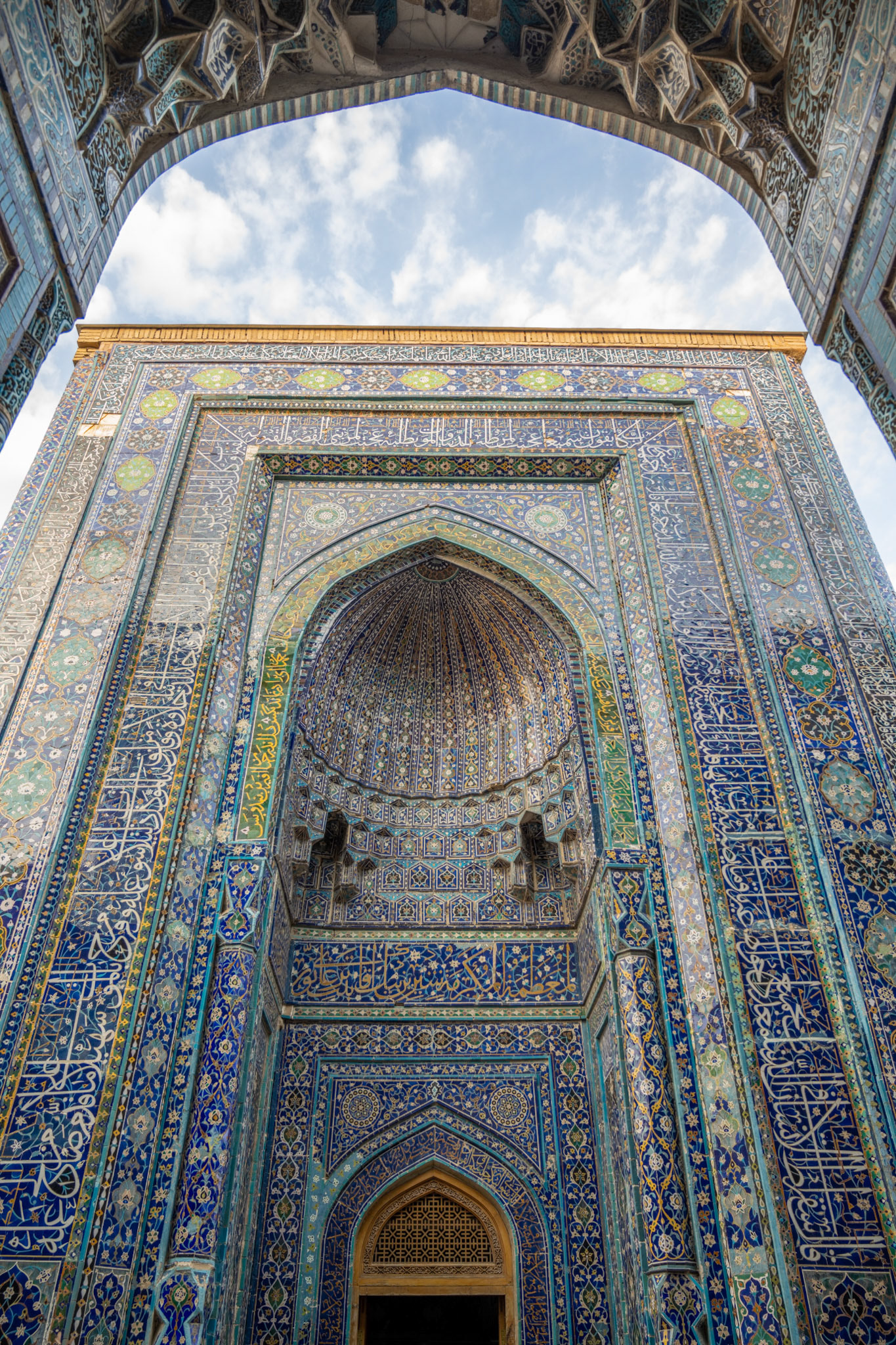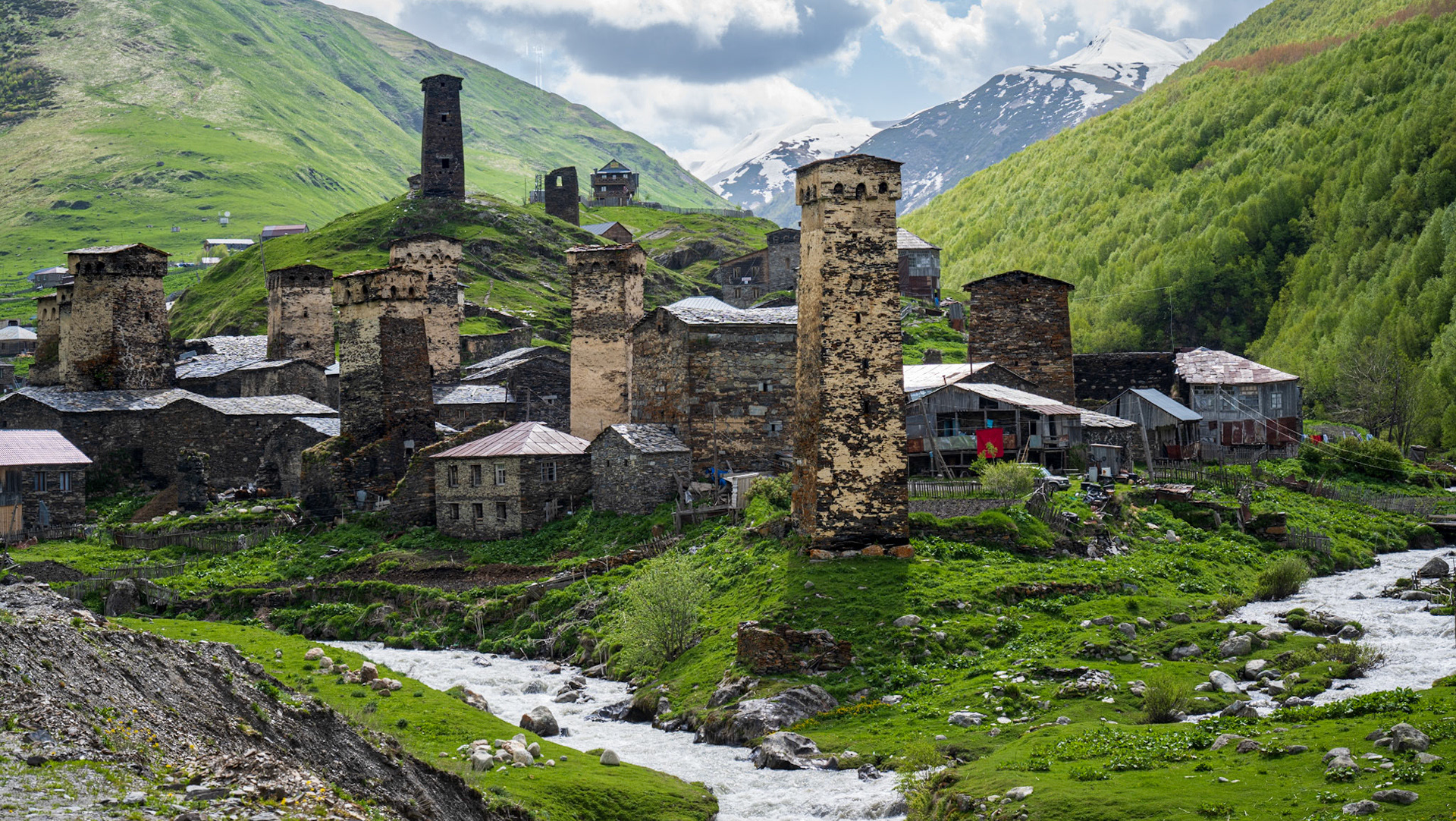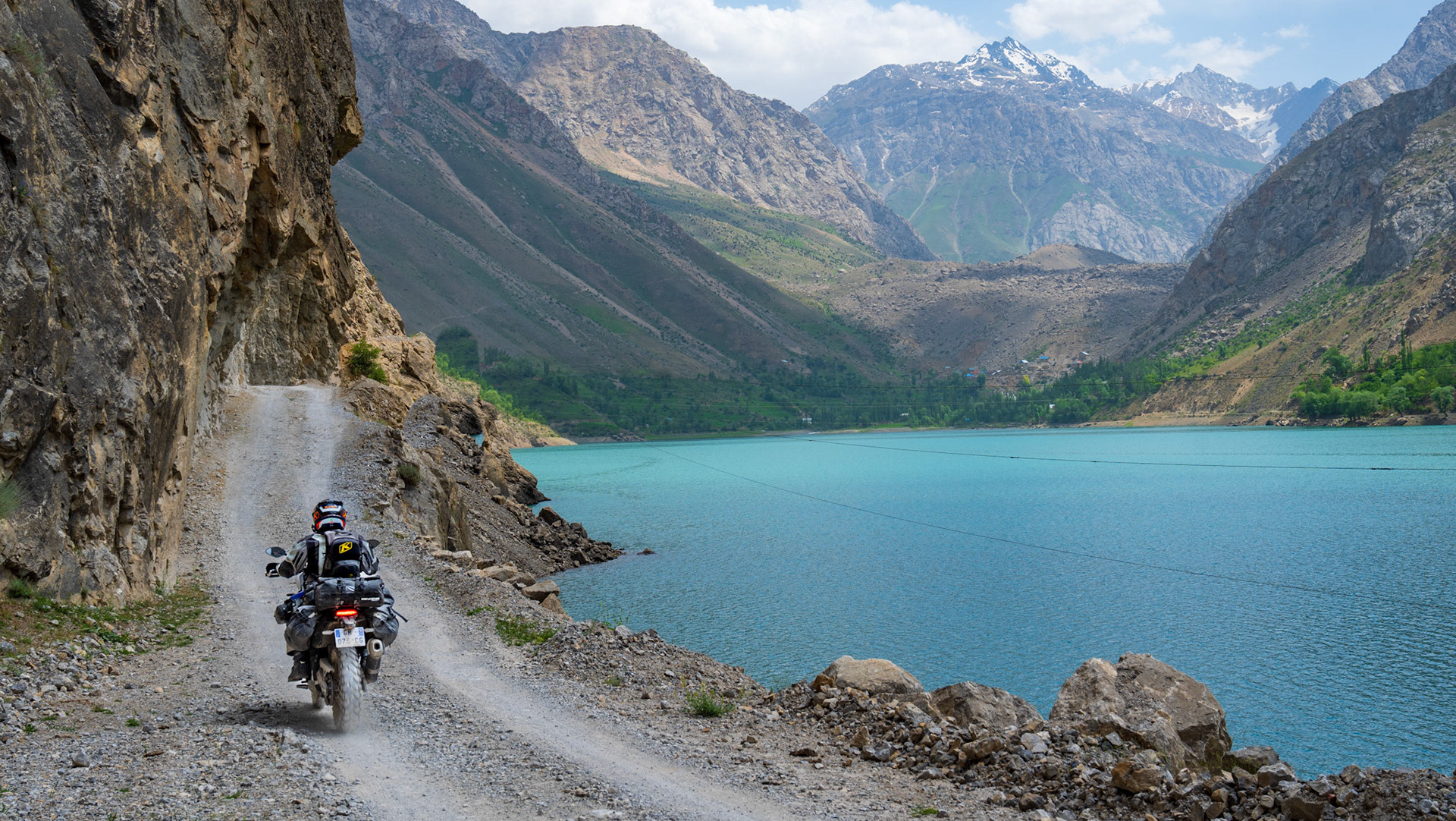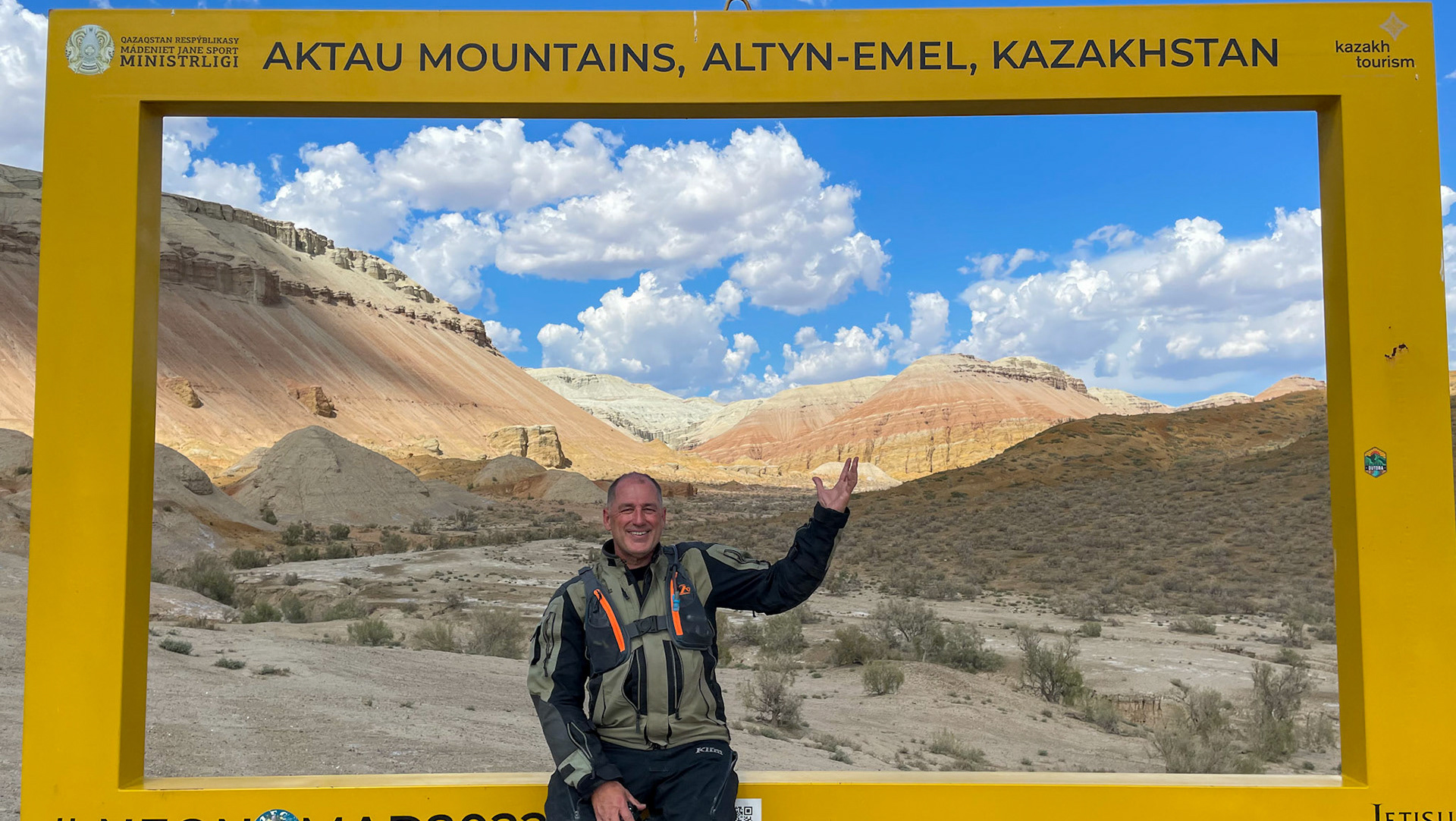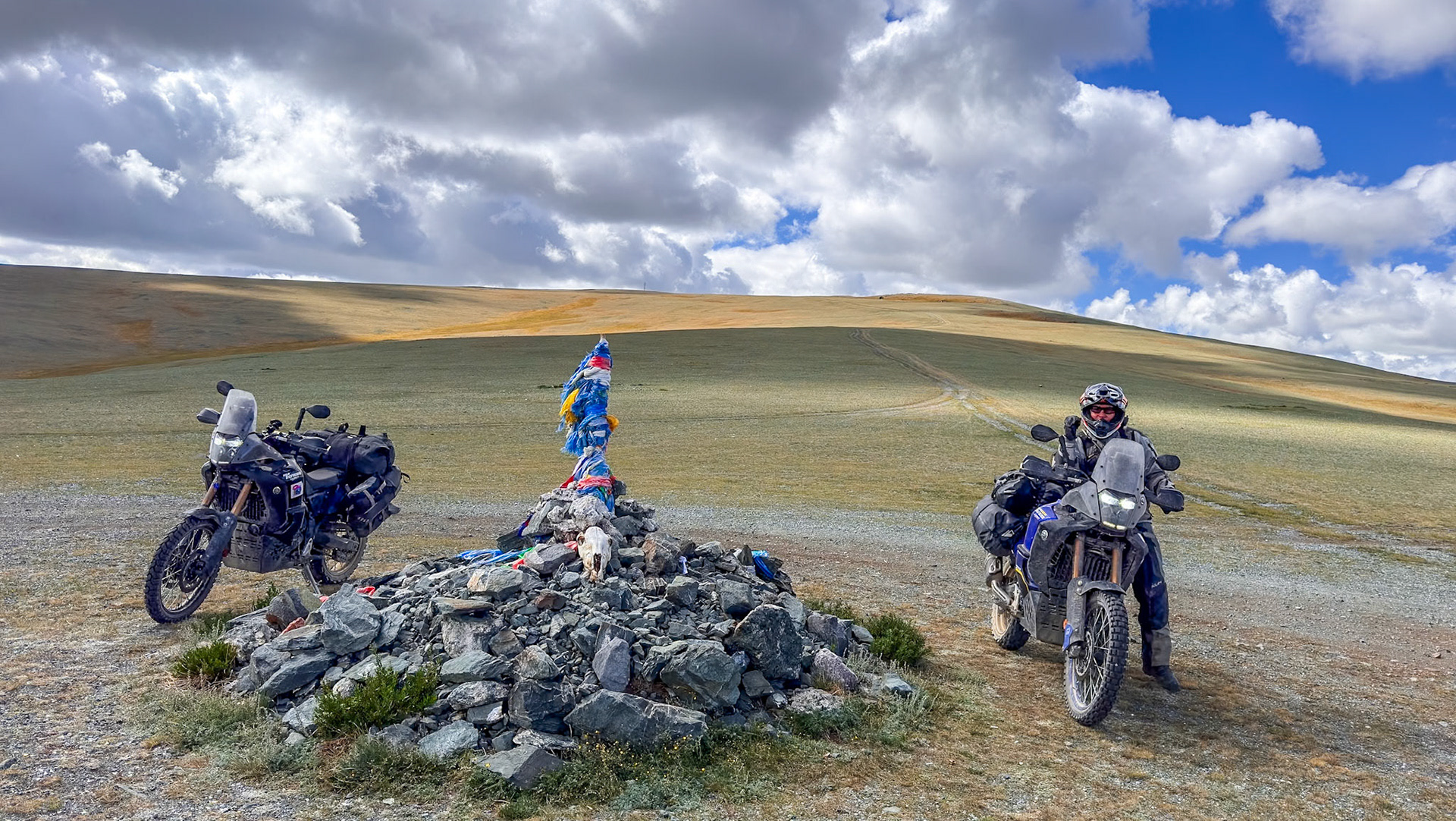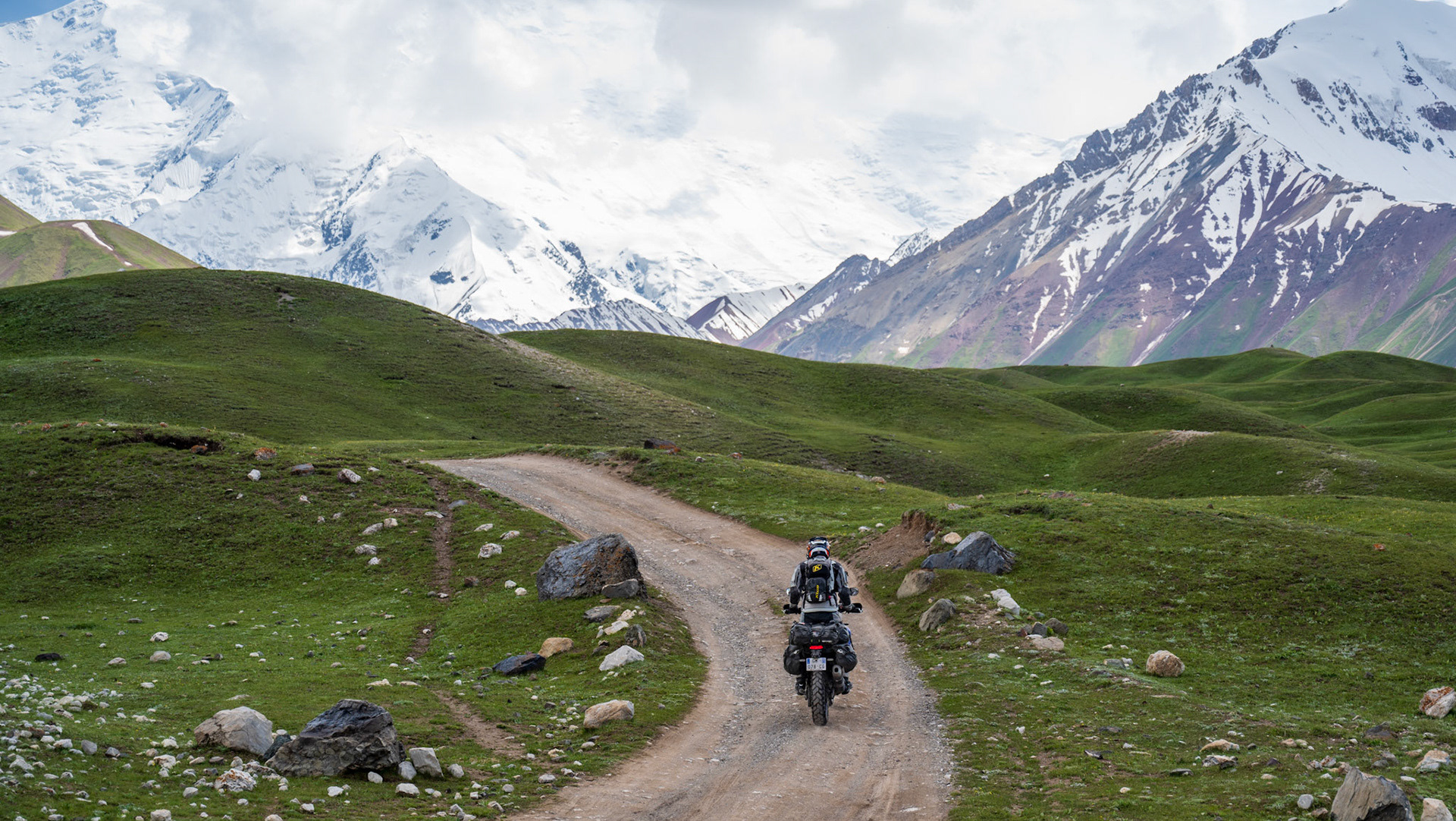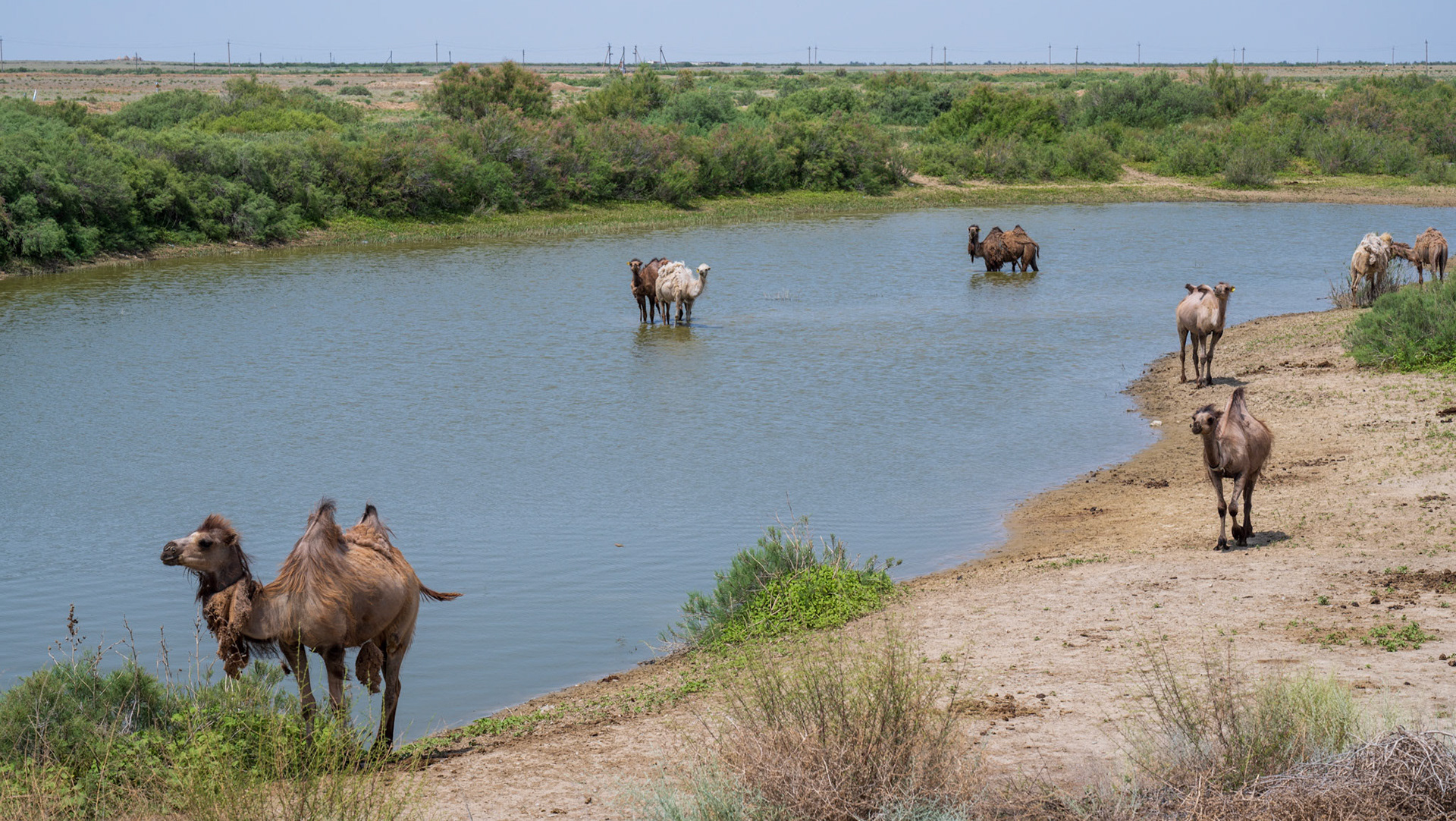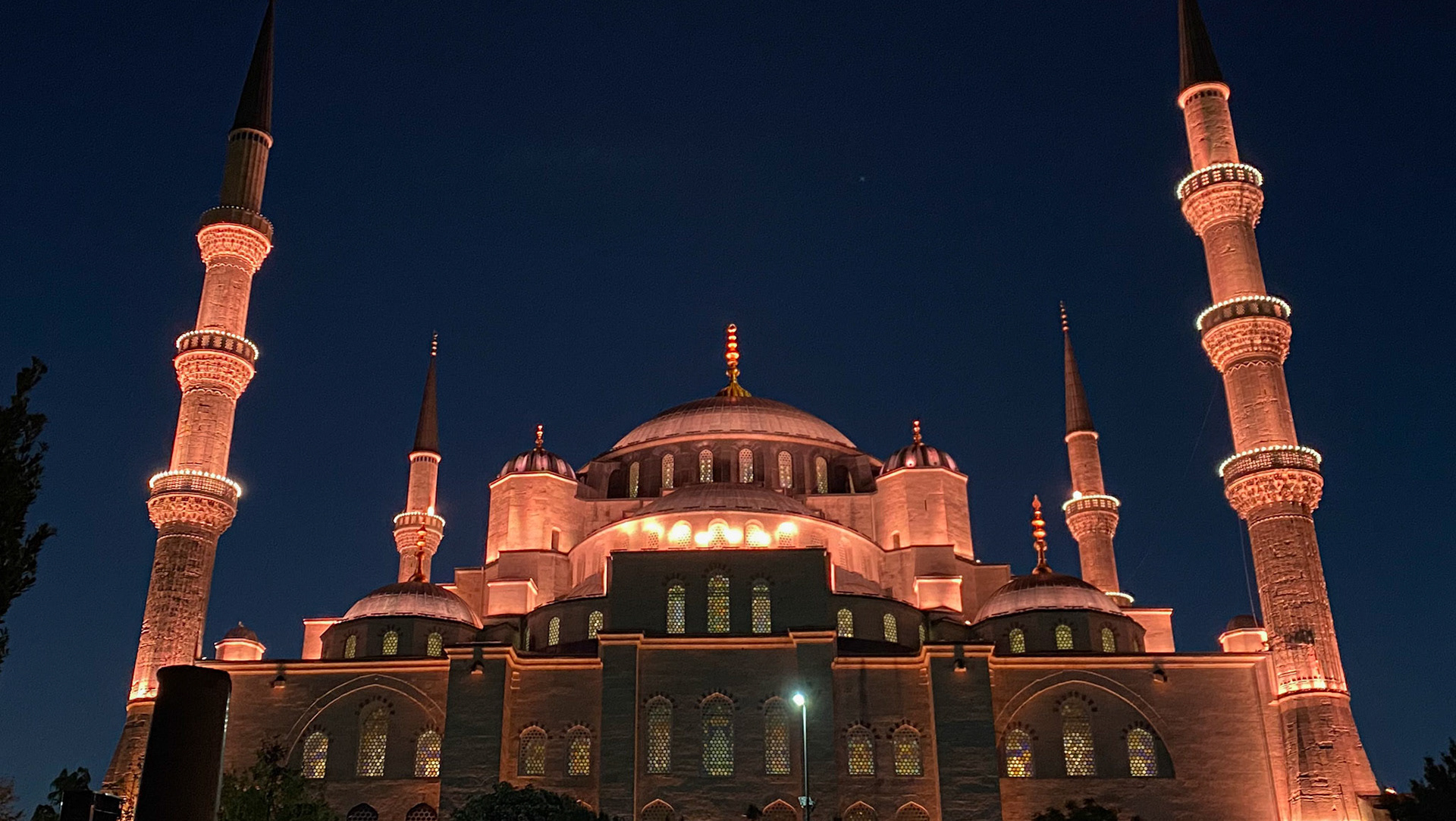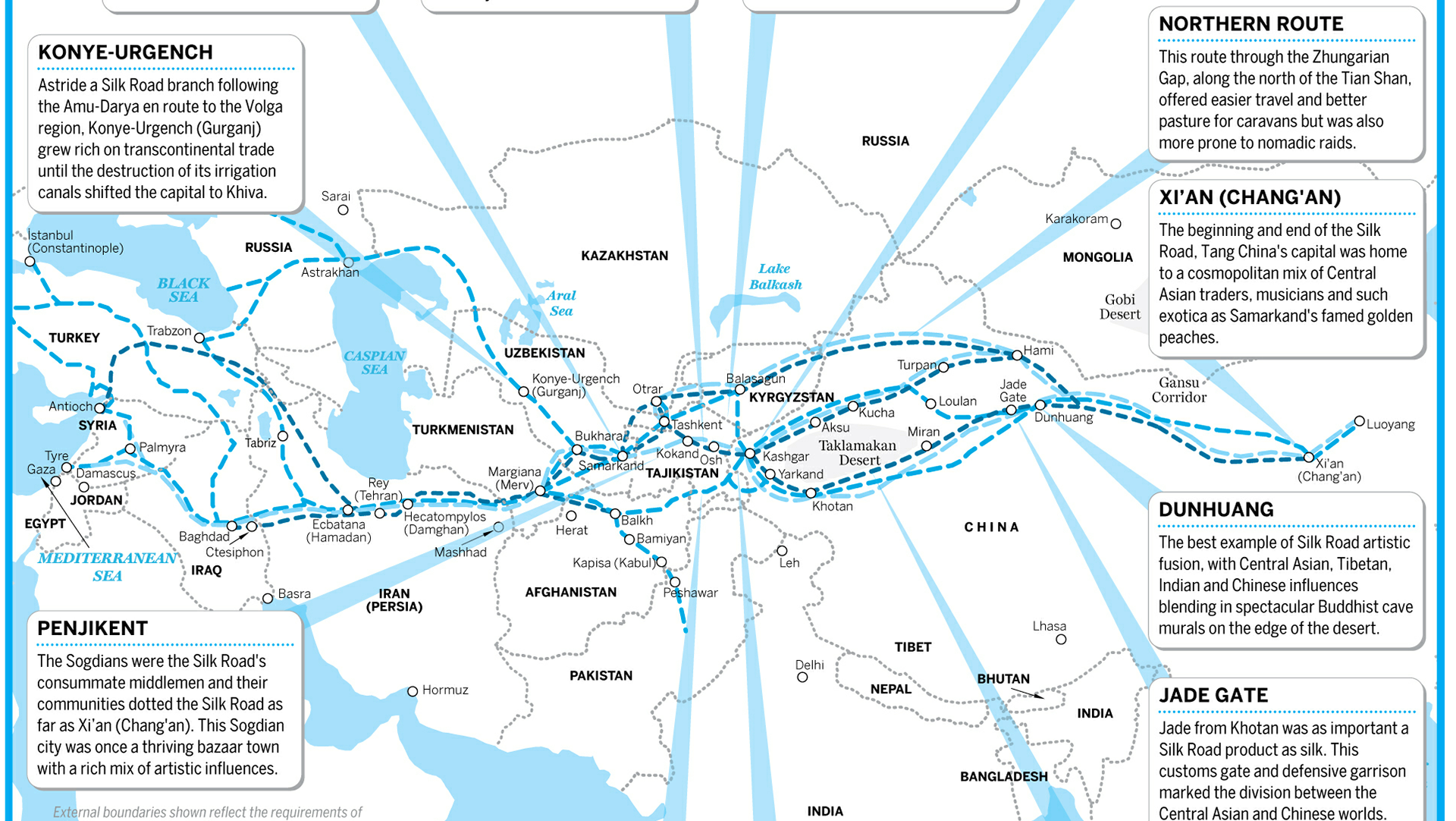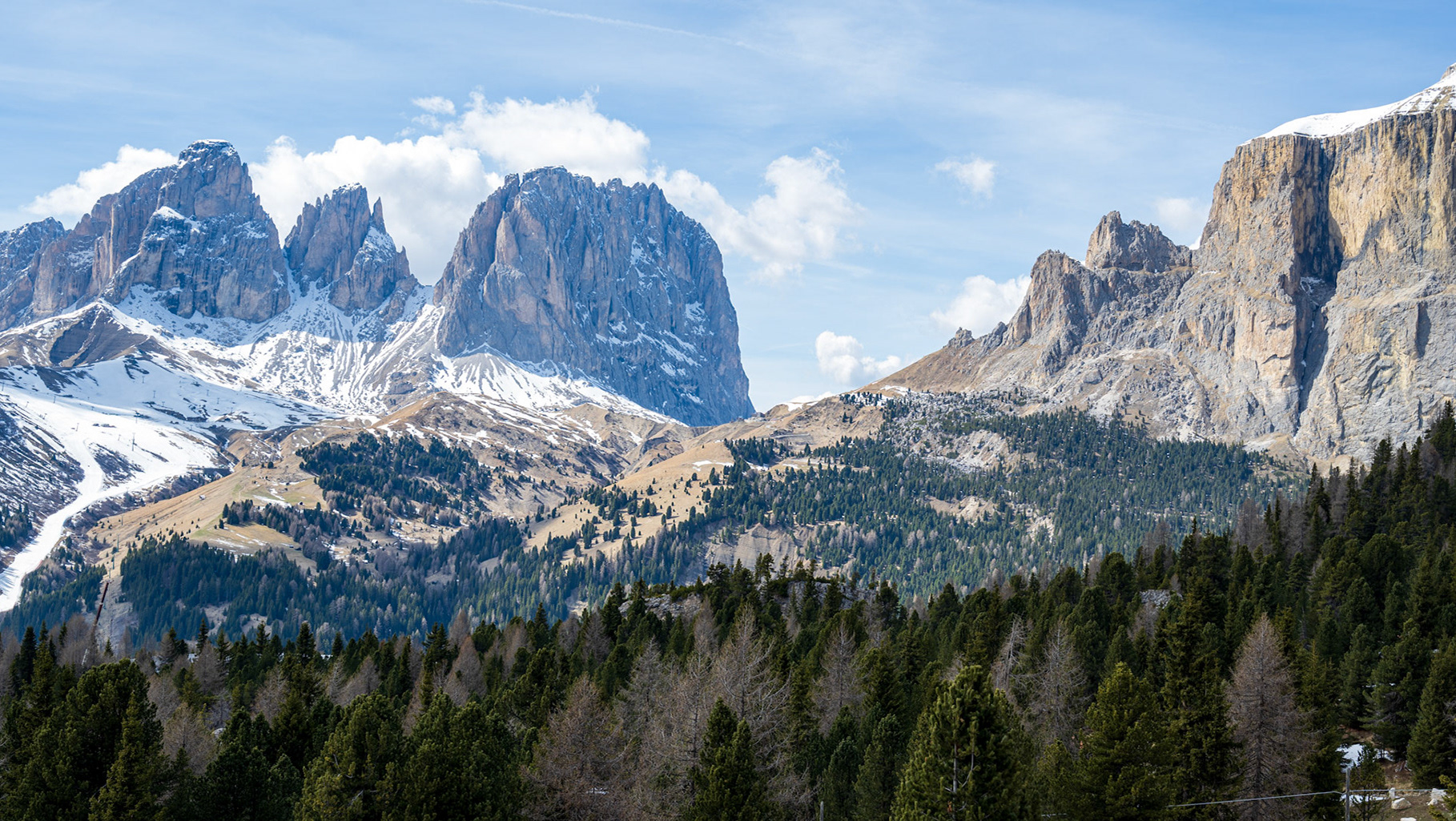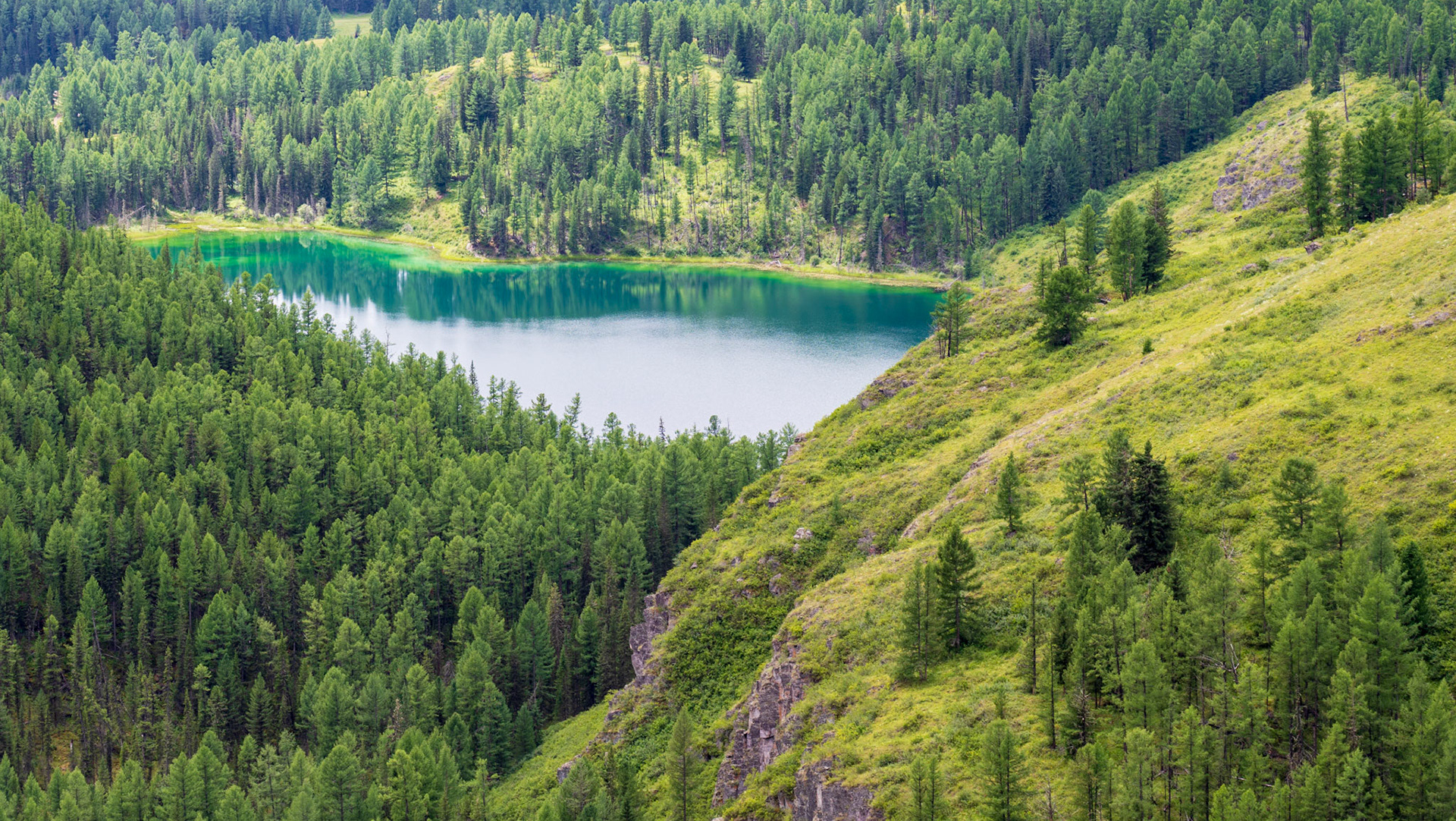Our anticipation to visit Uzbekistan has been growing, as it is a country renowned for its fascinating history, ancient Silk Road cities, and diverse cultural heritage. Samarkand, Bukhara, and Khiva, all UNESCO World Heritage sites, captiavate travelers with their breathtaking Islamic architecture, featuring exquisitely designed mosques, madrasas, and mausoleums. The allure of the Silk Road adventure, brimming with legends and stories, has made Uzbekistan a dream destination for me for many years.
Day 45a - Nukus to Khiva, Uzbekistan
Our friends, originally from East Siberia, have established a Motorcycle Club named Dersu Uzala, inspired by Akira Kurosawa's 1975 film. We are now proud members of this five-person club!
Due to a late start, we decided that a hearty brunch would be the perfect remedy for recovering from last night's festivities. Just like the previous day, Nikolai arranged a fantastic spread of food for us.
The journey to Khiva proved to be scorching hot, with the landscape once again alternating between lush farmland and vast stretches of desert.
Watermelons are ubiquitous in this region, with locals selling them from small street shops or directly from the back of their trucks. We took a much-needed and refreshing break, indulging in both a green and a yellow watermelon.
Although the ride itself was relatively short, the intense heat proved to be incredibly draining. We were relieved upon reaching Khiva (Xiva), not only for its incredible beauty but for the perspective of cooling down in a room with air conditioning.
However, this also meant bidding farewell to our friends who would only be making a brief visit here, as their schedule was significantly shorter than ours.
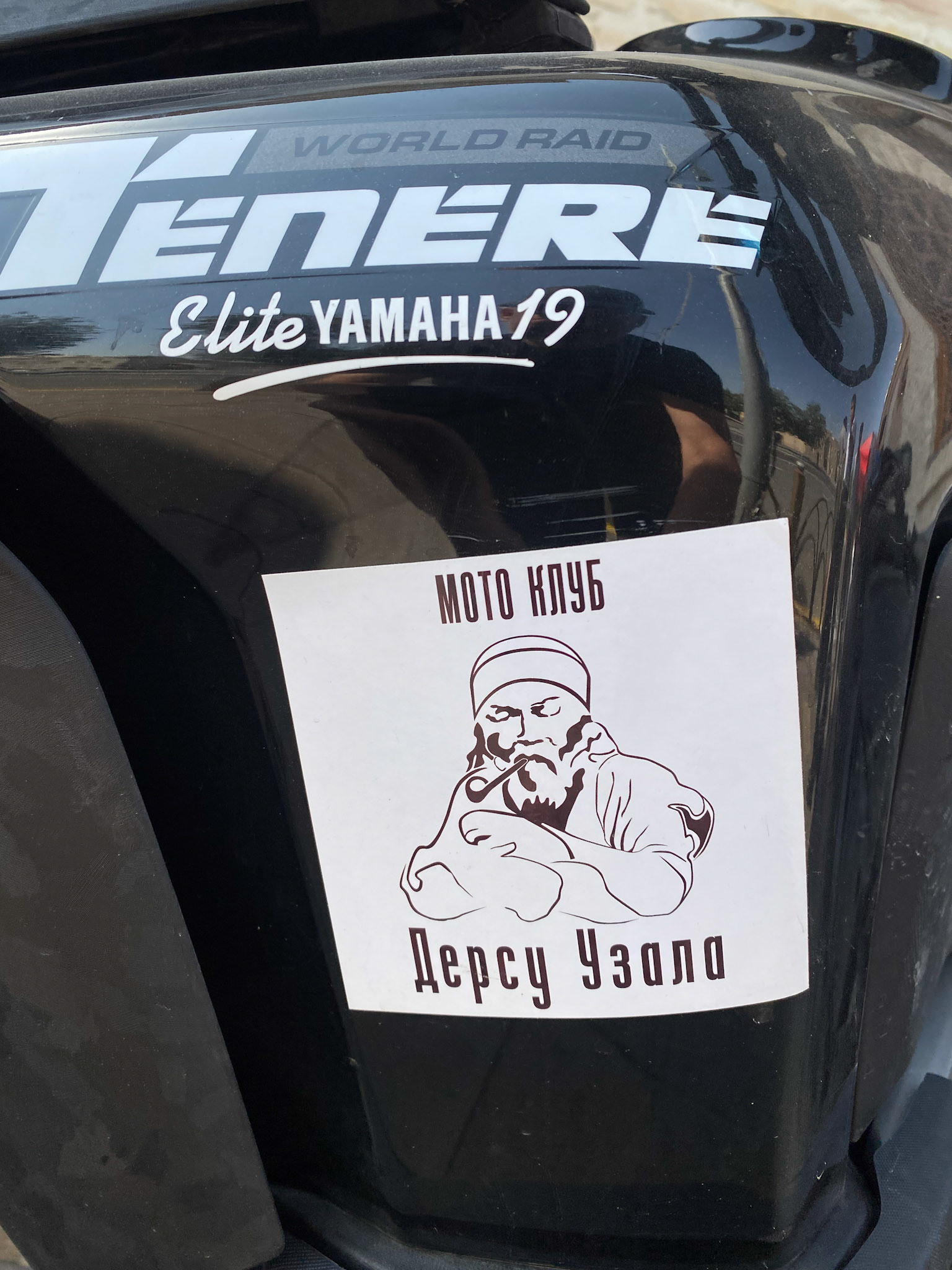
Proud member of the Dersu Uzala Motorcycle Club 😎
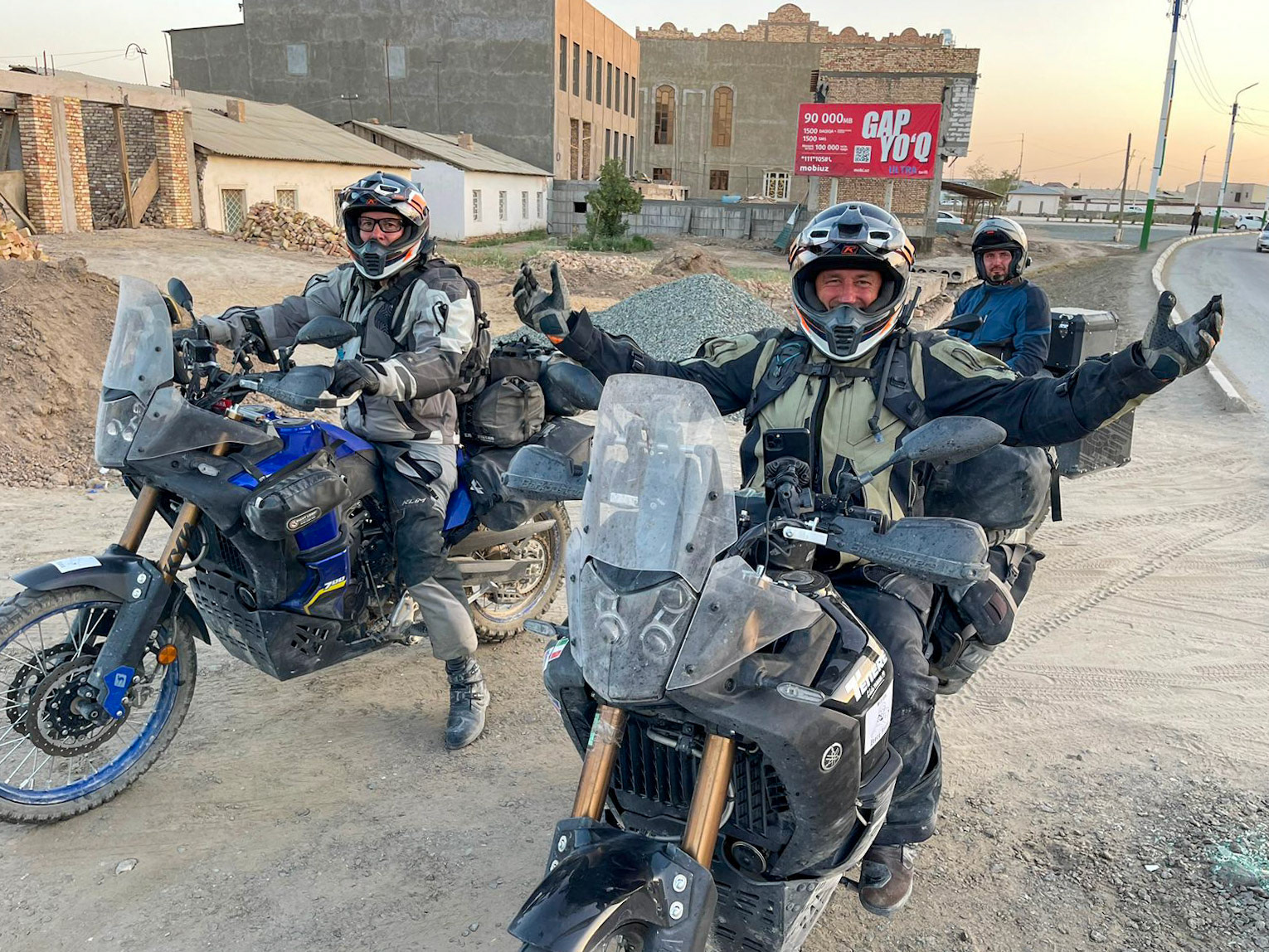
Ready to go!
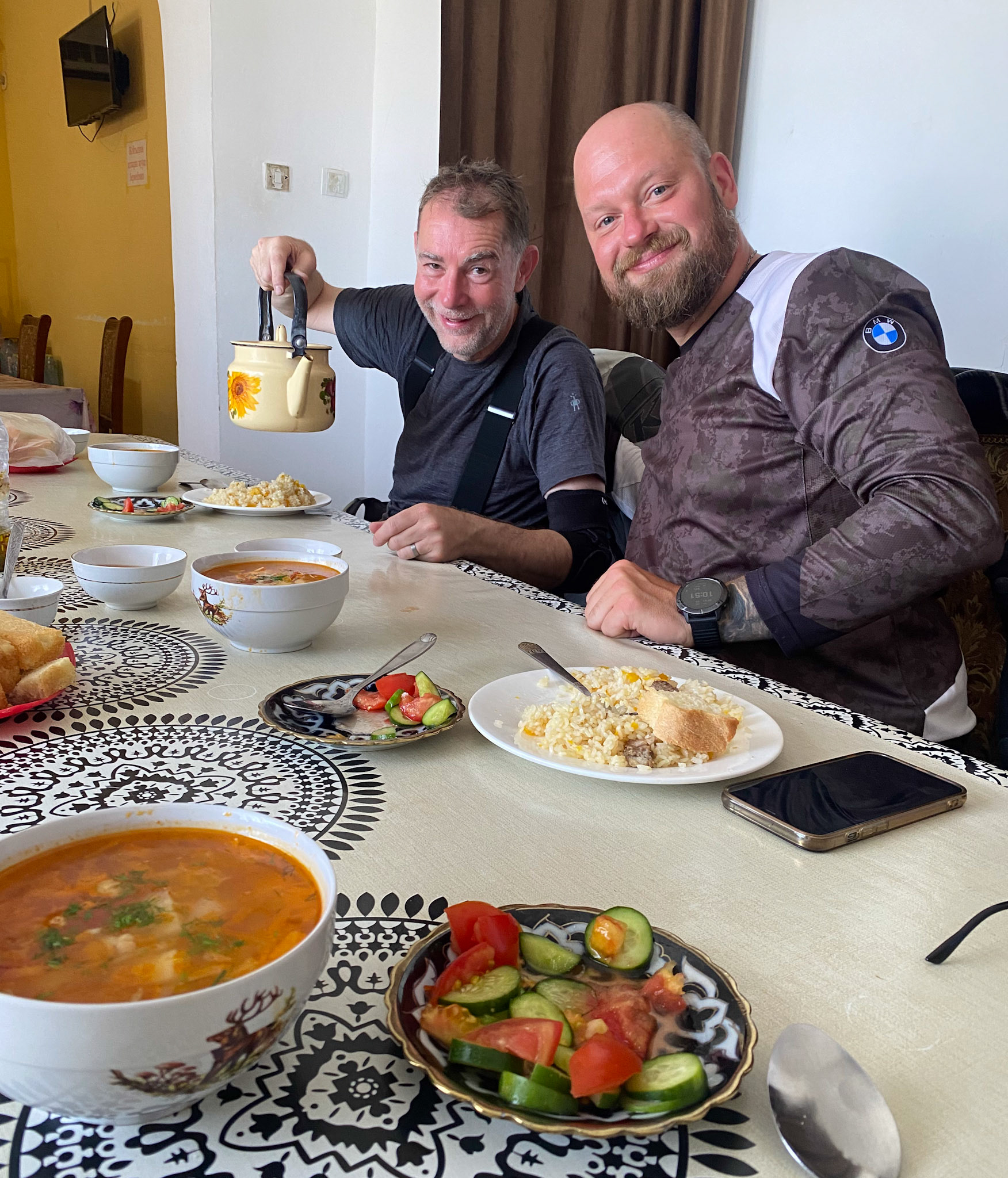
Shurpa, the most popular Uzbek soup and of course plov. The plovs have different flavors in each region but they all share the renowned Uzbek rice, with very short grains.
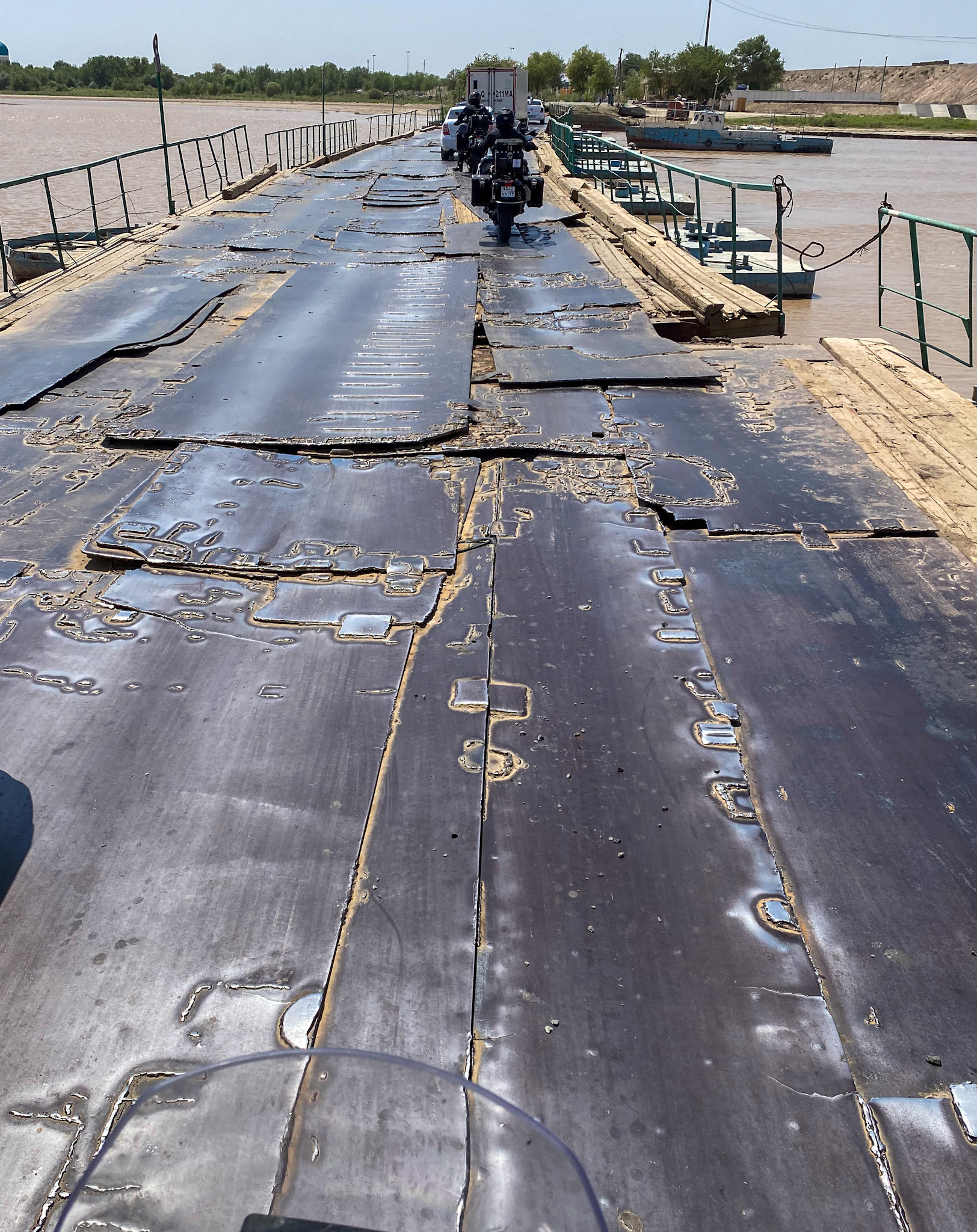
When a bridge is a patchwork even worse than the roads 😄
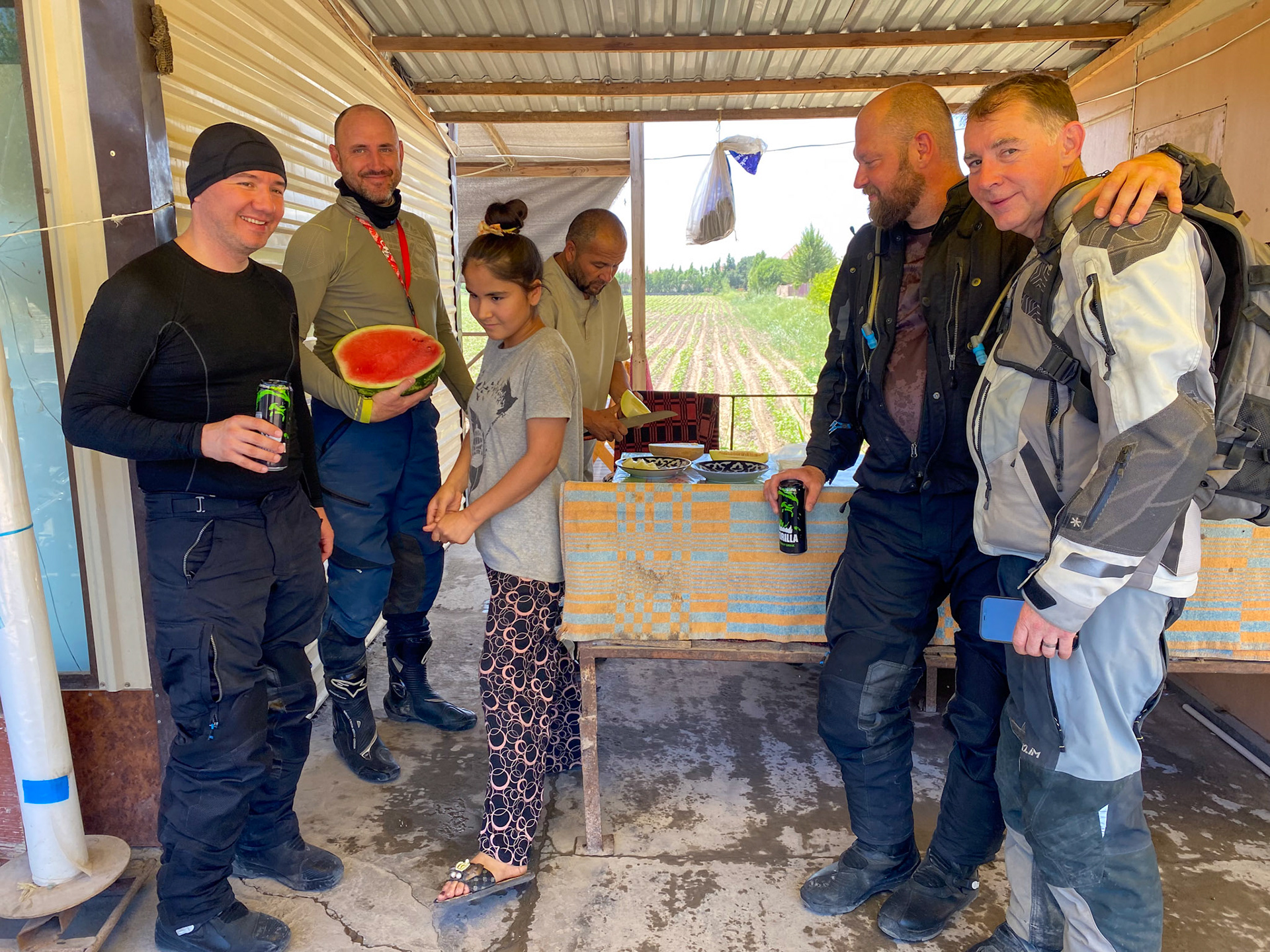
Such a refreshing break! Having our friends engage so easily with the locals makes a big difference!
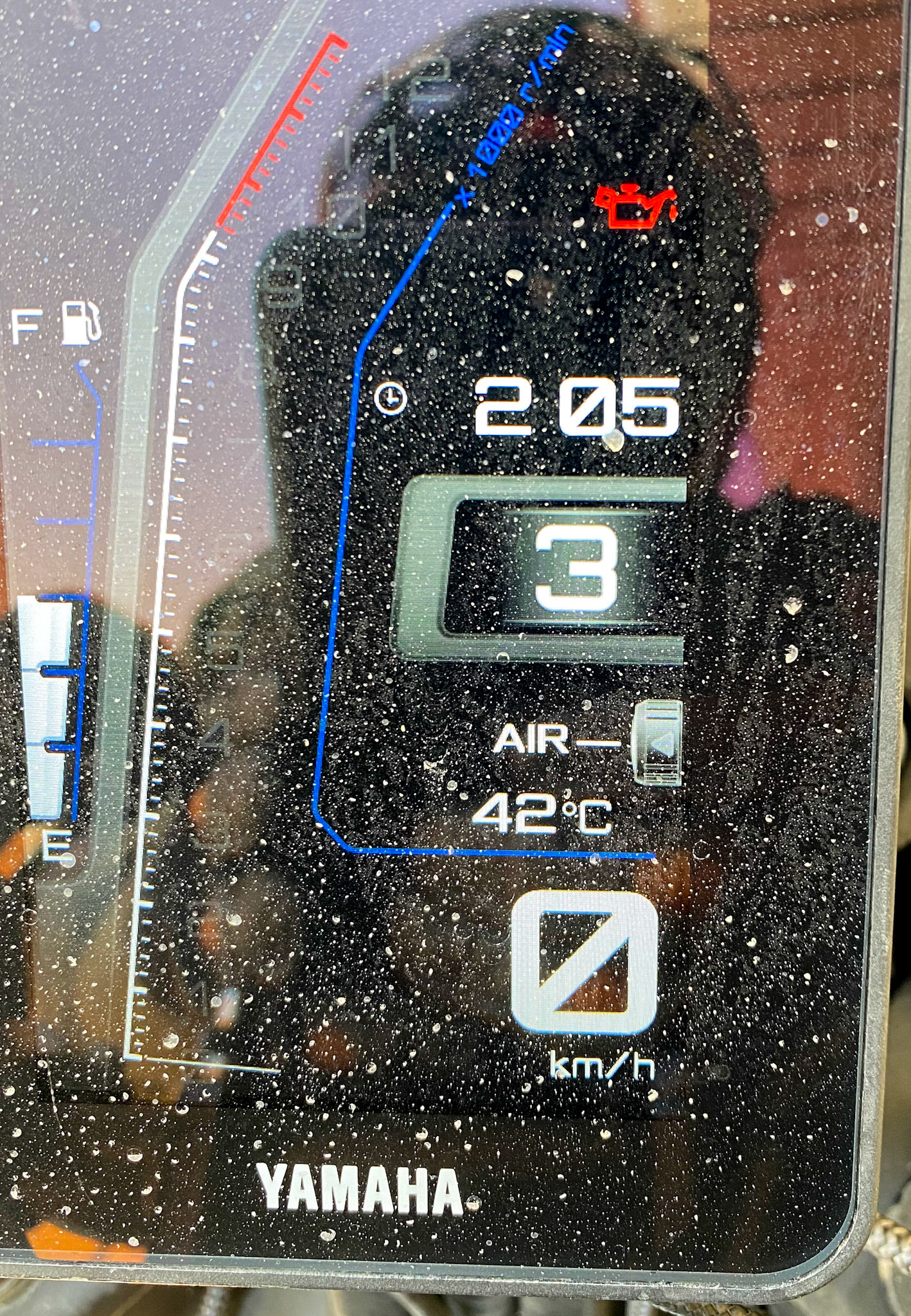
42 C (108 F)in the shade. So hard with all our gear on.
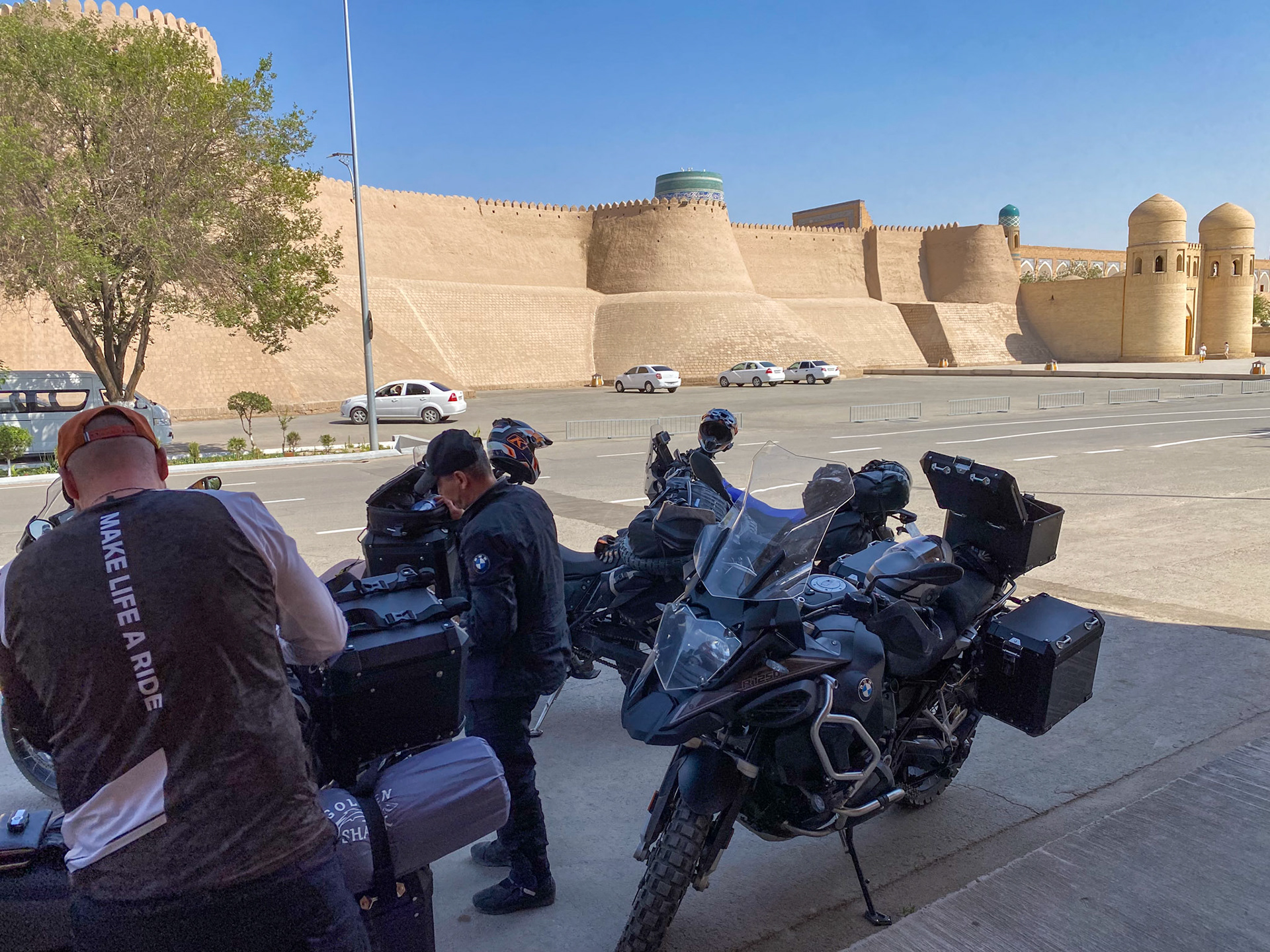
Finally in Khiva!
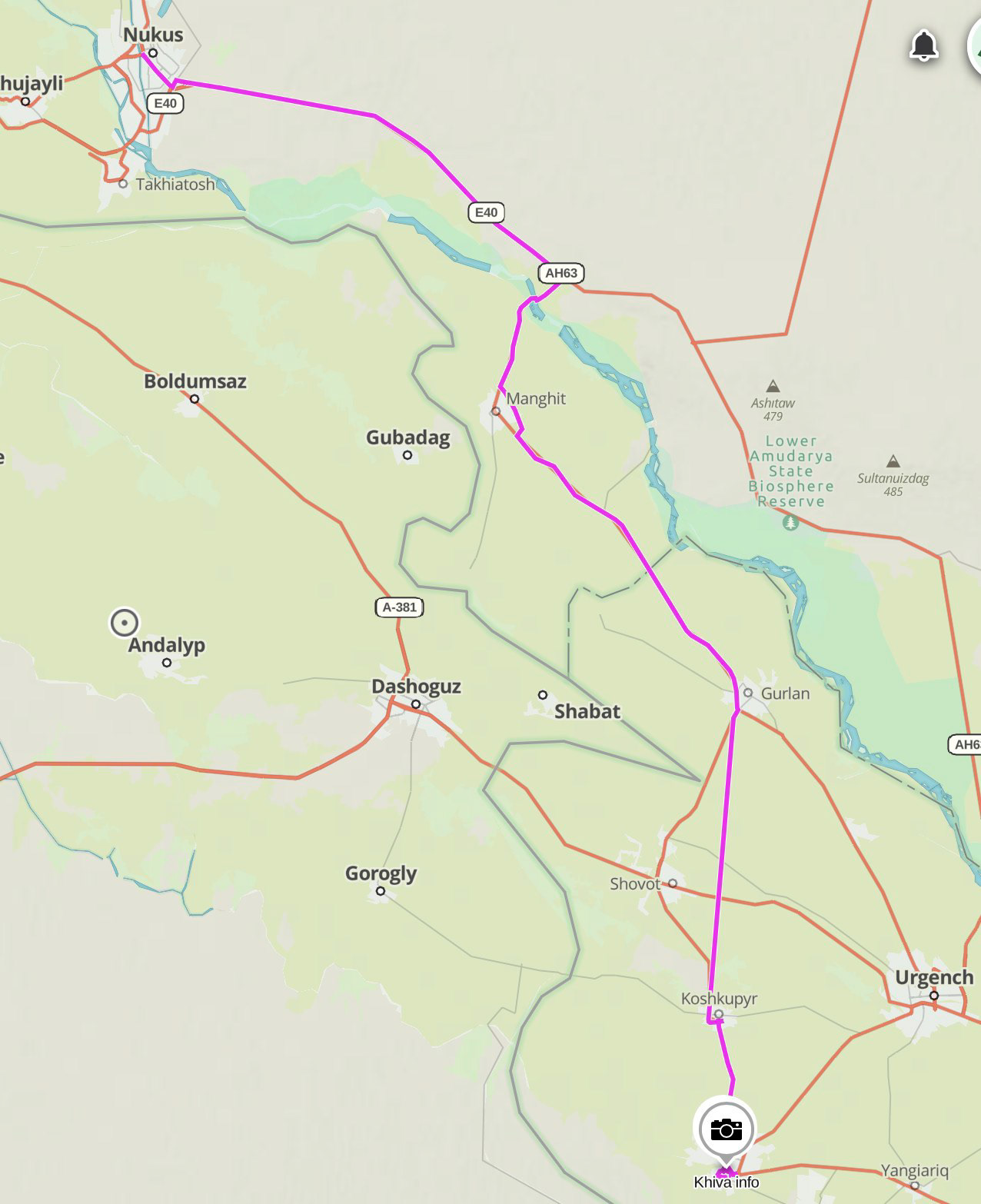
Day 45 - 175 km
Day 45b - Nukus to Khiva, Uzbekistan
Khiva, renowned as one of the three legendary Silk Road towns in Uzbekistan and a designated UNESCO World Heritage Site. its inner city, Ichan Kala, is encircled by towering adobe walls that soar 10 meters high and span 6 to 8 meters in width. We were thrilled to realize that our hotel was located within these walls.
Khiva embodied the essence of what I had envisioned and more. The majority of its structures have undergone meticulous restoration, utilizing authentic materials, resulting in an ambiance akin to an open-air museum. Yet, ordinary inhabitants carry on their lives as they have for countless centuries.
Everywhere we turned, our senses were overwhelmed by the awe-inspiring sights: resplendent minarets, ancient mosques with a timeless beauty, and magnificent towers adorned with intricate tilework. Despite the scorching heat, we explored each narrow street of this relatively compact place, and visited numerous museums as the story of this region and its rulers is fascinating.
Though tourists were present, the majority appeared to be Uzbek, accentuating the sensation of being in an exotic place suspended in another era.
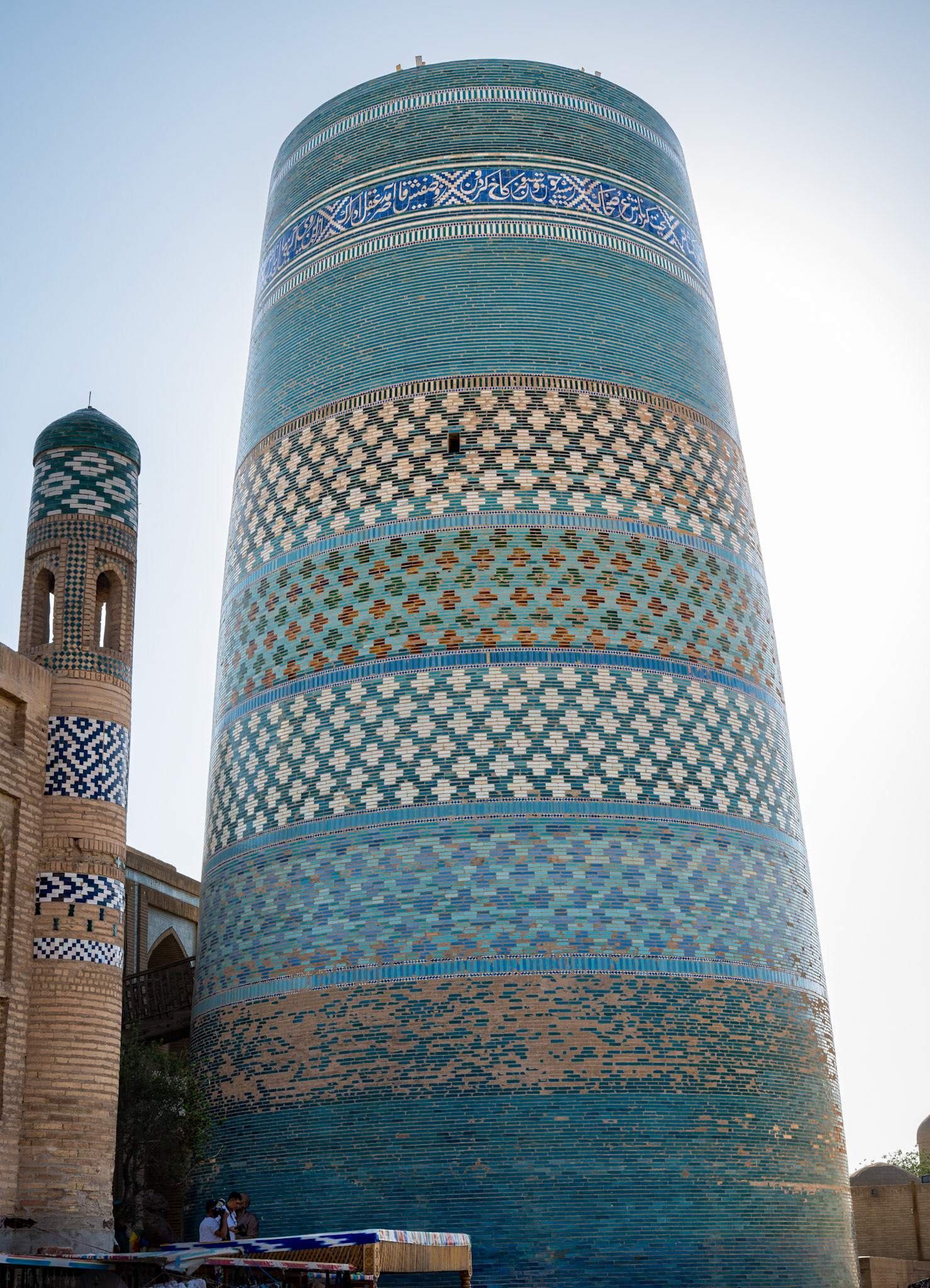
The Kalta Minor minaret. Although this tower seems to be complete, it was actually designed to be the base of the tallest minaret in Uzbekistan.
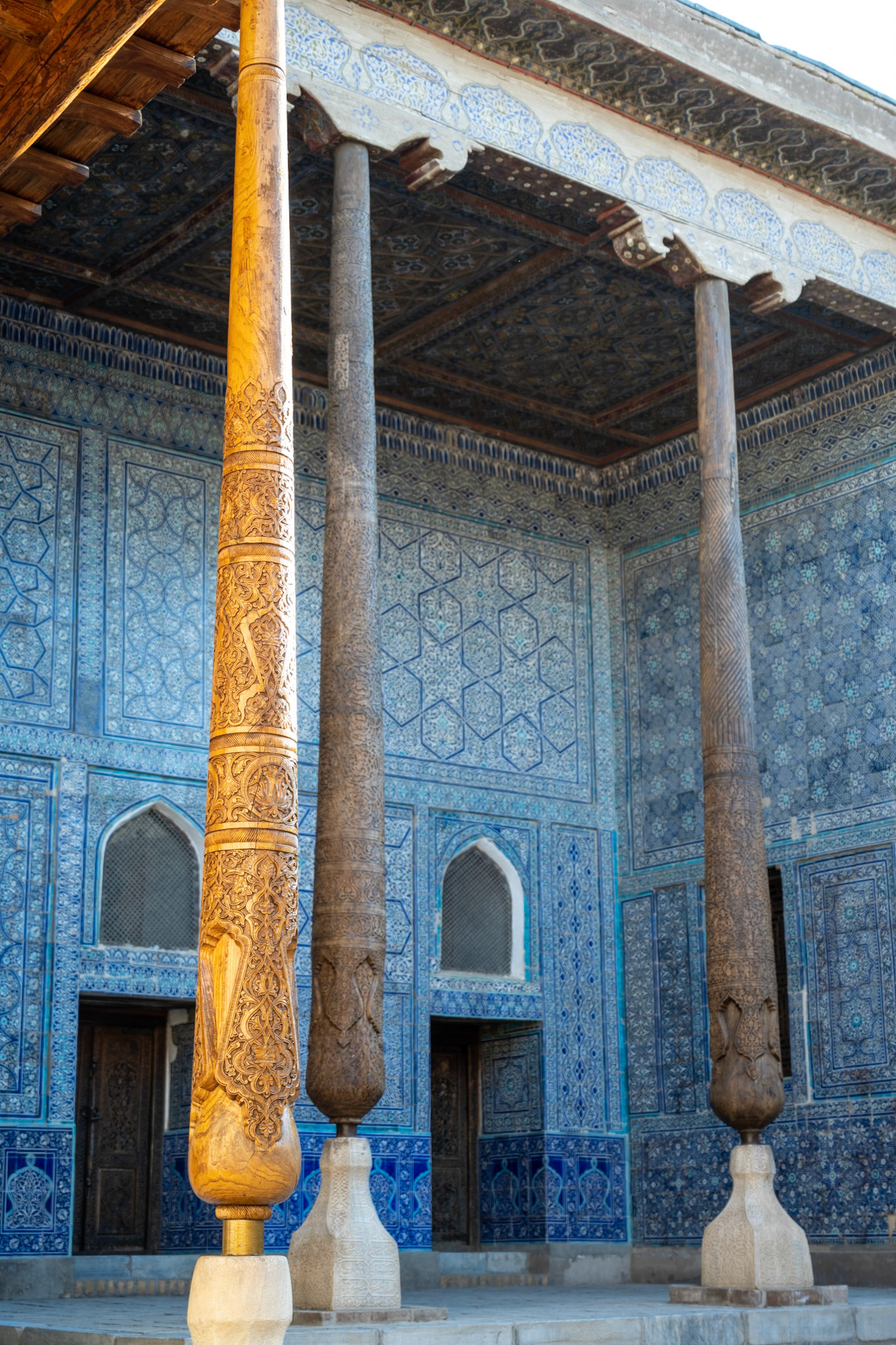
Love the mosaics and the carved wood!
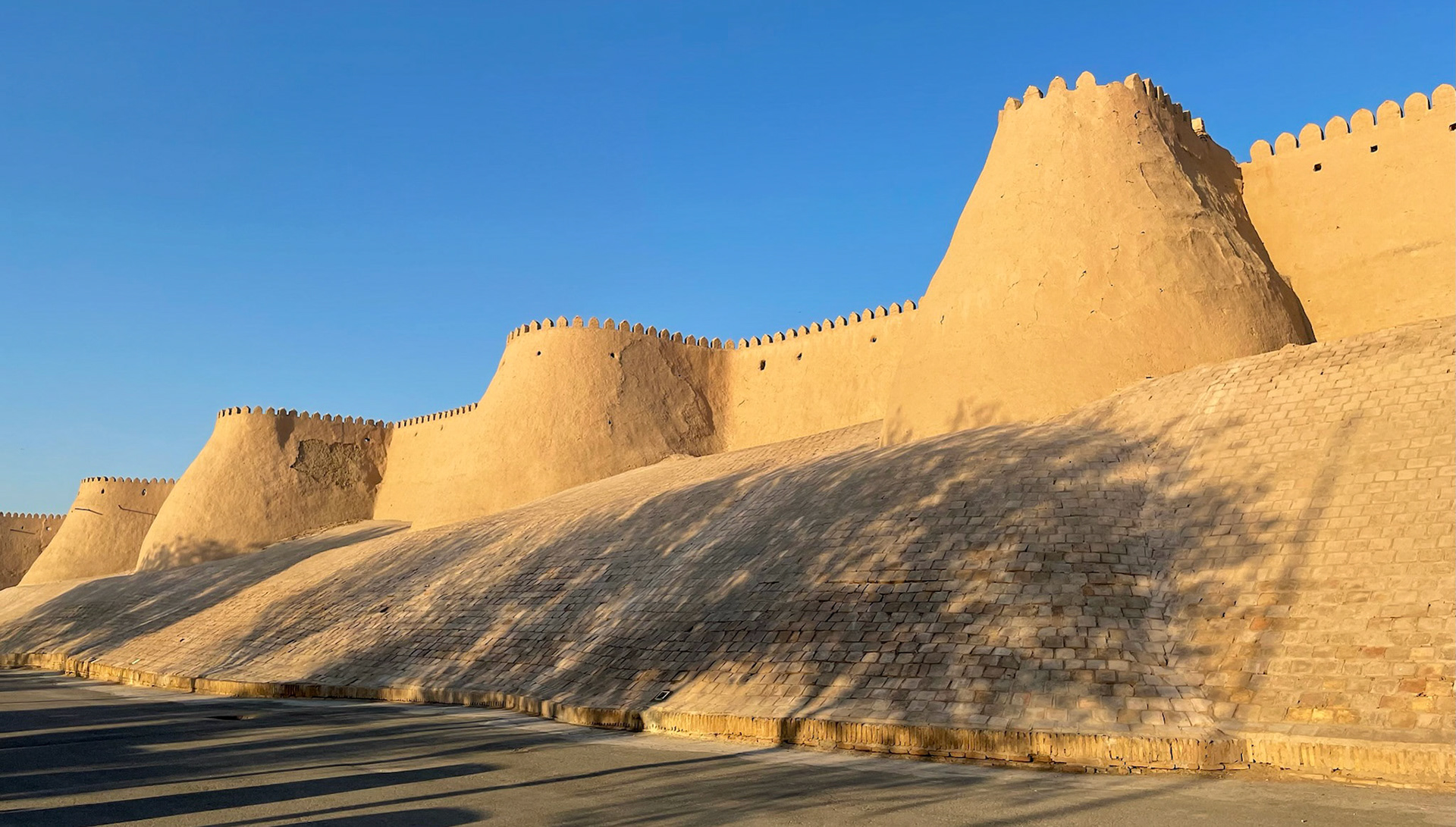
So impressive in real size!
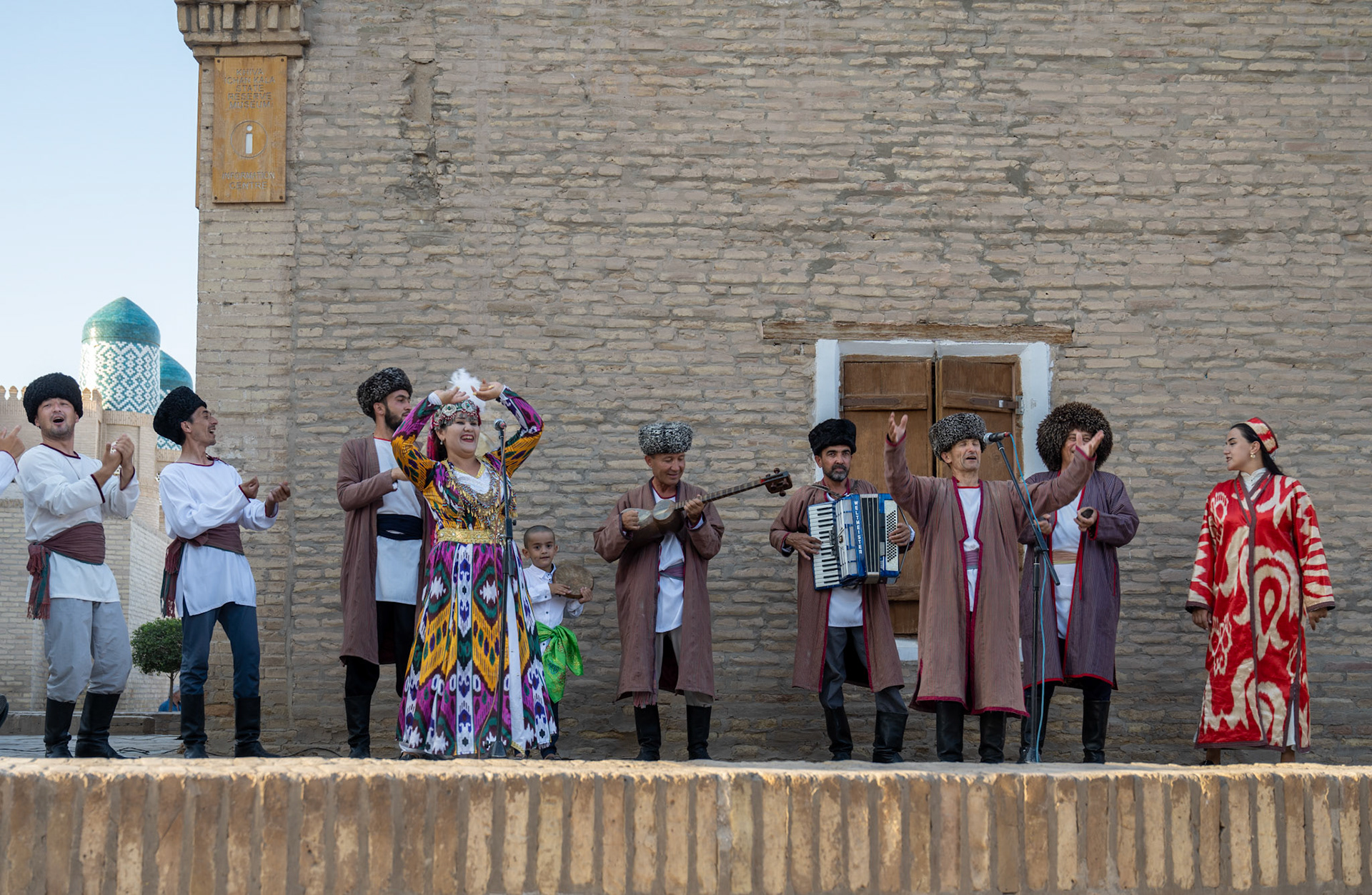
A local show in traditional costumes
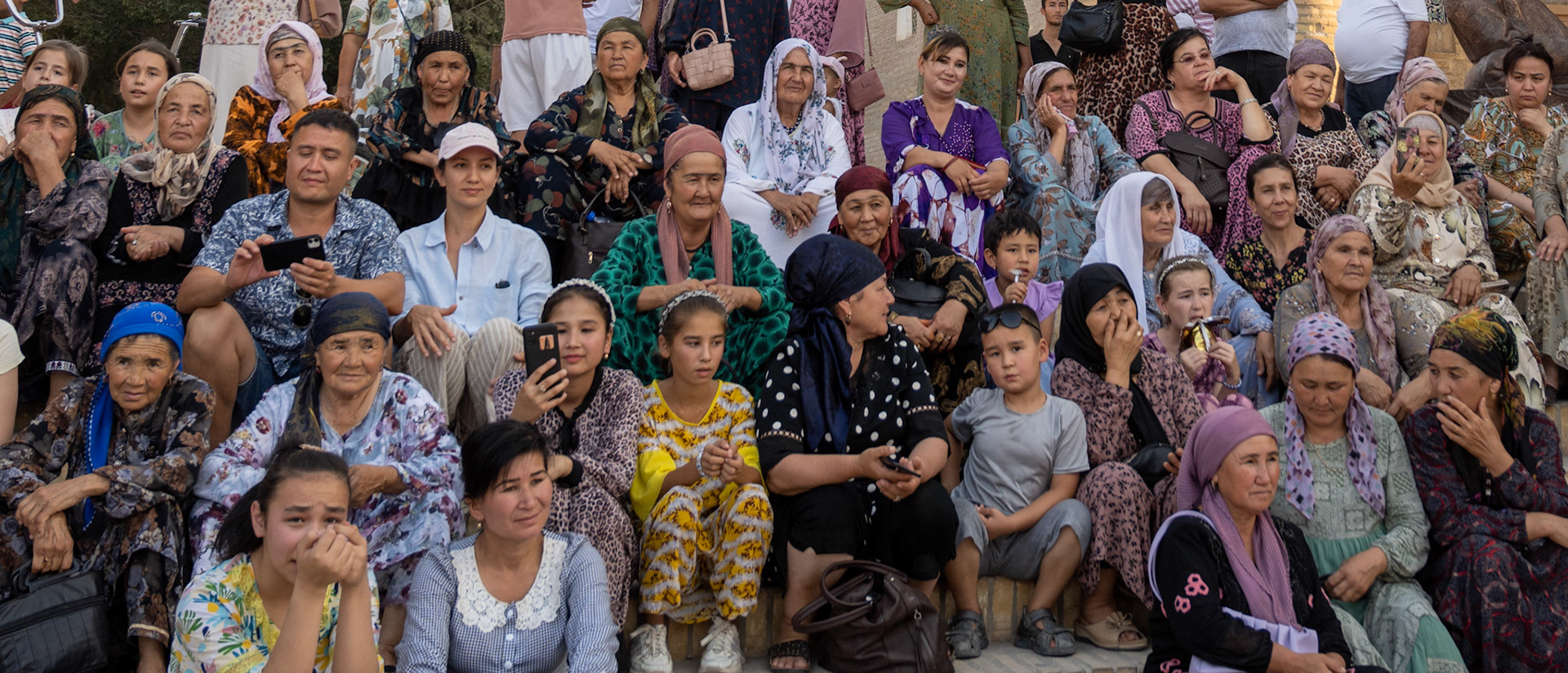
Sometimes the most interesting part is opposite to the scene
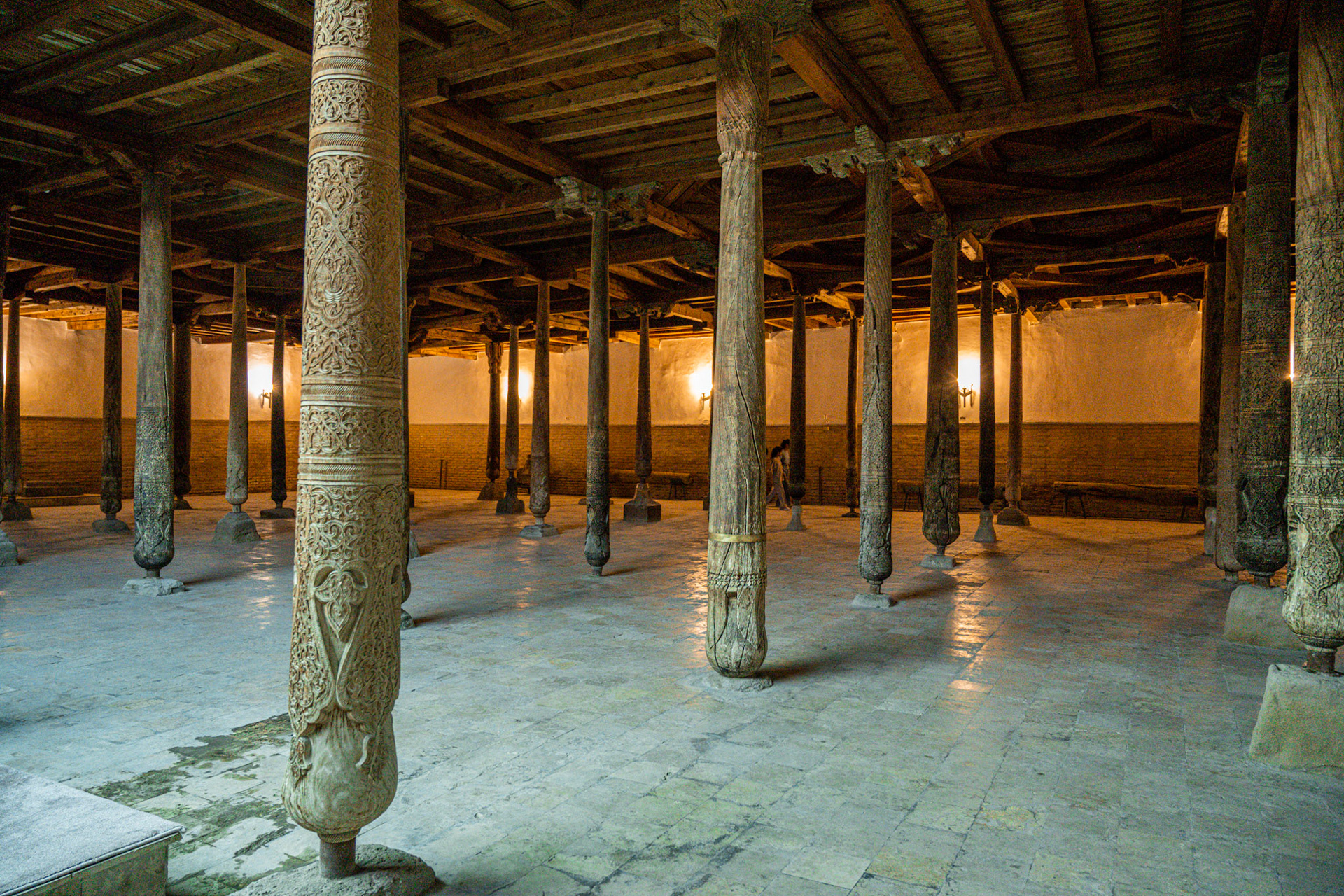
The Juma mosque has 218 wooden pillars - all different - supporting its low-ceiling wooden roof
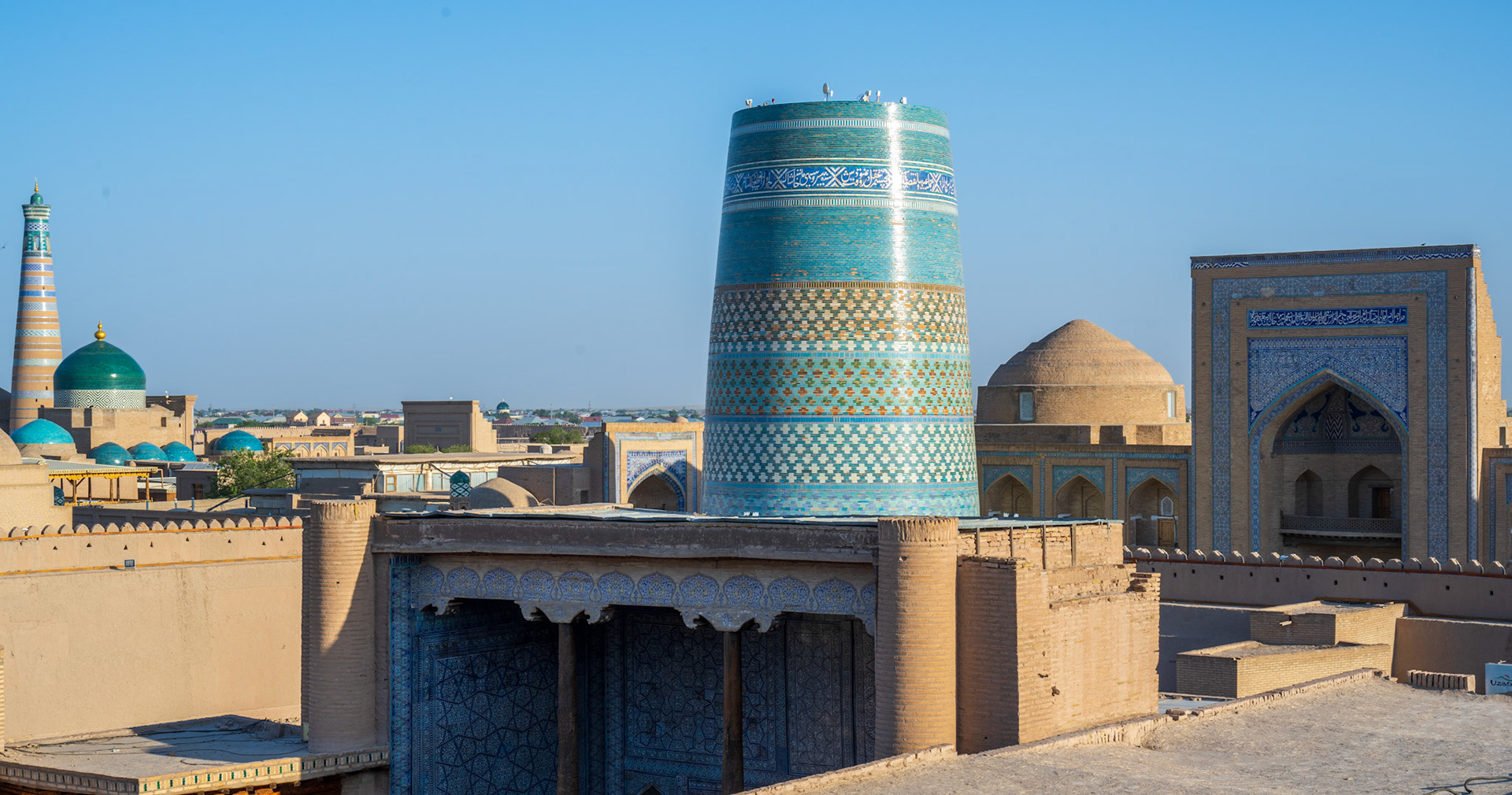
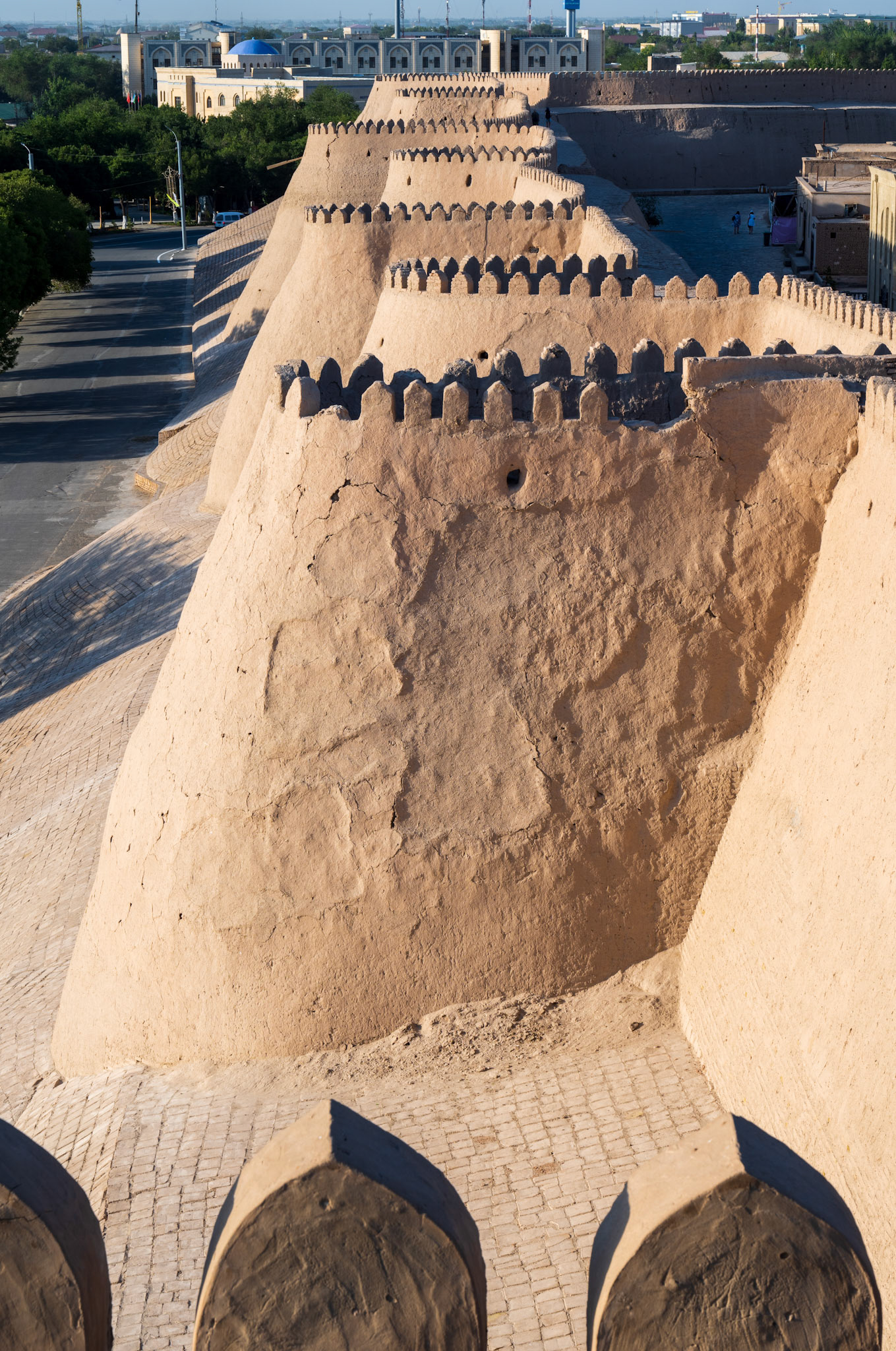
View of the walls from the Kuhna Ark fortress, that was the residence of Khiva’s ruler
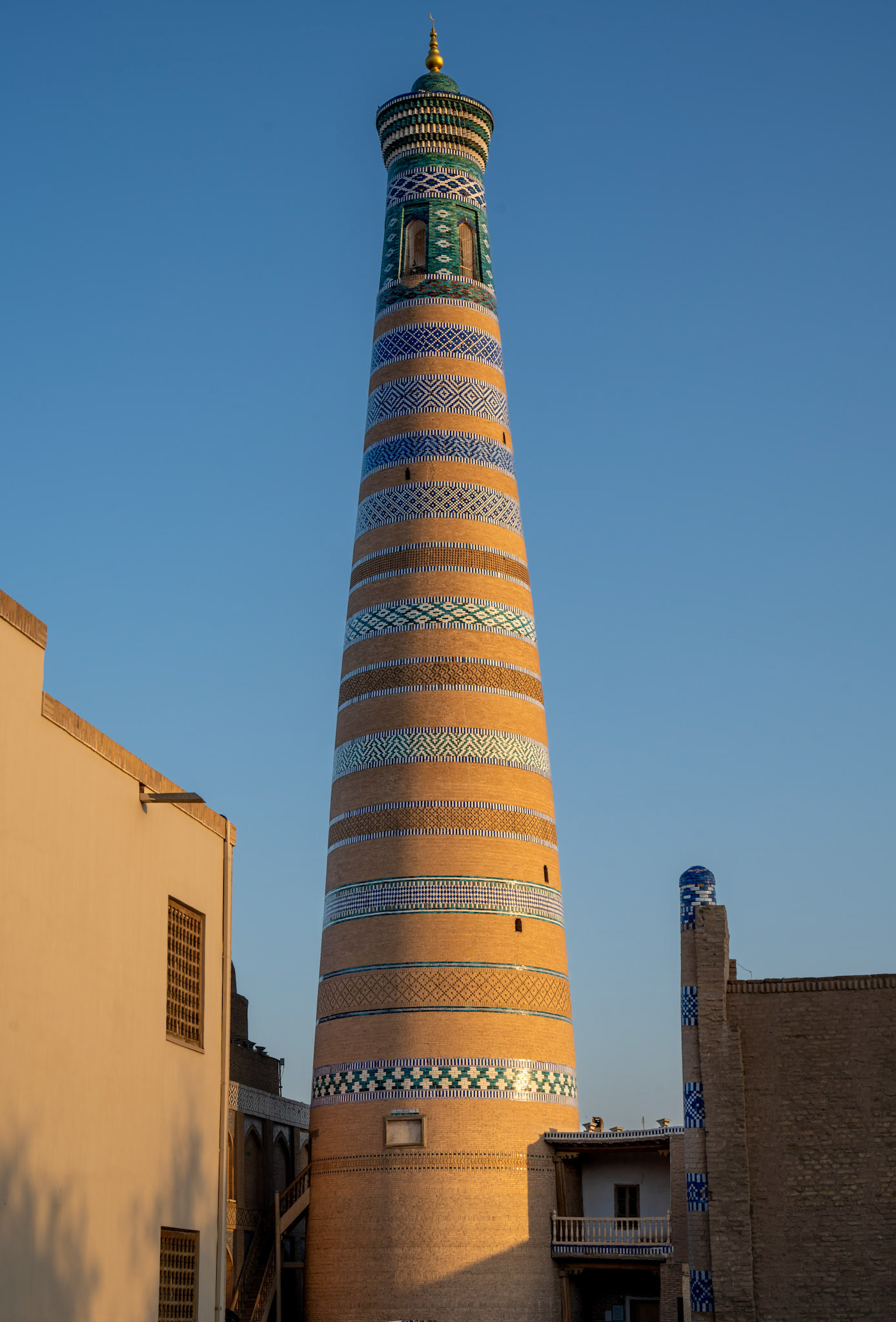
The Khodja Madrasa beautiful minaret really is the jewel and symbol of Khiva
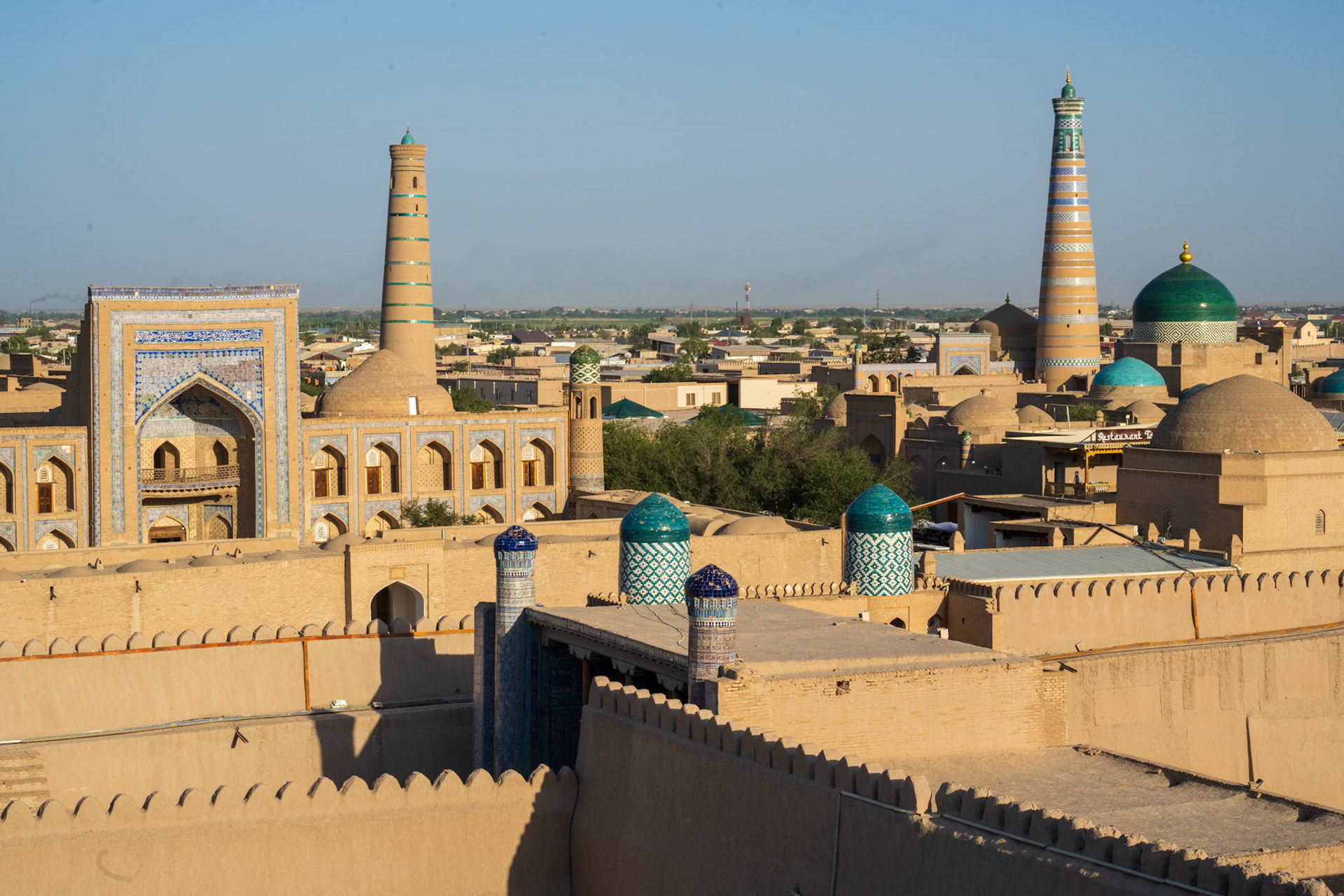
What makes Khiva truly special is the remarkable homogeneity of its materials and styles.
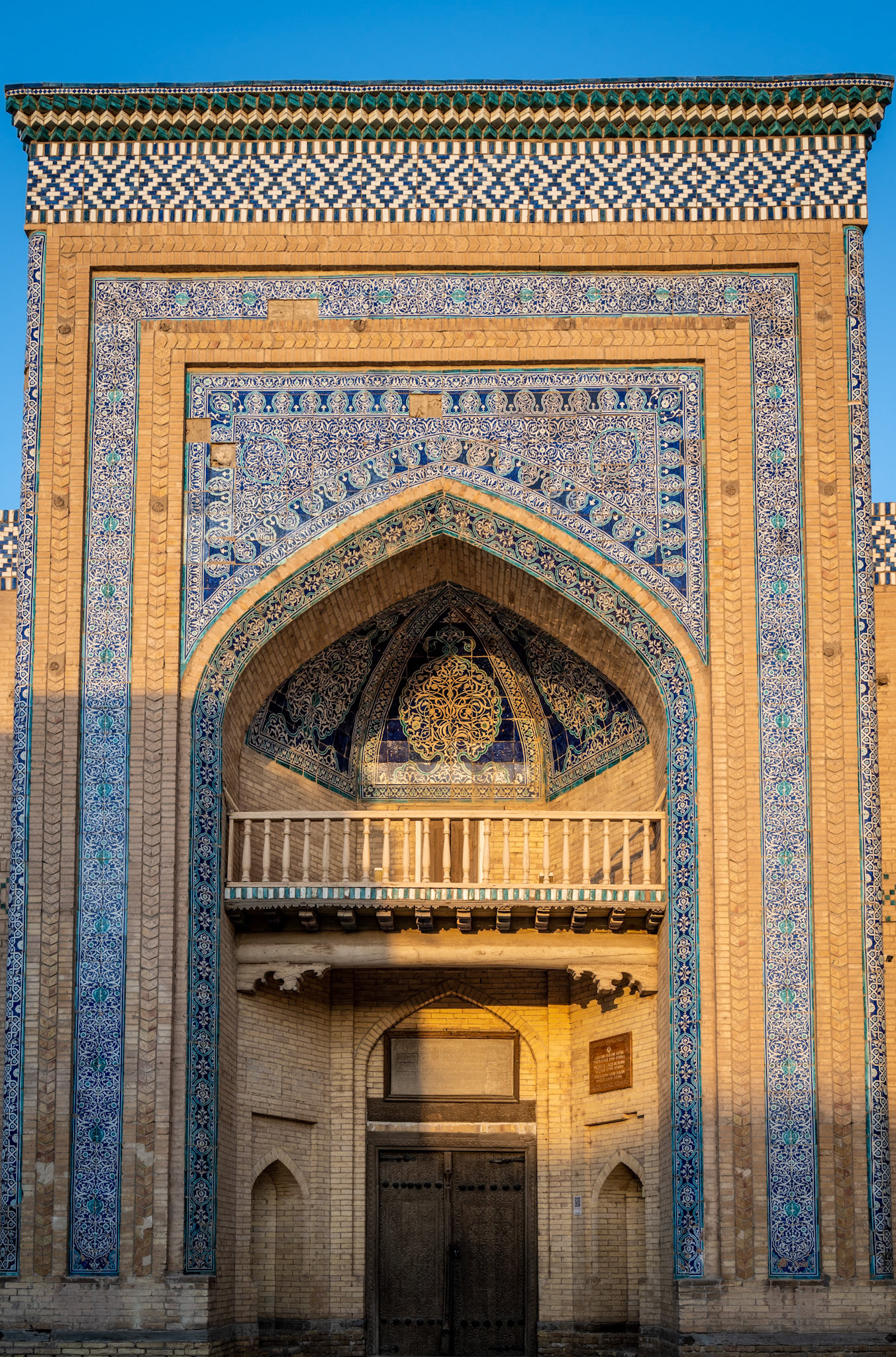

What a magical place!
Day 46 - Khiva to Bukhara, Uzbekistan
The road should not be too bad today, so we decided to spend some extra time exploring Khiva’s eastern gate and its surroundings. It was a great opportunity for more sightseeing before leaving Khiva for our next destination, another legendary city.
On the road, I couldn't help but miss riding with our new friends this morning, especially Ivan, our gentle bear, who was often singing or even reciting poems on the intercom, in Russian of course .
One thing I forgot to mention is the love for motorcyclists in Kazakhstan and Uzbekistan. We were pleasantly surprised by the constant flashing lights, honking horns, and friendly waves we received from the locals. At times, particularly when we entered towns with our group of five bikes, the commotion made us feel like celebrities . Our Russian friends explained that these countries have always held a deep admiration for horse riding, and motorcycles are seen as the closest modern equivalent.
During our ride, the most notable experience was crossing a multi-use bridge where trains and cars alternated their turns. Once a train had passed, it was time for the oncoming traffic to cross, and then it was finally our turn to proceed. It was an interesting sight to witness this coordinated dance of transportation.
As we continued through the Karakum desert, which stretches predominantly across Turkmenistan, the heat became even more relentless. The temperature soared to a scorching 44°C (111°F), putting a considerable strain on our bodies.
Happy to arrive in Bukhara, and discover walls even taller than in Khiva!
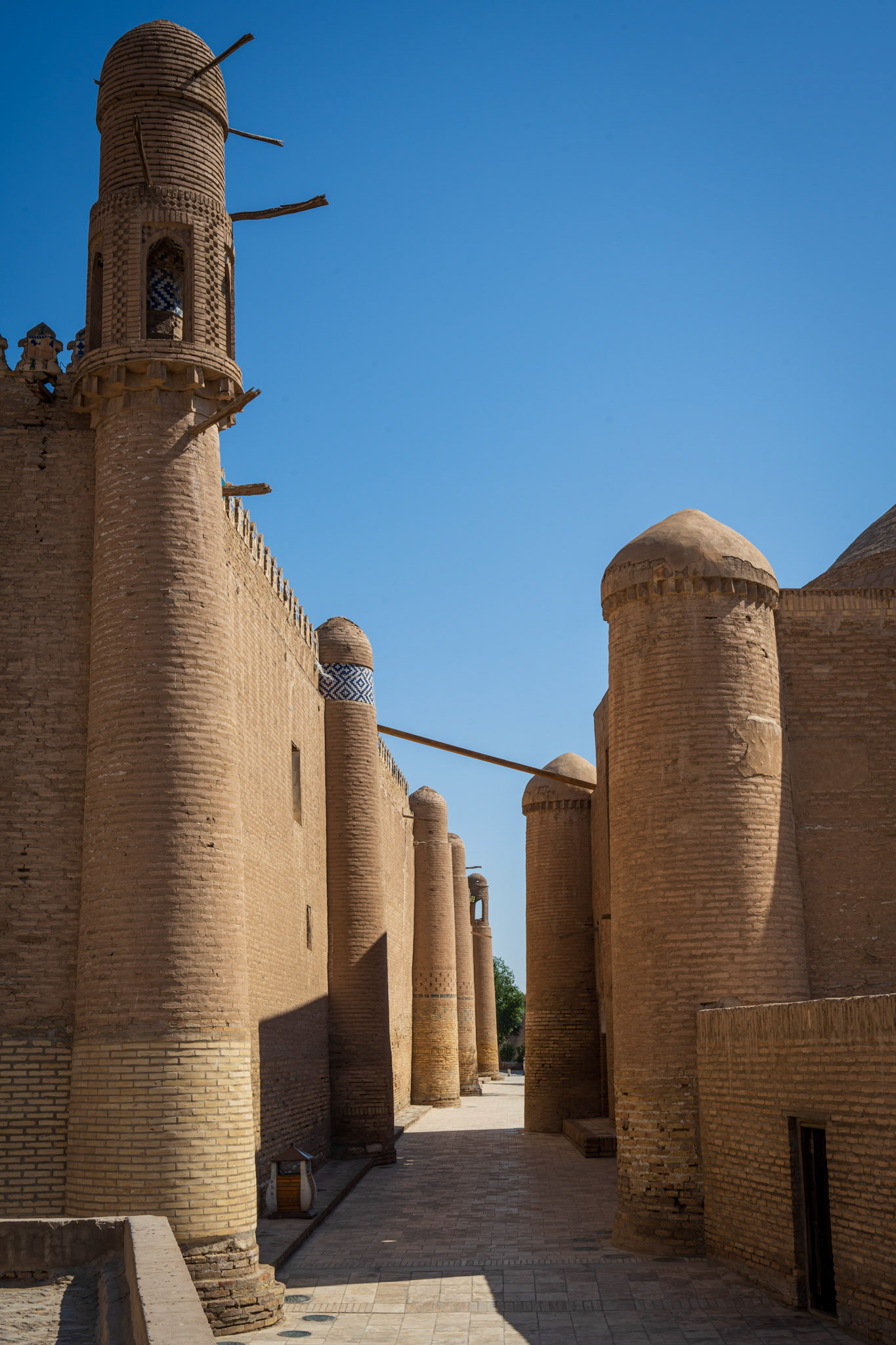
Khiva - It was so impressive to walk surrounded by an architecture that seems to come from another planet
![Khiva - [pic from Dirk]](https://cdn.myportfolio.com/5efceca8-7147-4234-bcca-bc20e6c528cb/8c00ed70-d3b6-467c-9c9b-f43e3e21db53_rw_1920.jpg?h=fdadf649bce1a6508703c86bc7a8e200)
Khiva - [pic from Dirk]
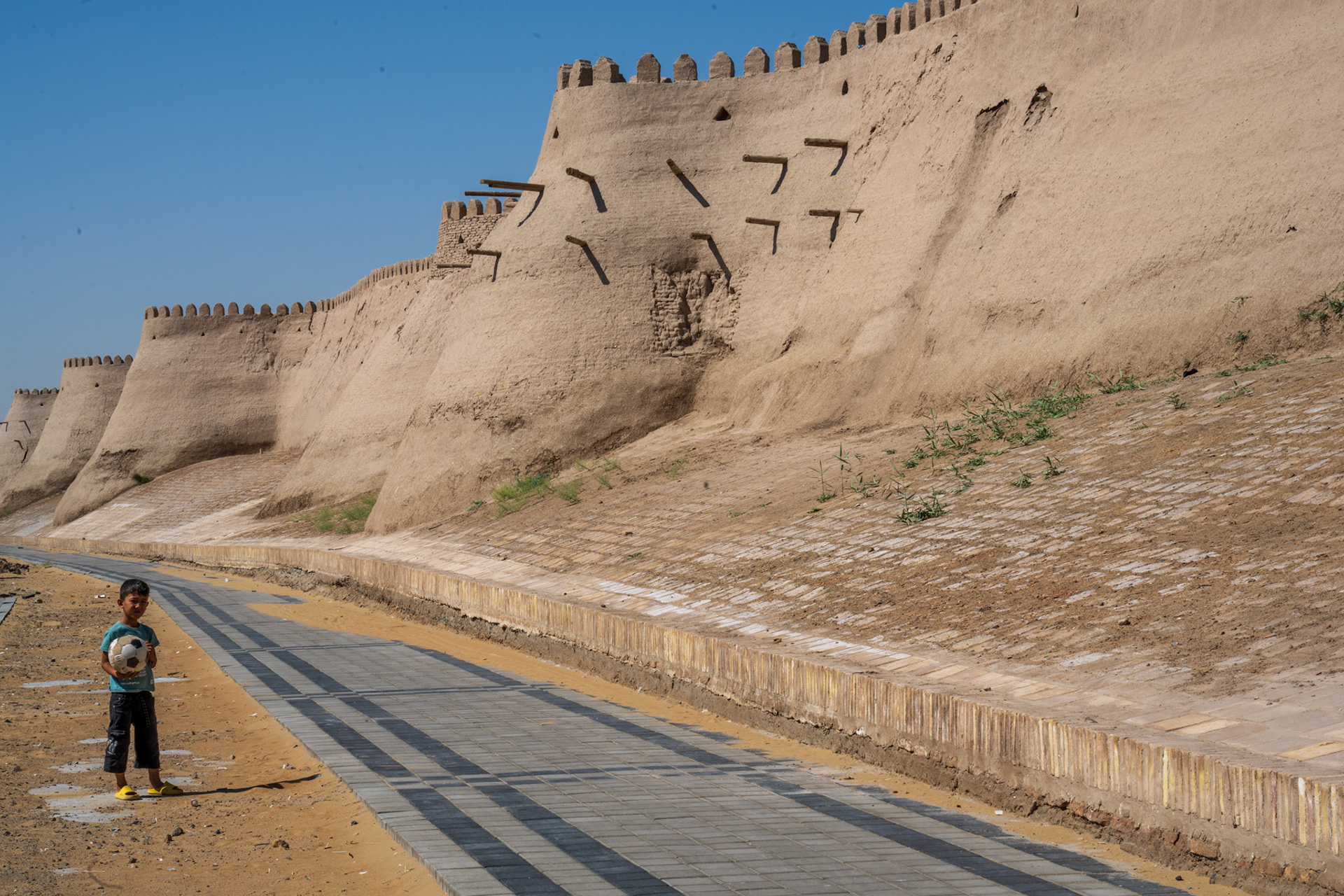
The East wall of Ichan Kala - Khiva
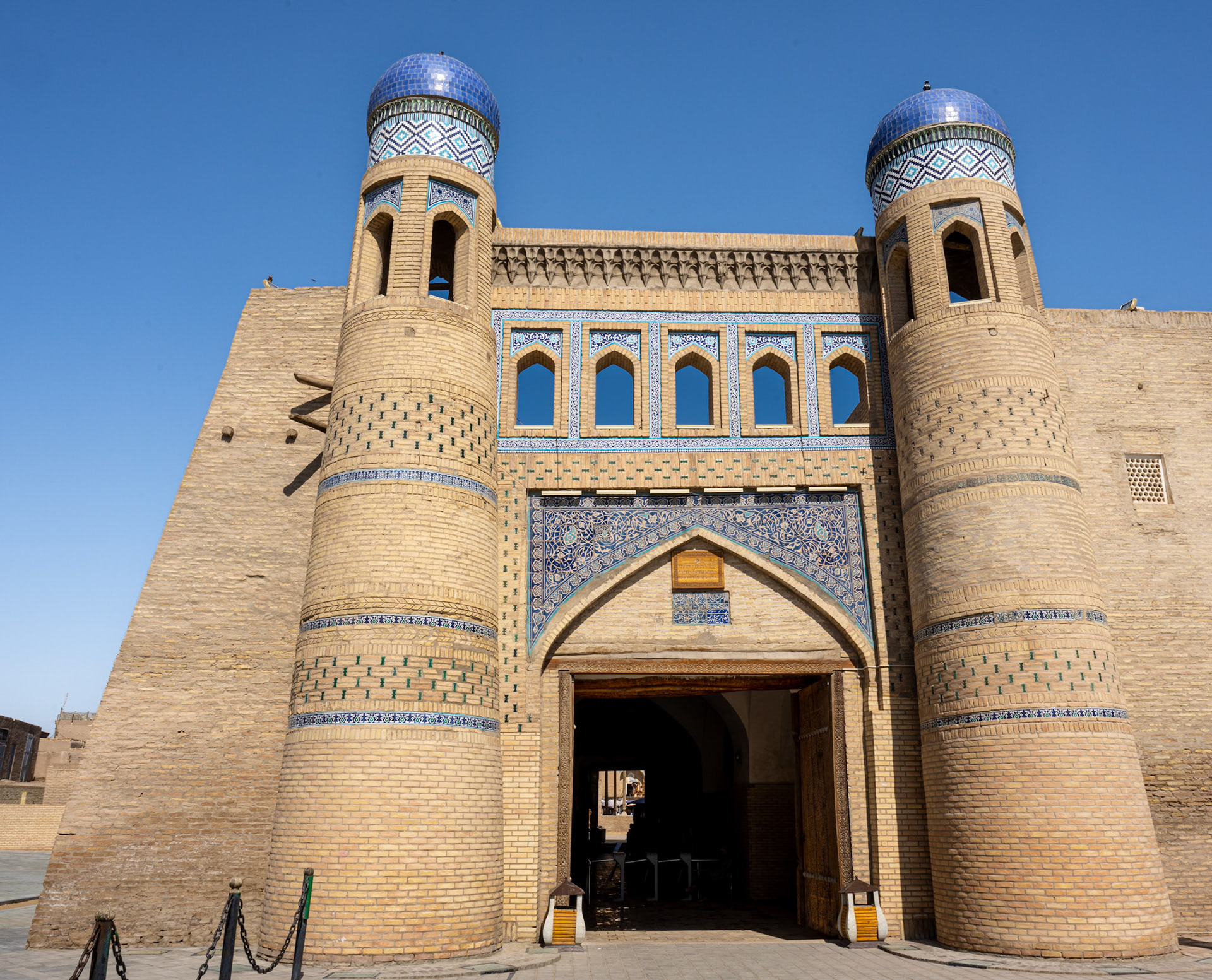
The East Gate of Ichan Kala - Khiva
![Me, walking along the East wall of Ichan Kala - Khiva [pic from Dirk]](https://cdn.myportfolio.com/5efceca8-7147-4234-bcca-bc20e6c528cb/17c5a610-b9aa-4b99-8803-c005824e9e21_rw_1920.jpg?h=baf6993b83c31773d1d7e307559c7b1a)
Me, walking along the East wall of Ichan Kala - Khiva [pic from Dirk]

Delicious Shashlik to recover from the heat
![Another crazy load! [pic from Dirk]](https://cdn.myportfolio.com/5efceca8-7147-4234-bcca-bc20e6c528cb/1452dedb-0cd5-48d7-aea7-592a2963694a_rw_1920.jpg?h=462cc3b072053f29d7861437fc725180)
Another crazy load! [pic from Dirk]
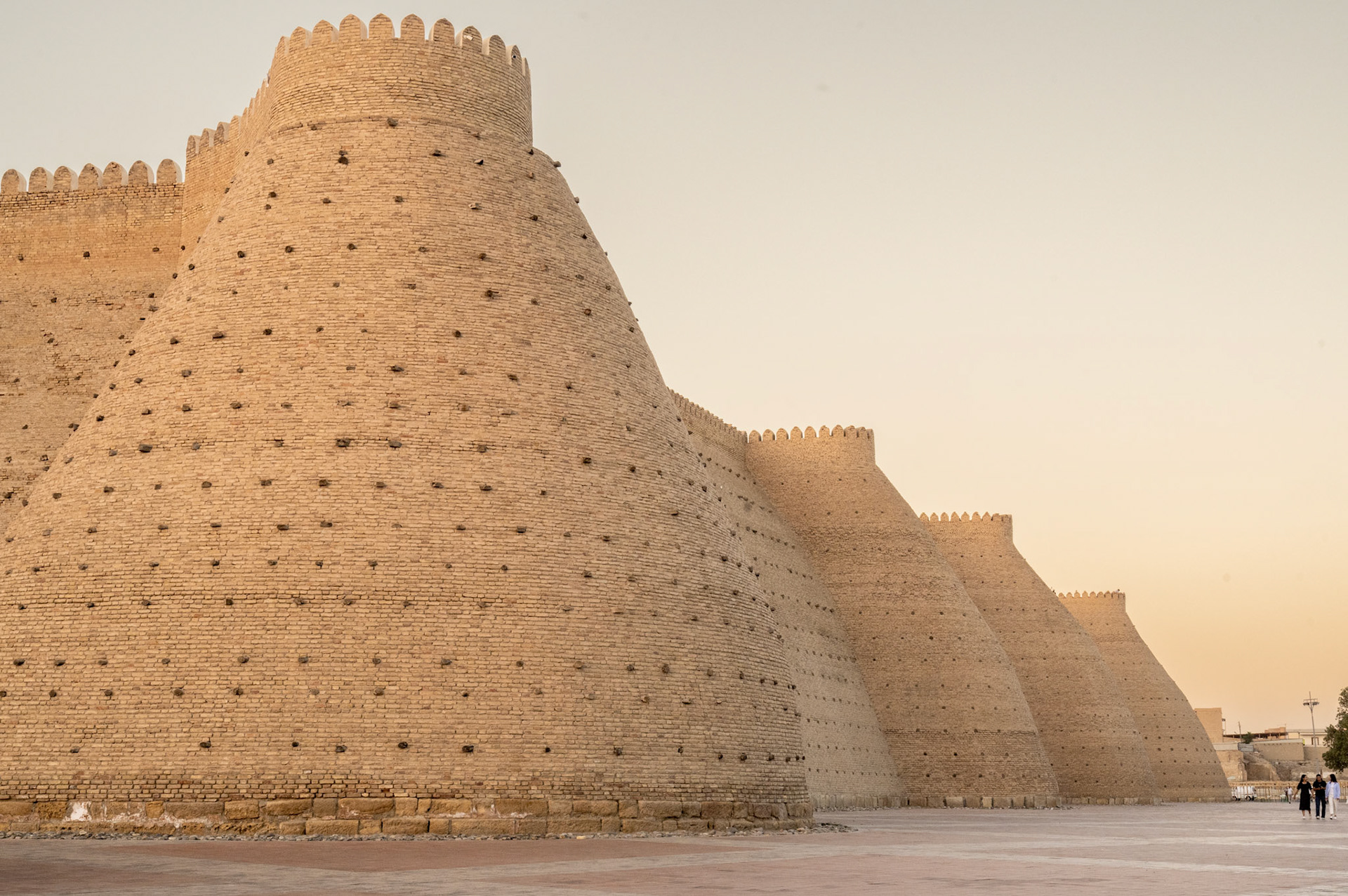
The walls of the Ark Citadel in Bukhara stand at an height of 20 meters (65 feet).
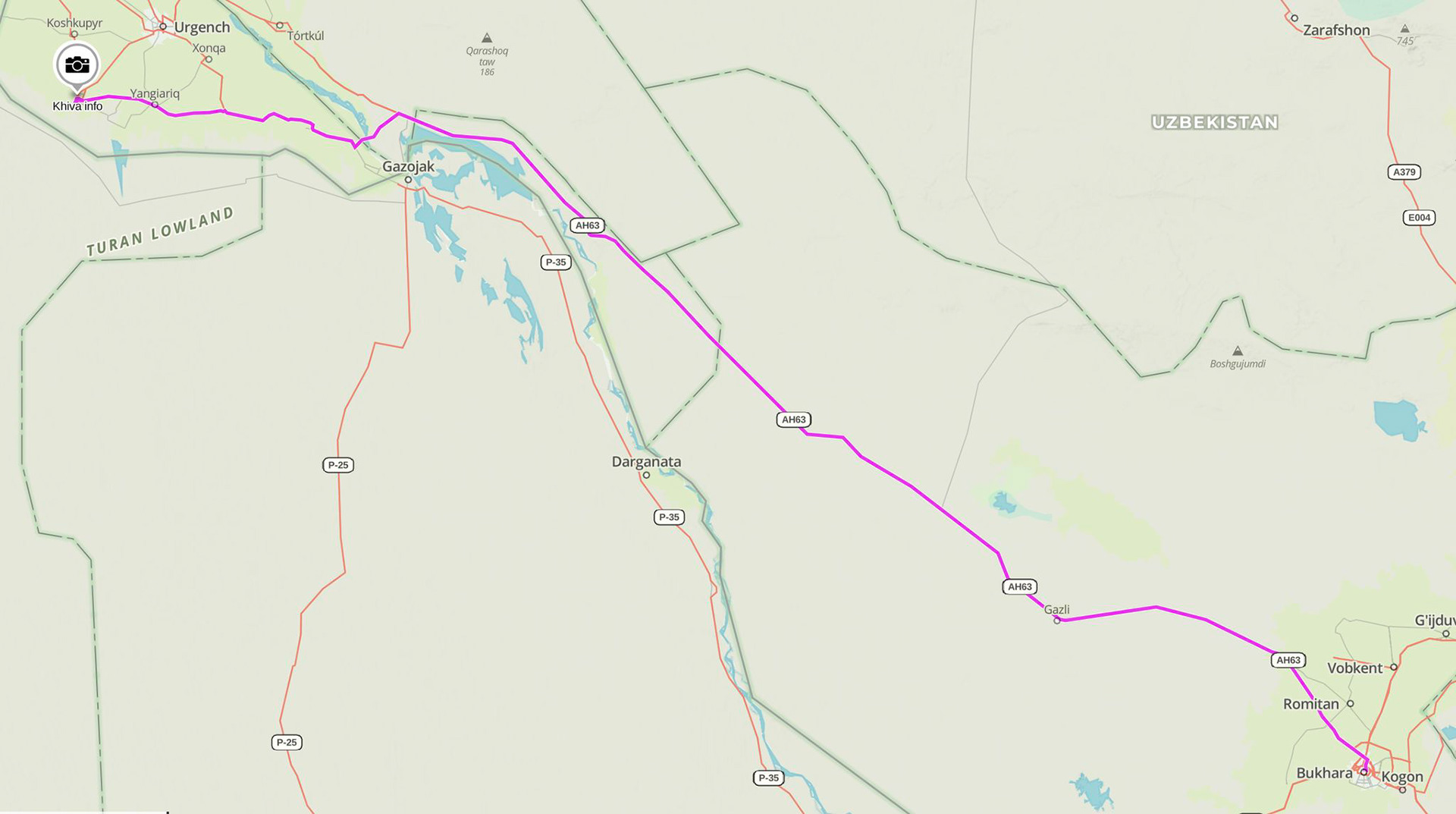
Day 46 - 430 km
Day 47 - Bukhara, Uzbekistan
Bukhara, the second mythical city on our journey along the Silk Road, offers a striking contrast to Khiva. Unlike the preserved ancient atmosphere of Khiva, Bukhara is a bustling city that blends modernity with historical buildings.
What sets Bukhara apart is its lively ambiance, particularly during our visit as a festival took place, bringing dancers and musicians in many different parts of the city.
Moreover, Bukhara boasts several remarkable monuments, each one telling us a unique story about the rich history and architectural brilliance of the city.
Since we had the chance of staying for two nights, I had ample opportunities to capture photographs. So get ready for an abundance of visuals, as I couldn't resist capturing and posting the beauty of what we saw.
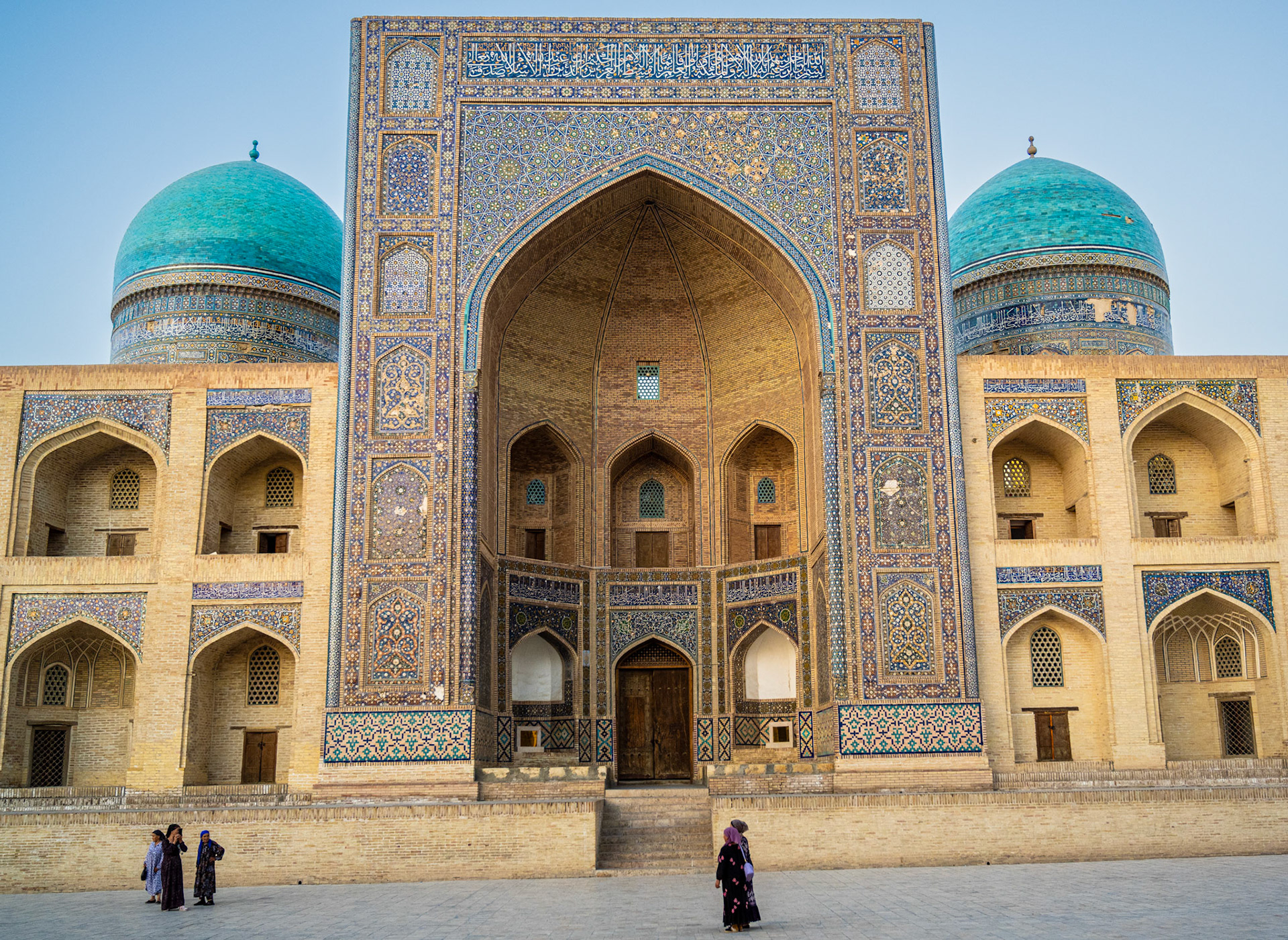
Kalan Mosque
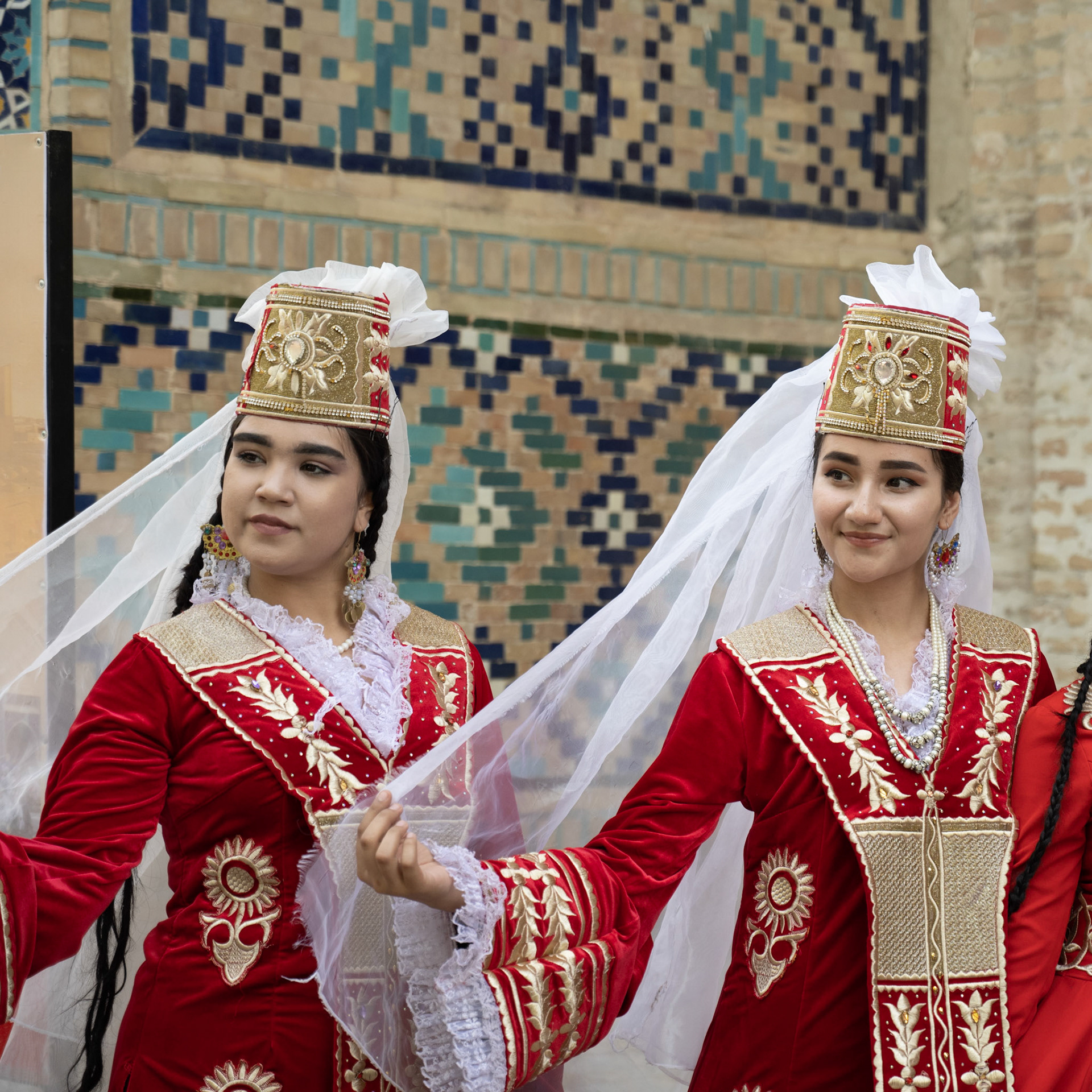
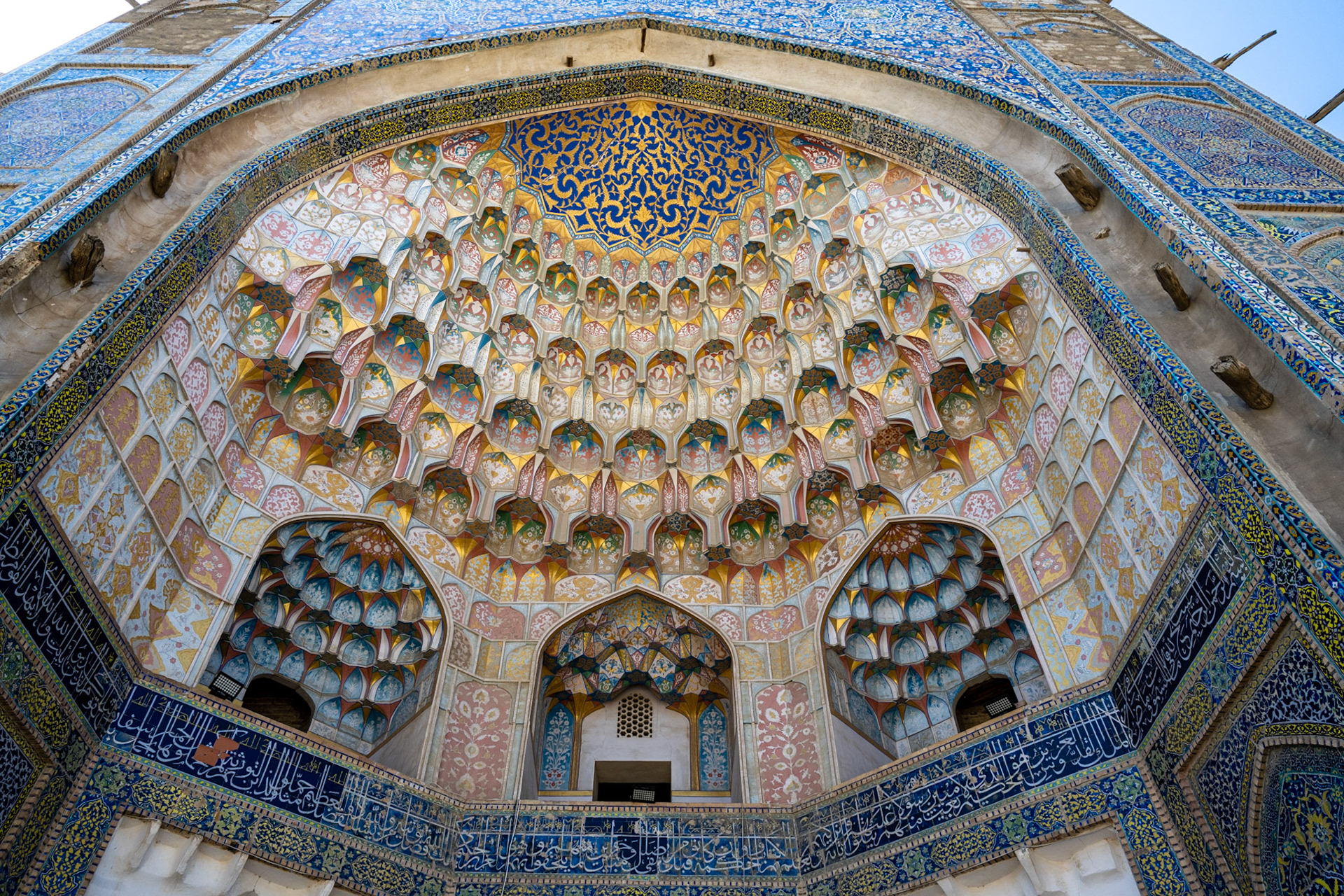
Every detail of the monumental gates is impressive!
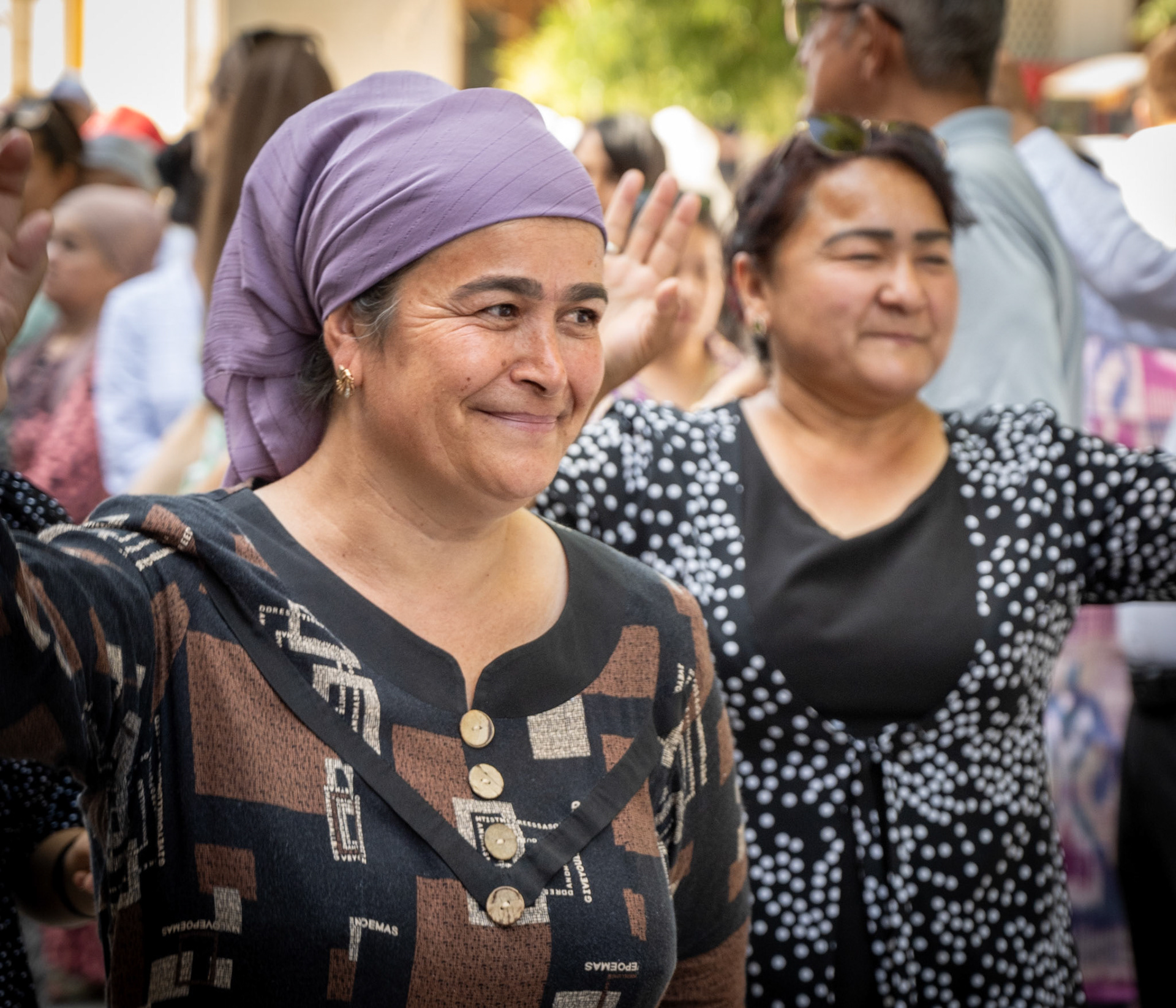
I liked that regular people just joined the dance, whenever a band was playing

Silk, obviously 🙂
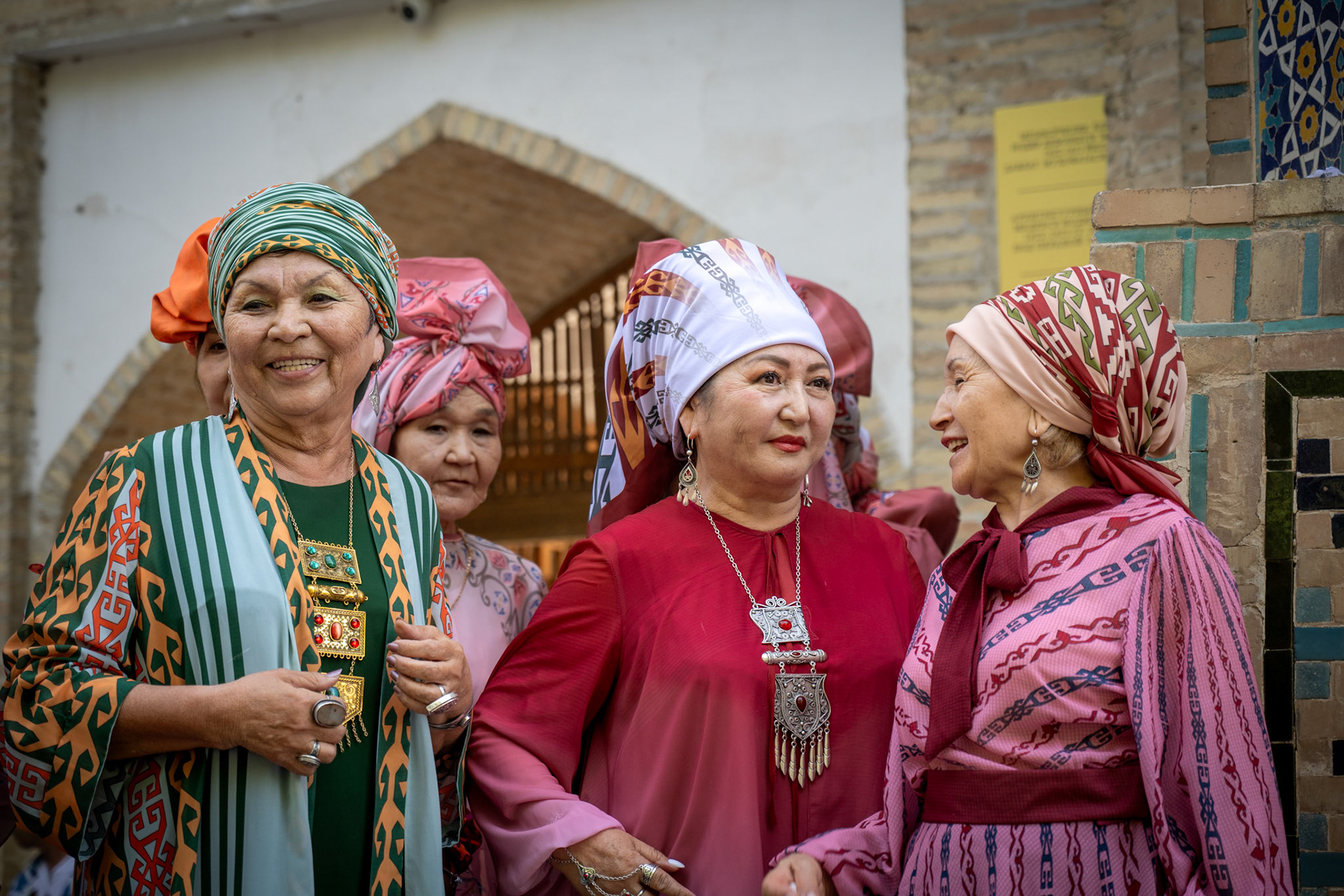
There is no age to have fun!
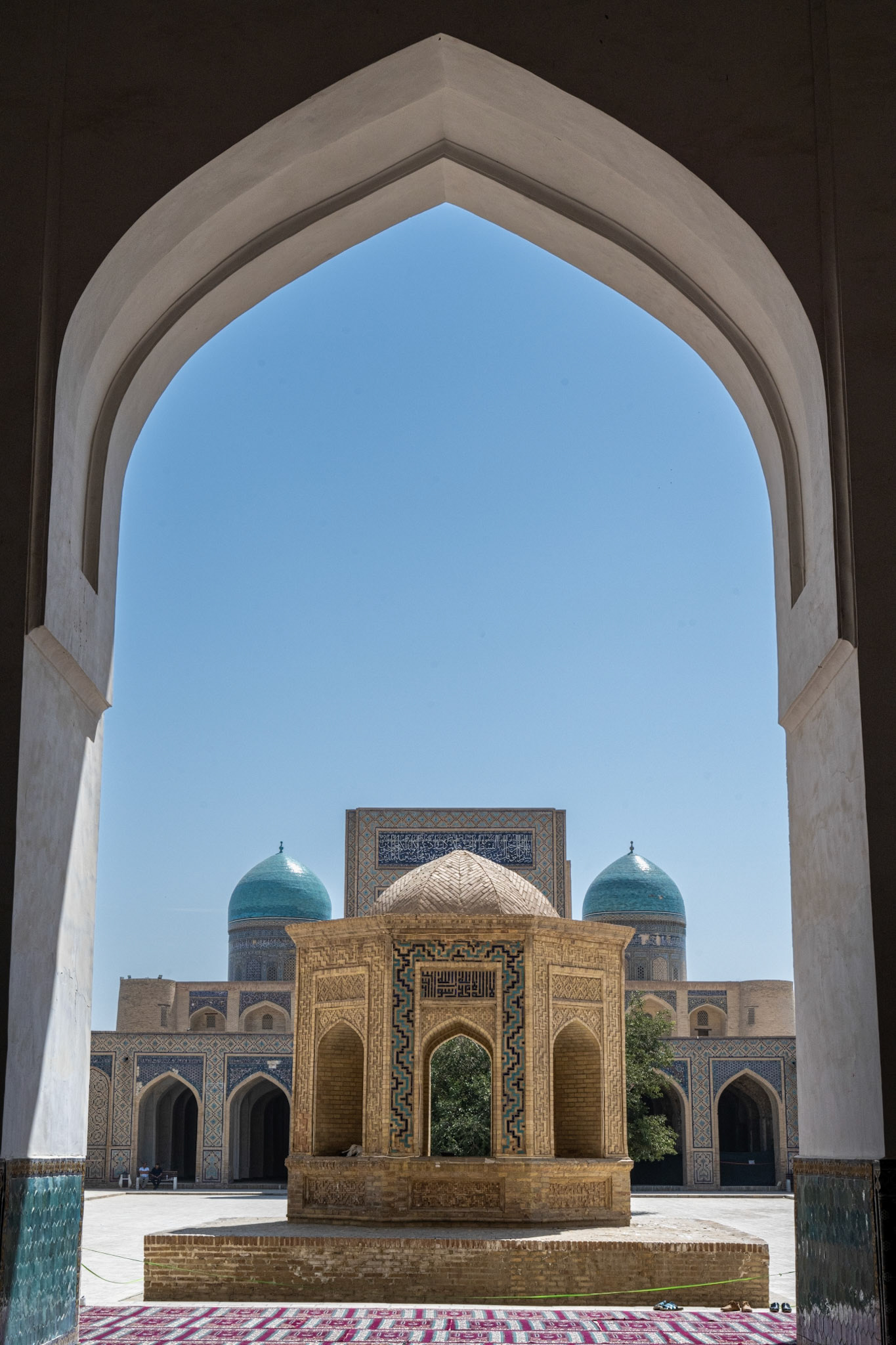
View from the courtyard of the Kalon mosque on the Miri Arab Madrasah
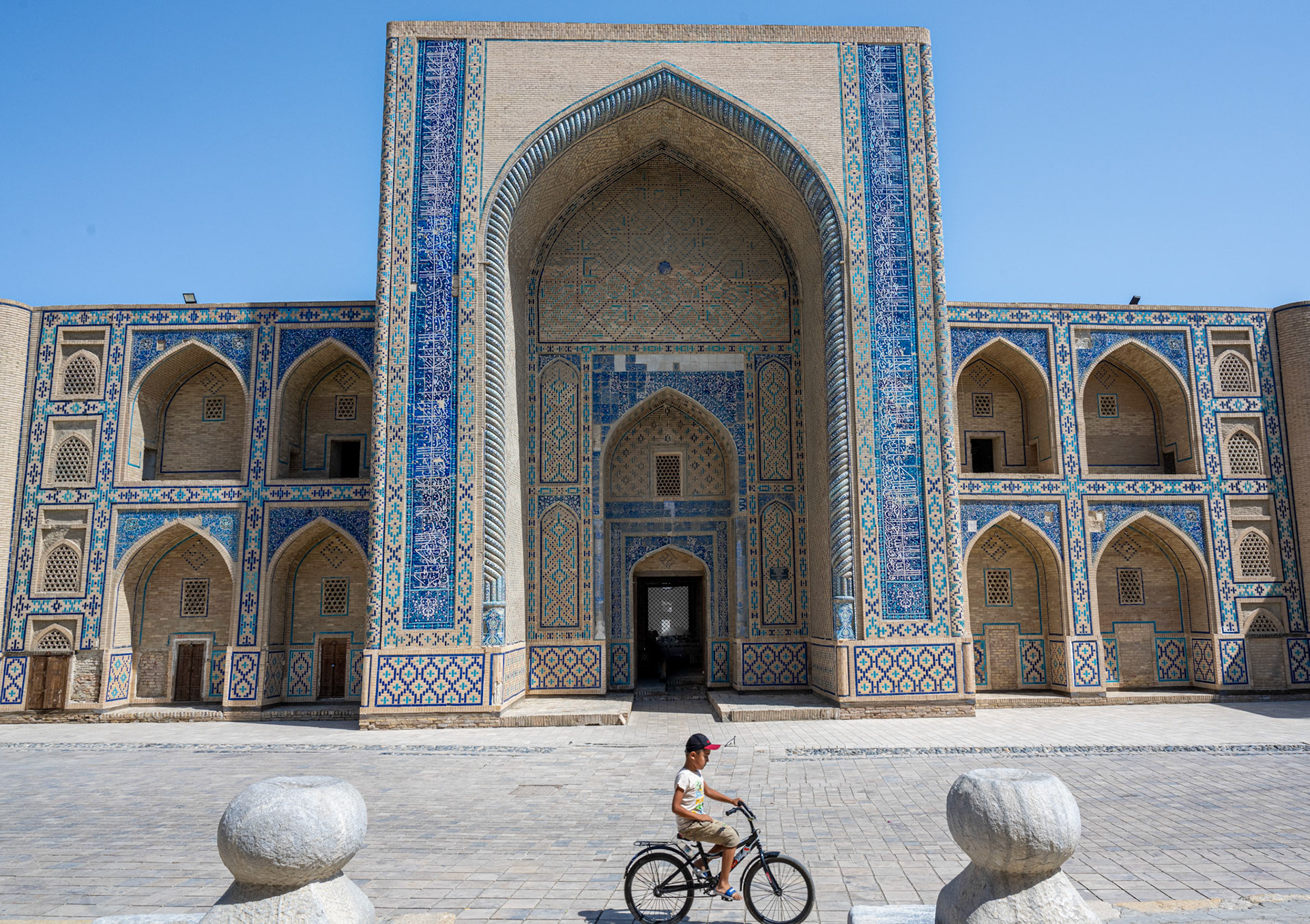
Madrasa Mirzo Ulughbeg
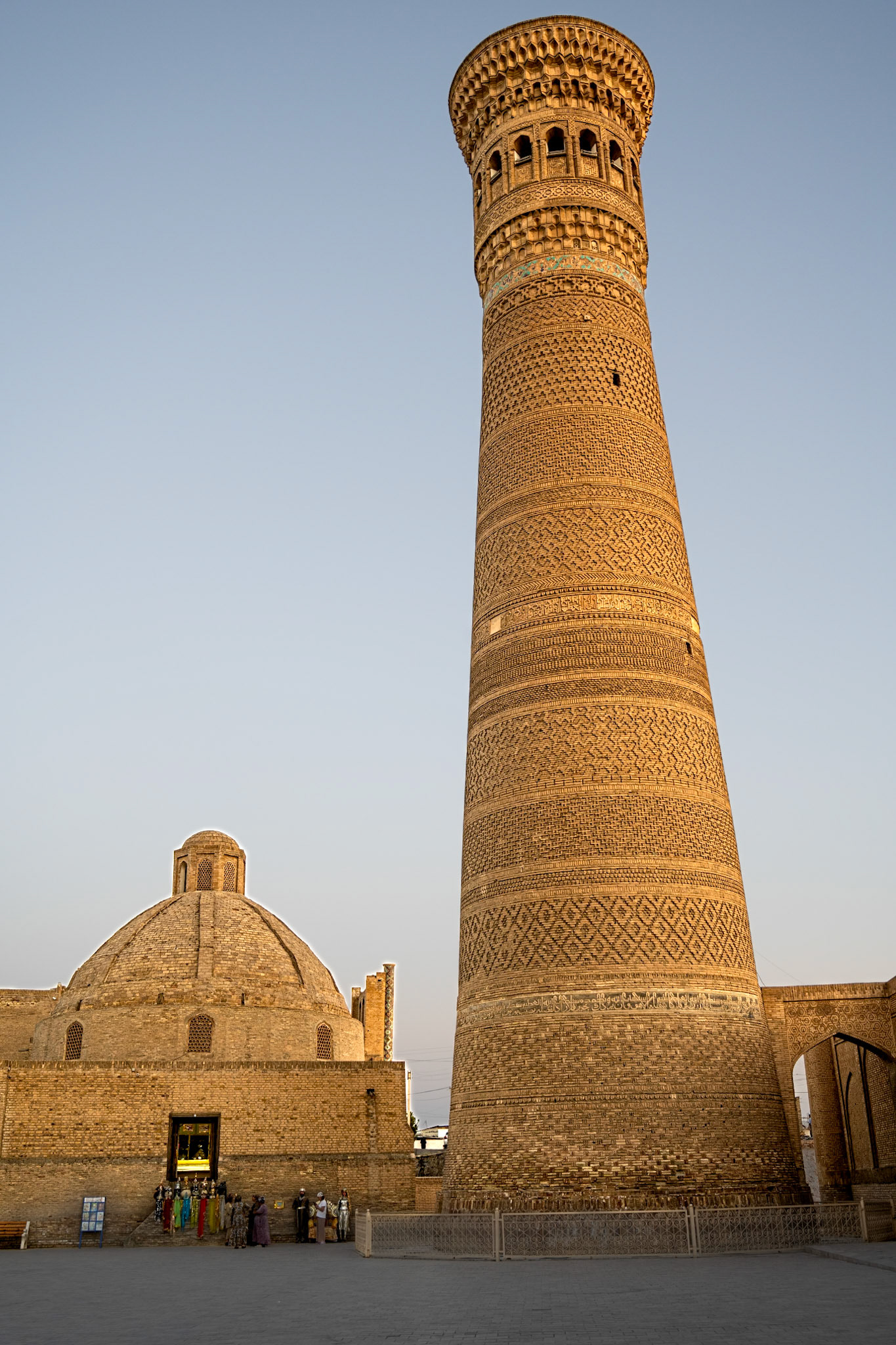
The beautiful Kalon Minaret was built in 1127 AD. Its height is about 47 meters and it dominates the center of the old city
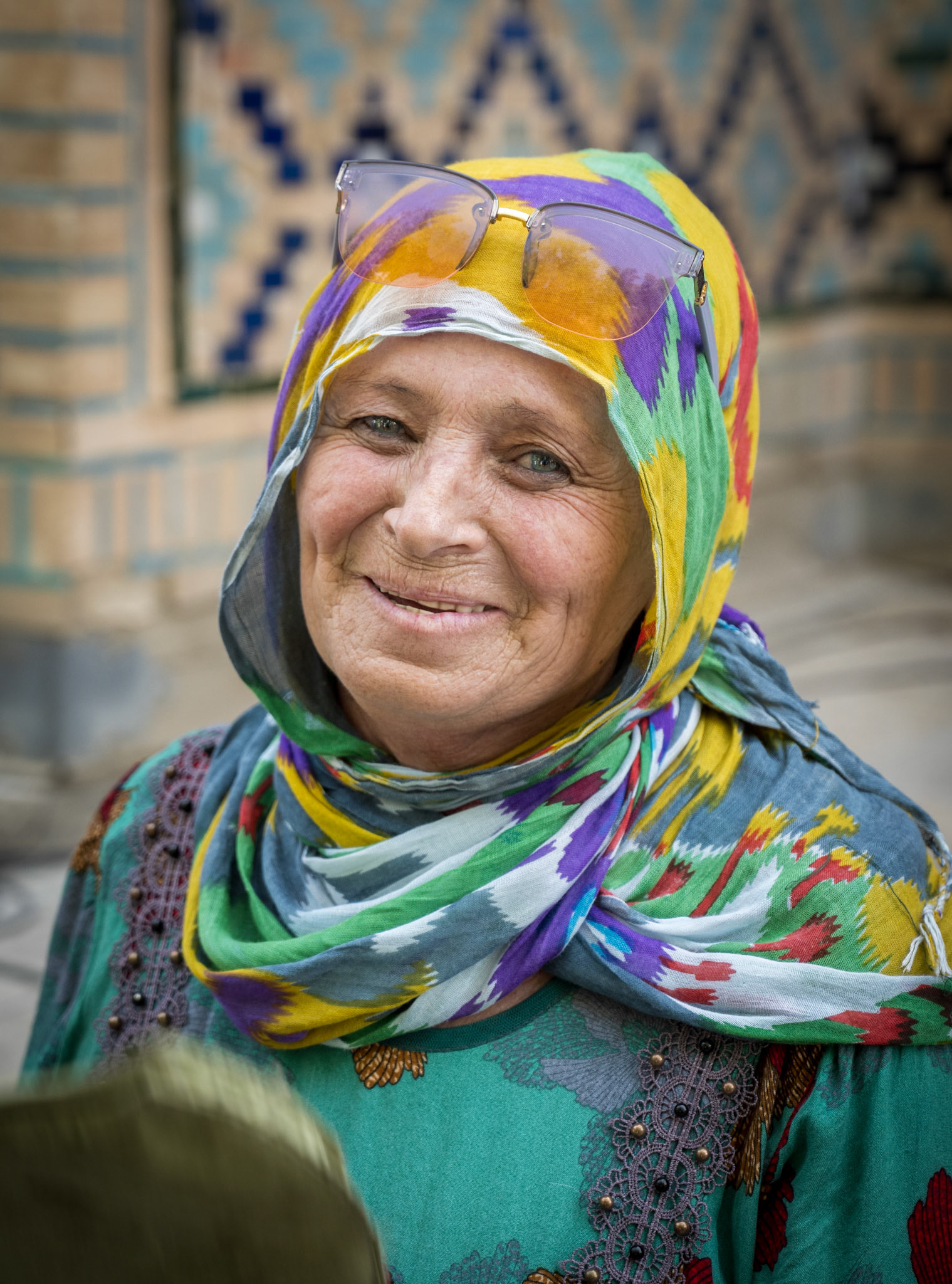
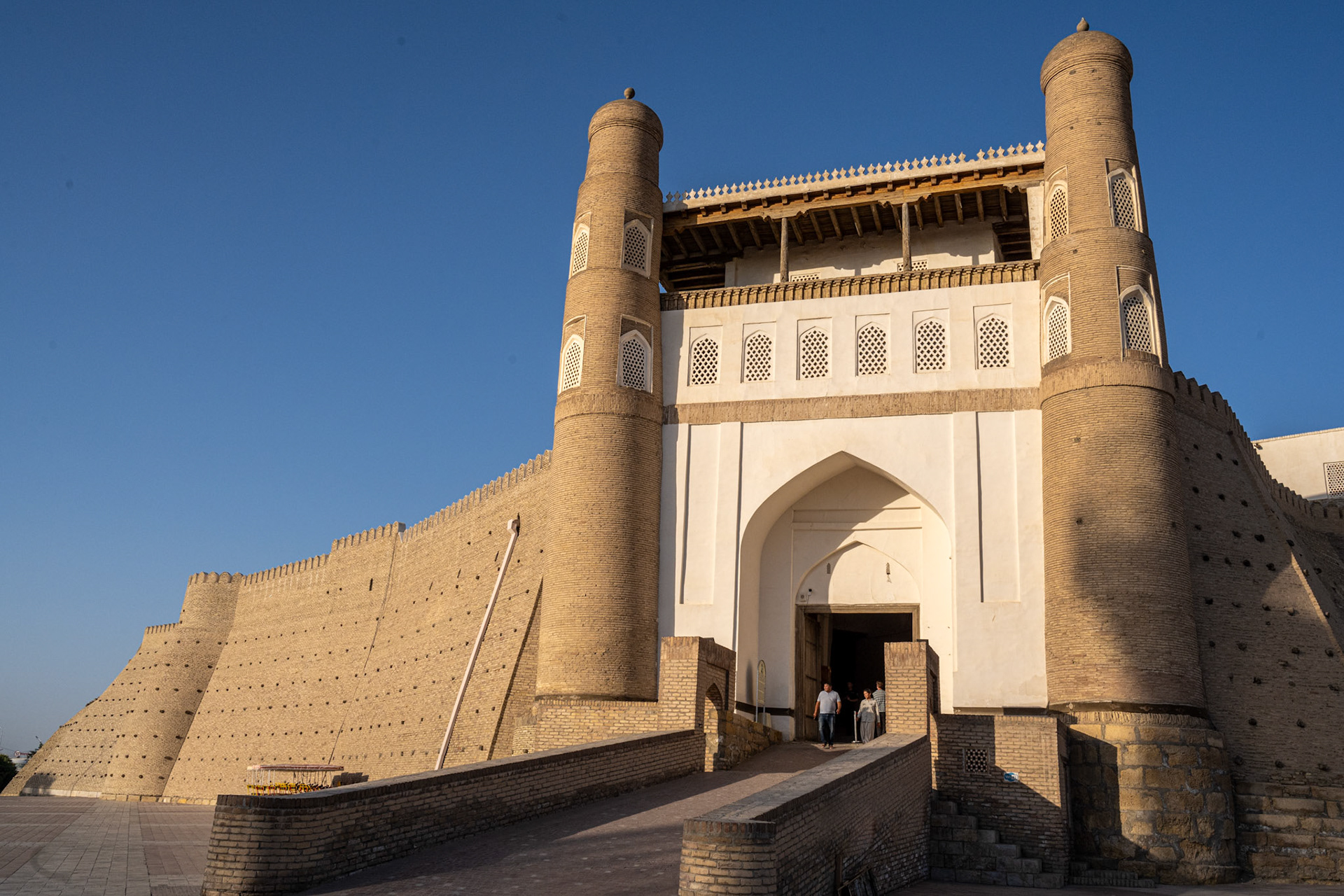
The gate of the Ark Citadel
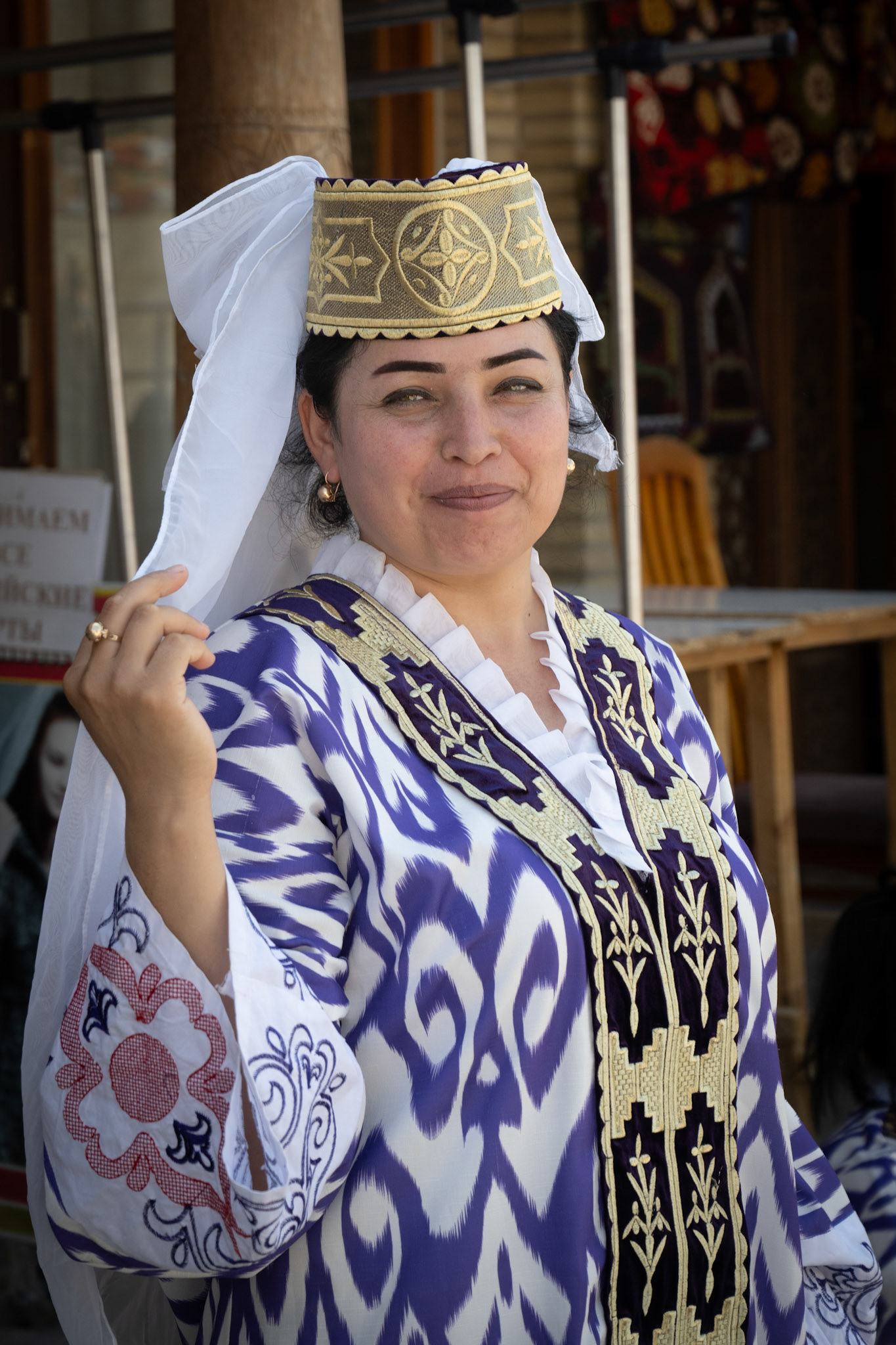
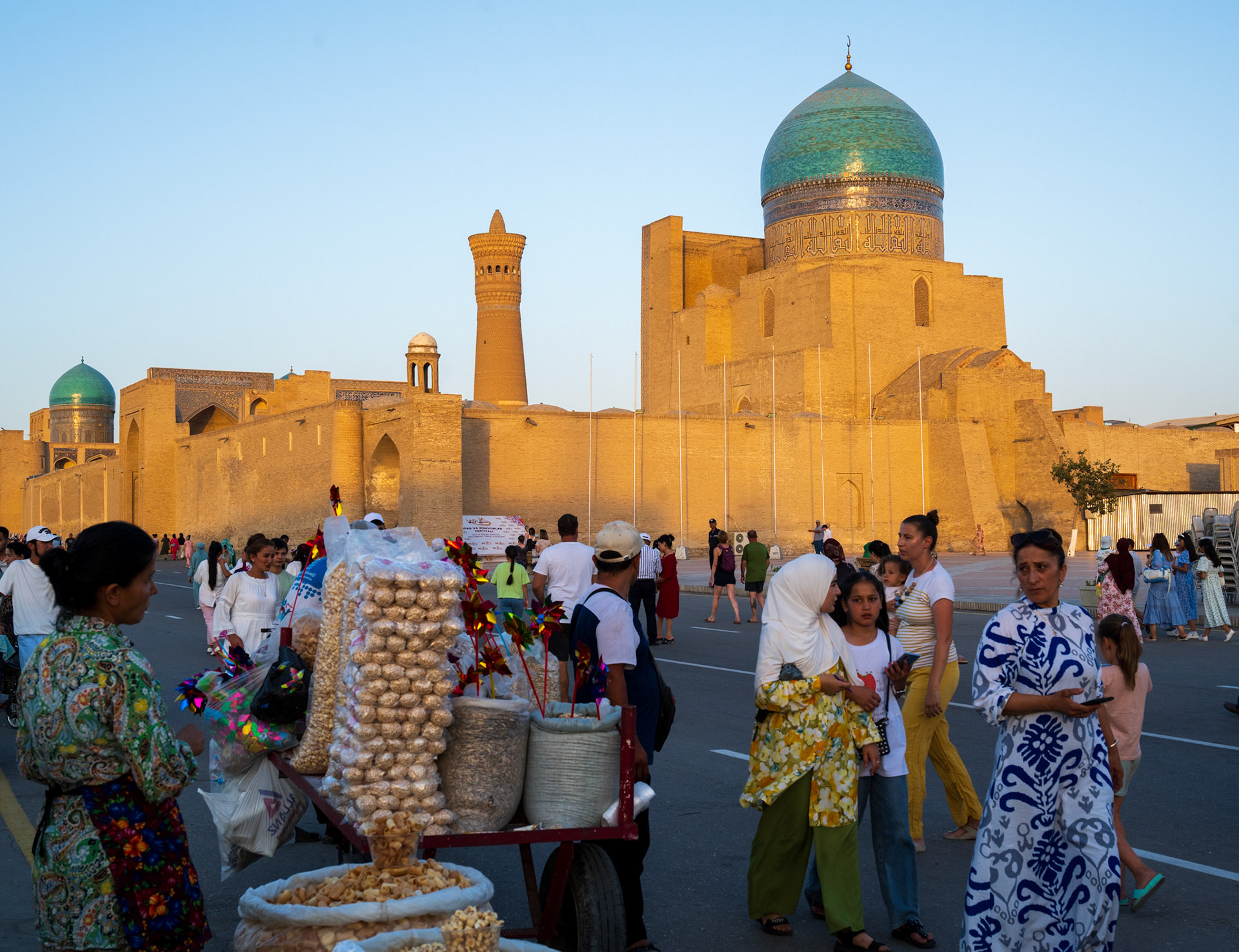
View on the Kalon mosque
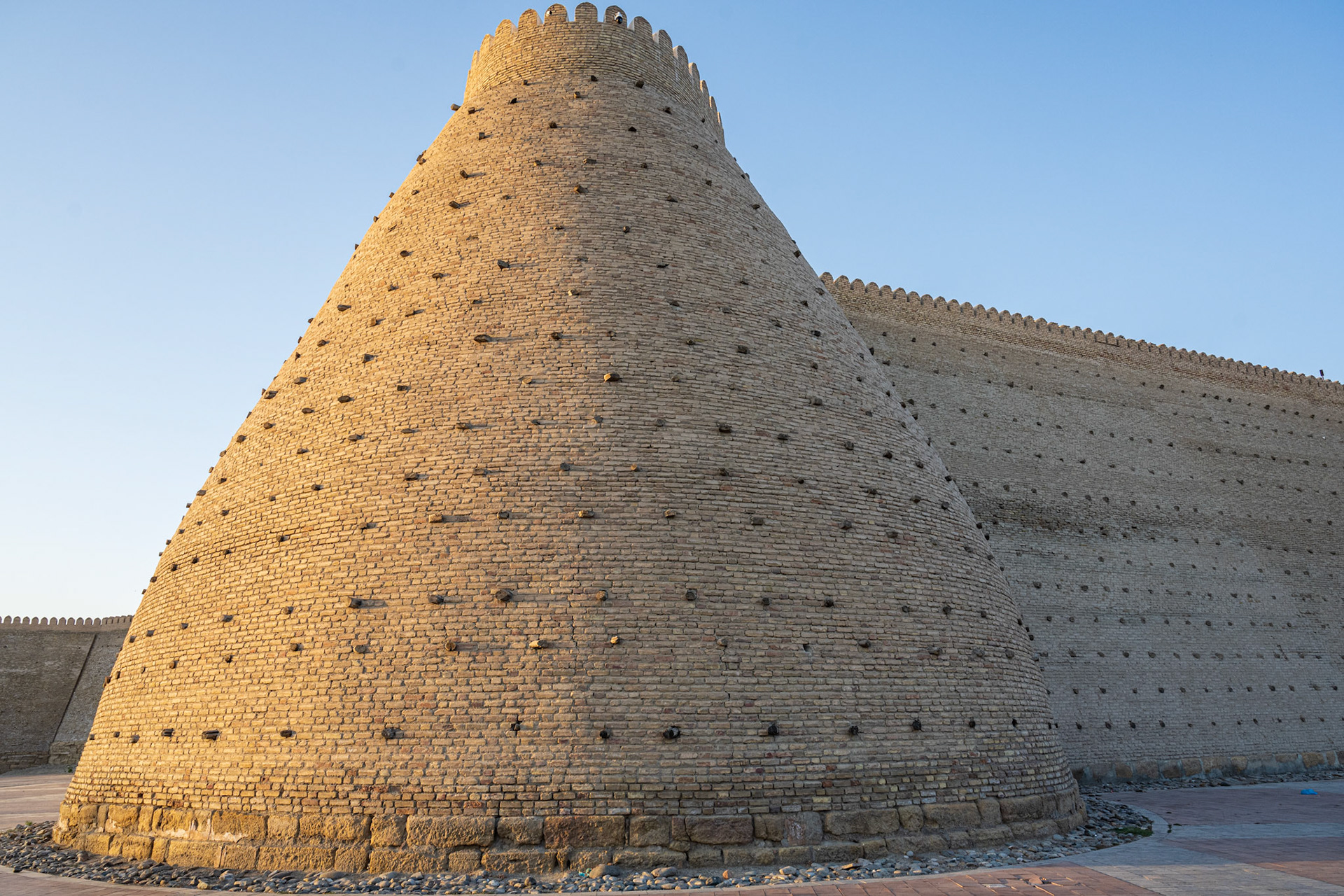
Just incredible!
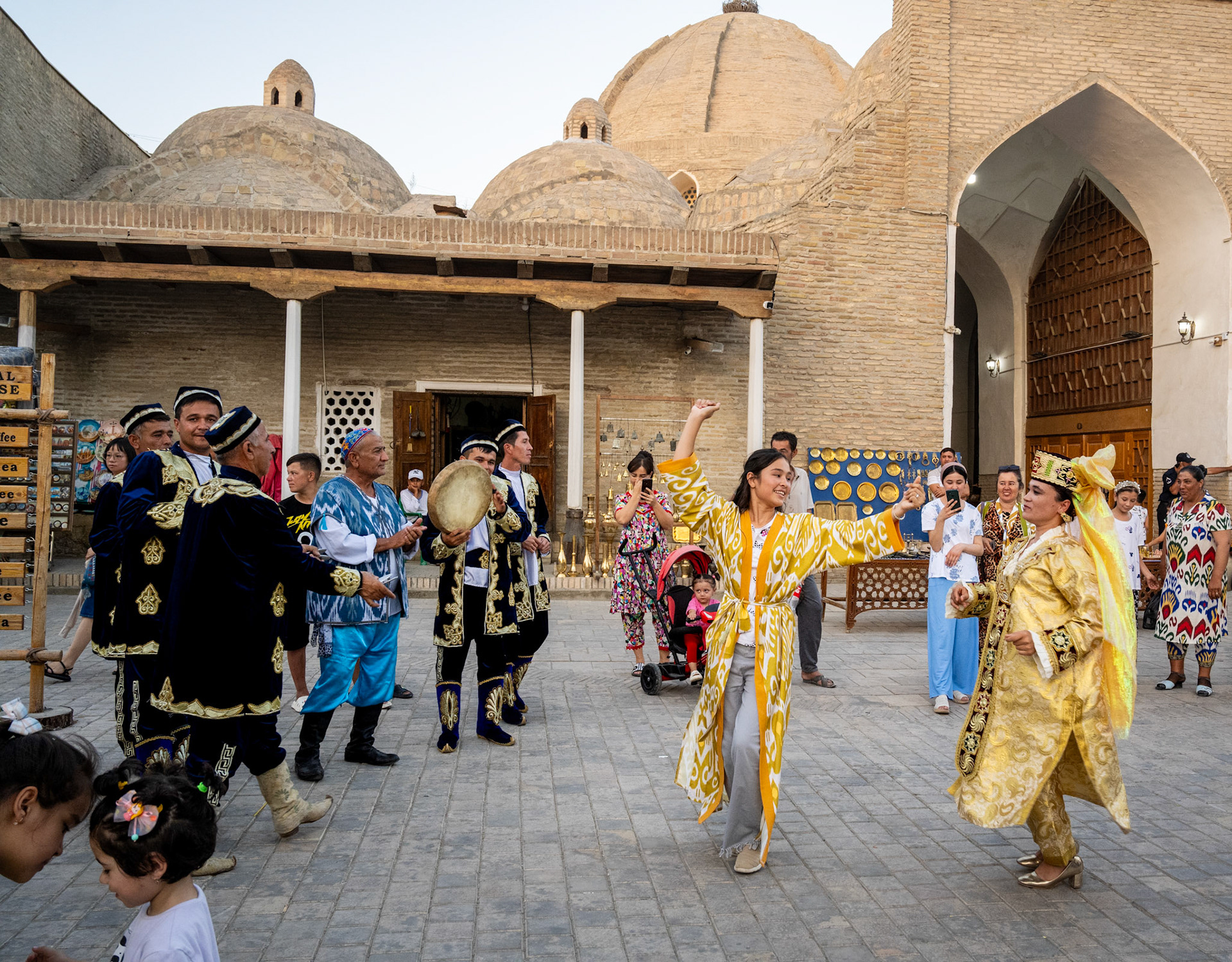
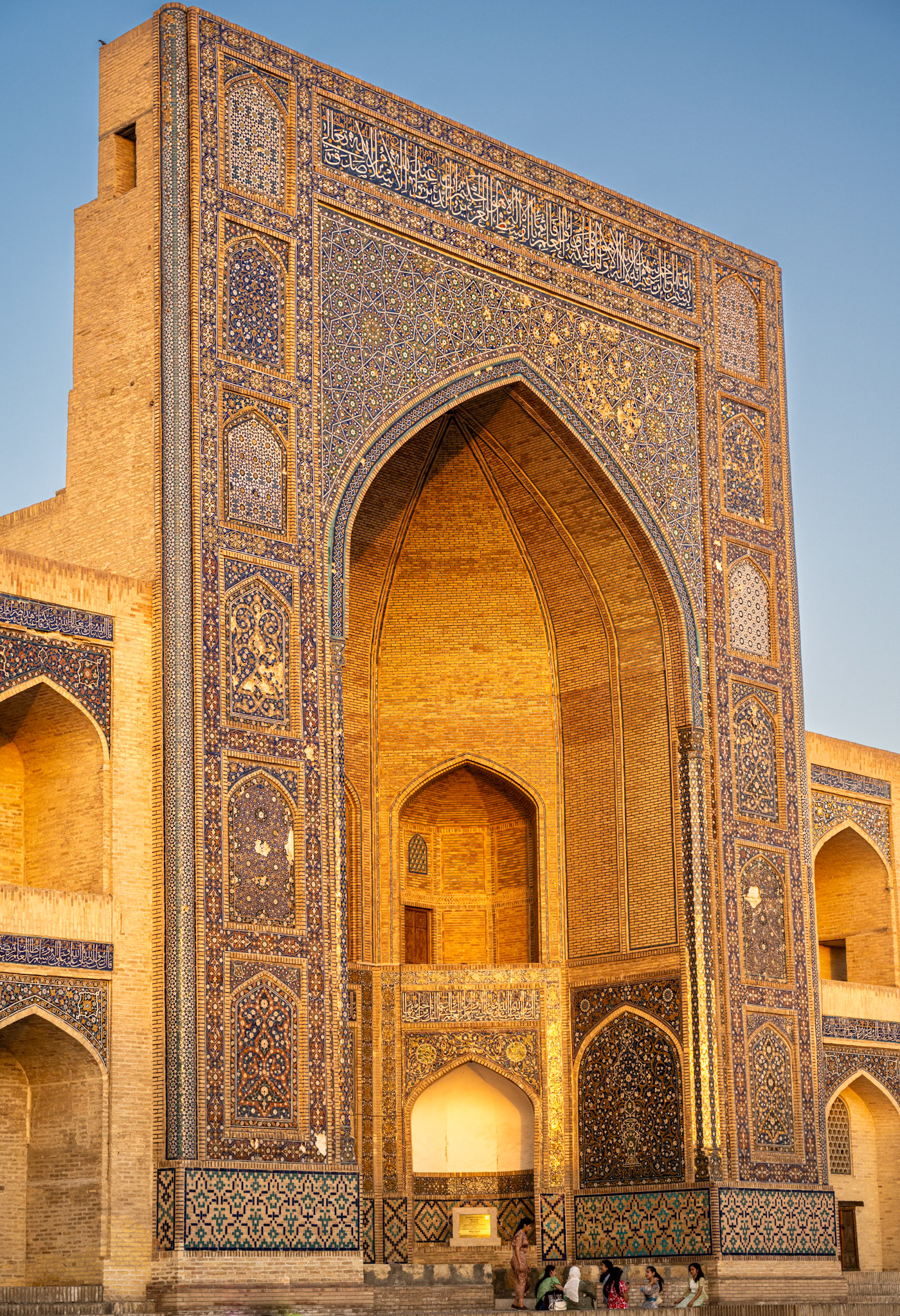
At sunset, it was sparkling like pure gold 🤩
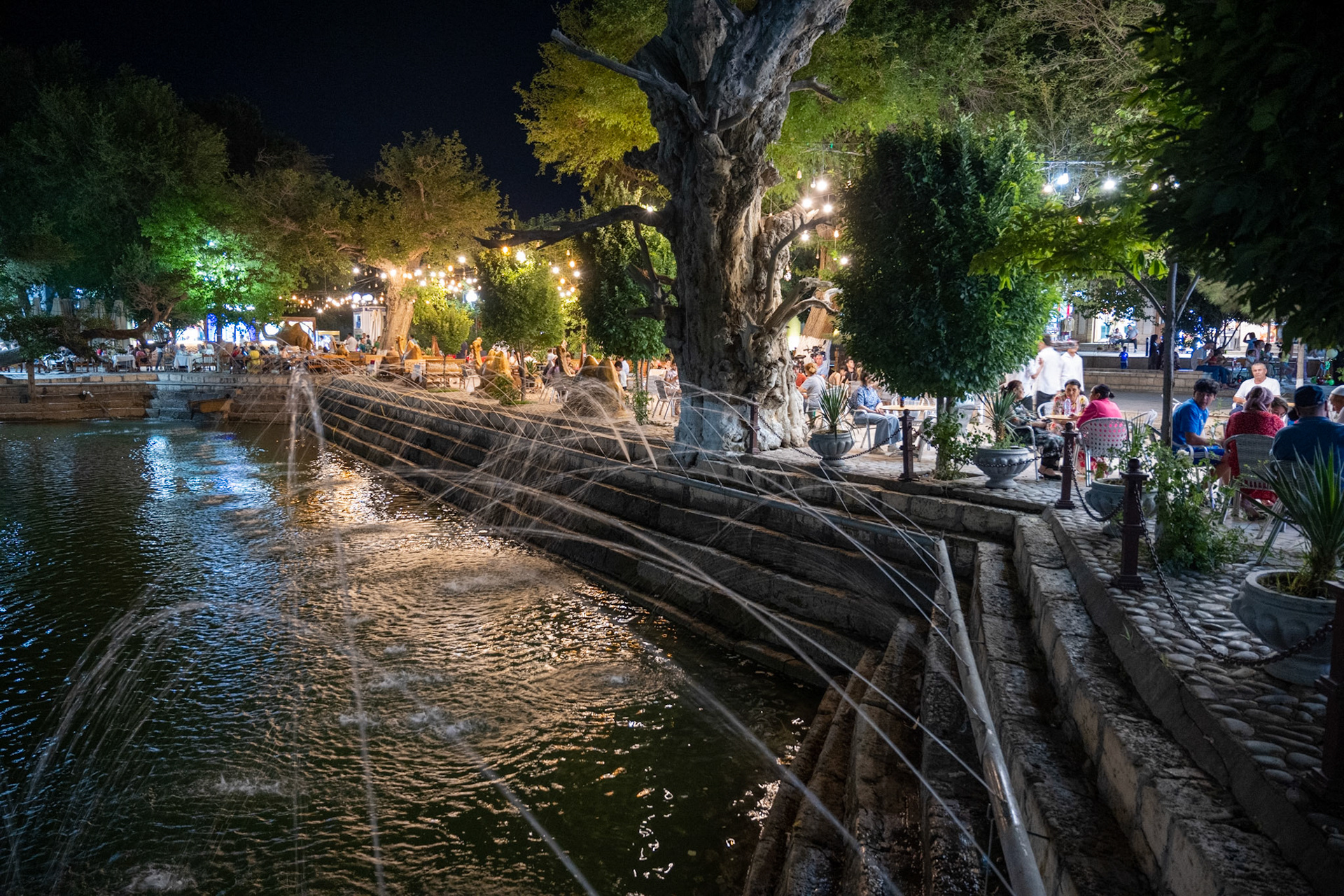
Plenty of nice places to have a drink or a bite to eat
Day 48 - Bukhara to Samarkand, Uzbekistan
The journey to Samarkand was pretty good, with mostly well-maintained roads. Too bad that the heat (41-42 C) persisted, making us eagerly anticipate the respite of crossing over a mountain range before reaching Samarkand. As we meandered through the curves and relished the scenery, we realized that it was the first time since leaving Georgia, a week ago, that we had encountered any of that.
Before diving into the exploration of Samarkand, we had a crucial task at hand: finding engine oil. Aware of the challenges in obtaining it in Uzbekistan, we had managed to secure only 5 liters from Kazakhstan, but needed 5.6 liters for both bikes. We held onto hope that Samarkand, a city of half a million people would have some.
Relying on Google's guidance, we were directed to non-existent "motorcycle shops." We searched for auto parts stores and eventually found ourselves in a bazaar, not the shopping center we were promised. Several shops stocked engine oil, but not suitable for motorcycles. Discussing with some shopkeepers via Google translate they kindly invited us for a cup of Fanta orange (very popular here) and even treated us to a shot of vodka!
Eventually, we found ourselves in another shop where the owner, Aziz, went above and beyond to assist us. He reached out to the entire city for help. It looks like he might have to order it from Tashkent, which means staying an extra day in Samarkand. He also wants to invite us to a good plov restaurant the next day!
With that hopefully resolved, it was time to explore Samarkand, renowned as one of the most significant sites along the Silk Road. It’s one of the oldest cities in the world, as it dates back to around the 7th century BC, making it even older than Rome. While it may appear modern today, the abundance of monuments and archaeological sites scattered throughout the city is a testament to its ancient past.
On the evening we visit Gur-e-Amir, meaning “Tomb of the King” in Persian, is a beautiful architectural complex with a ribbed turquoise dome. The exterior decoration of the mausoleum consists of blue, turquoise and white tiles organized into geometrical and epigraphic ornaments against a background of terracotta bricks.
The interior of the mausoleum is even more spectacular!
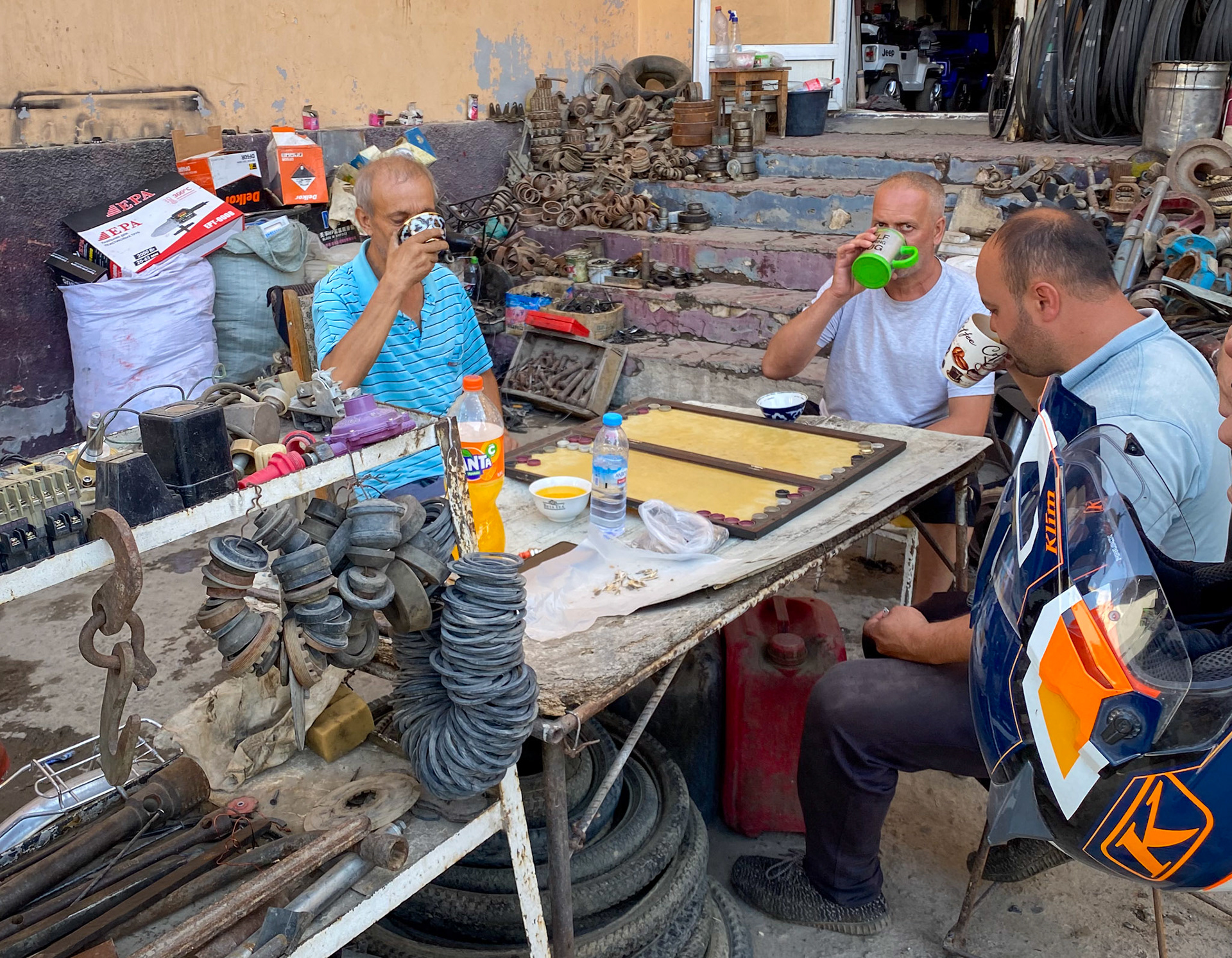
Do you think that we'll find good motorcycle oil there? No, but we found an invitation to share their vodka!
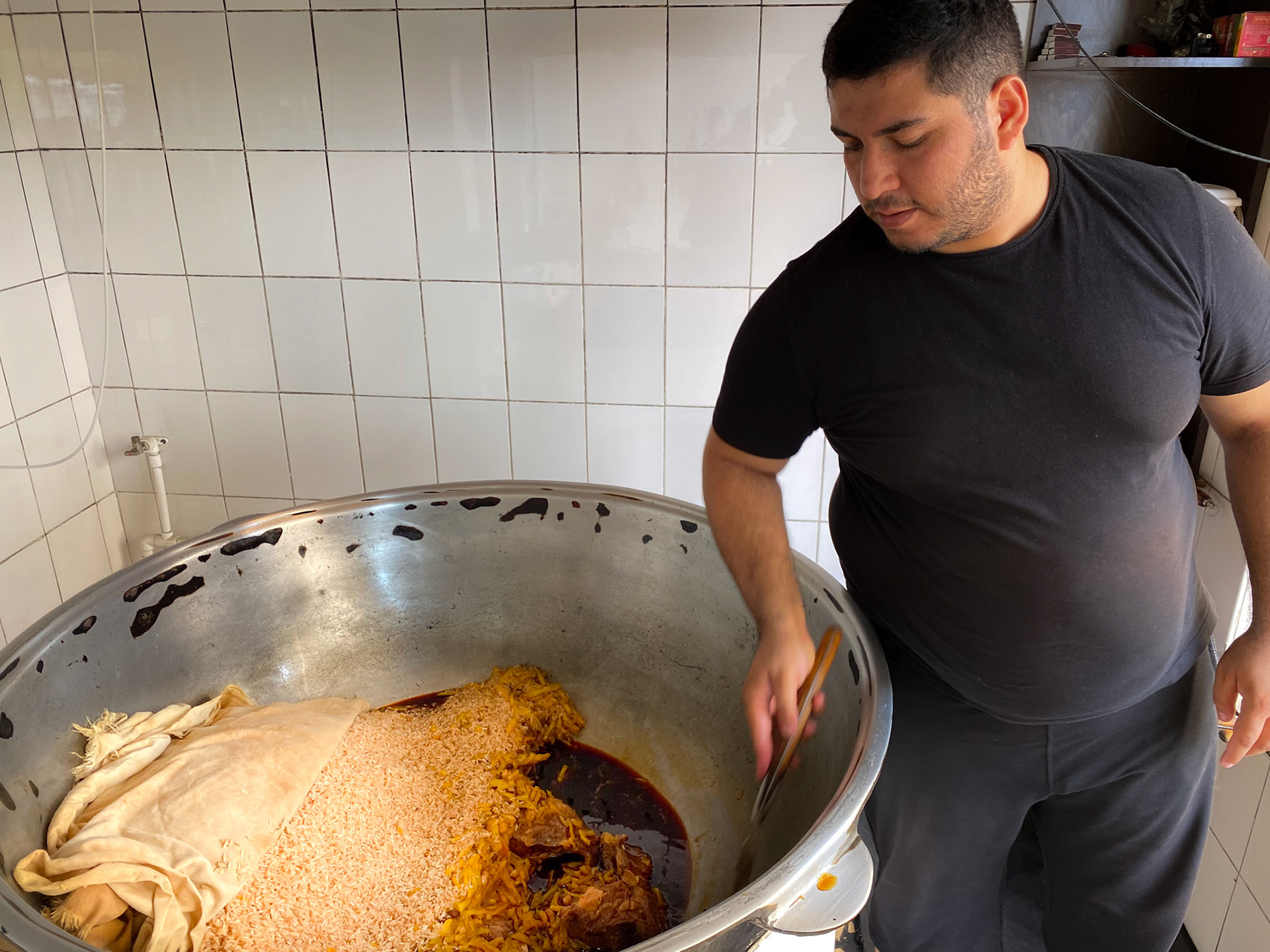
Aziz invites us to eat plov, and that's how it's made
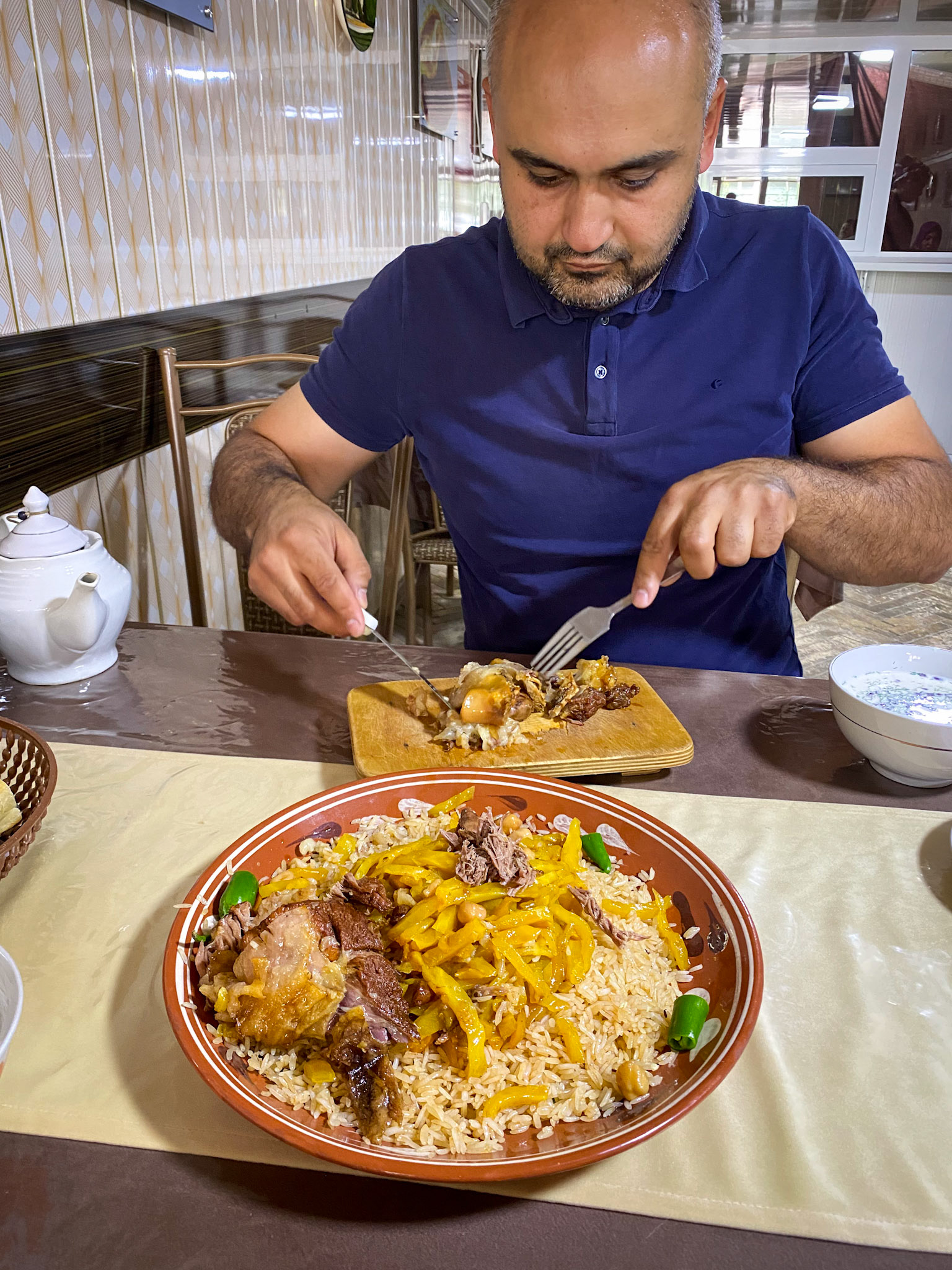
Aziz was so nice to take us for lunch and, despite our insistence, pay for it! They serve plov in a big plate and we all eat from it with a spoon. There is a small cutting board on the side where Aziz is removing the bones and skin of the pieces of lamb.
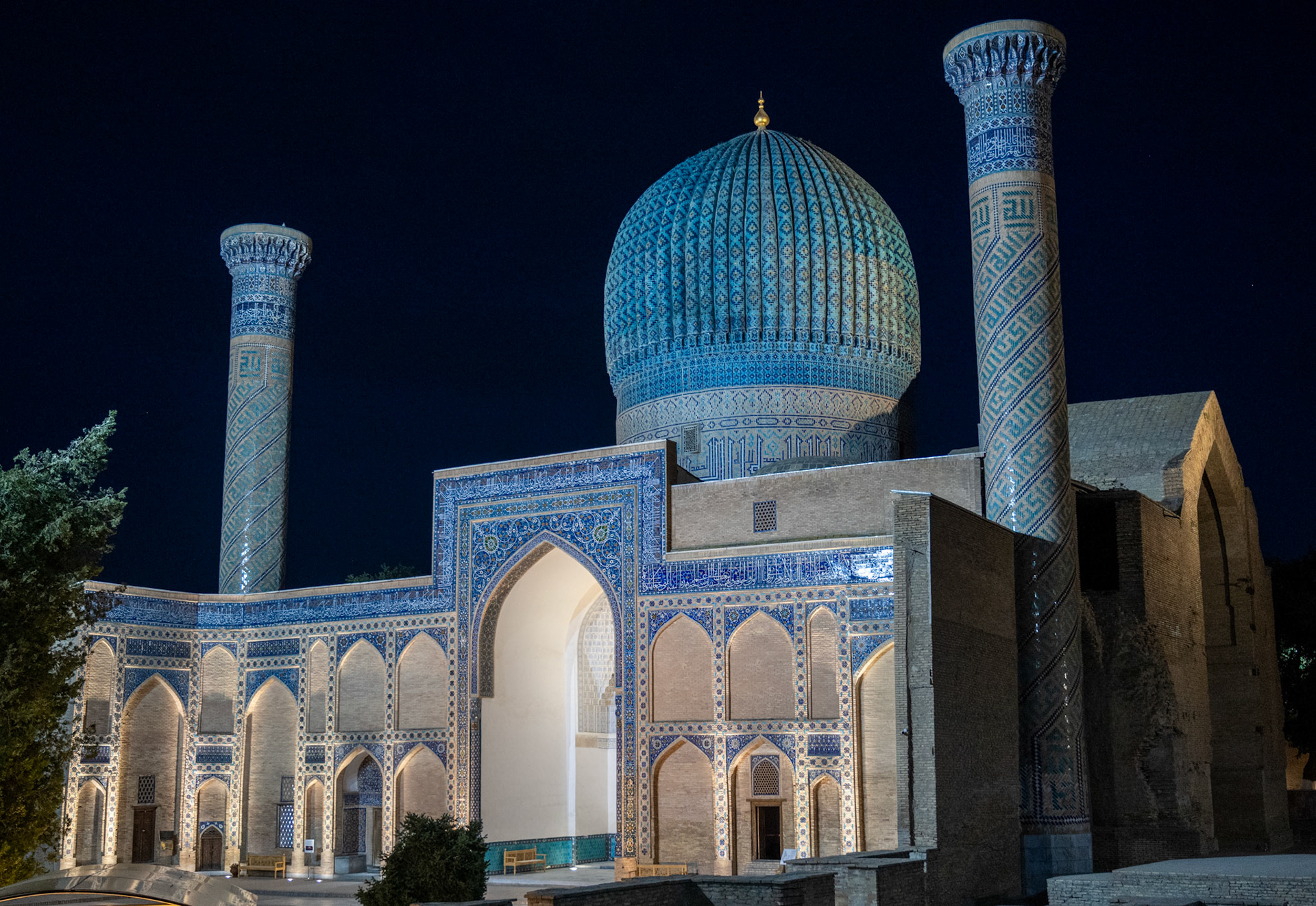
Gur-e-Amir, is Amir Timur mausoleum
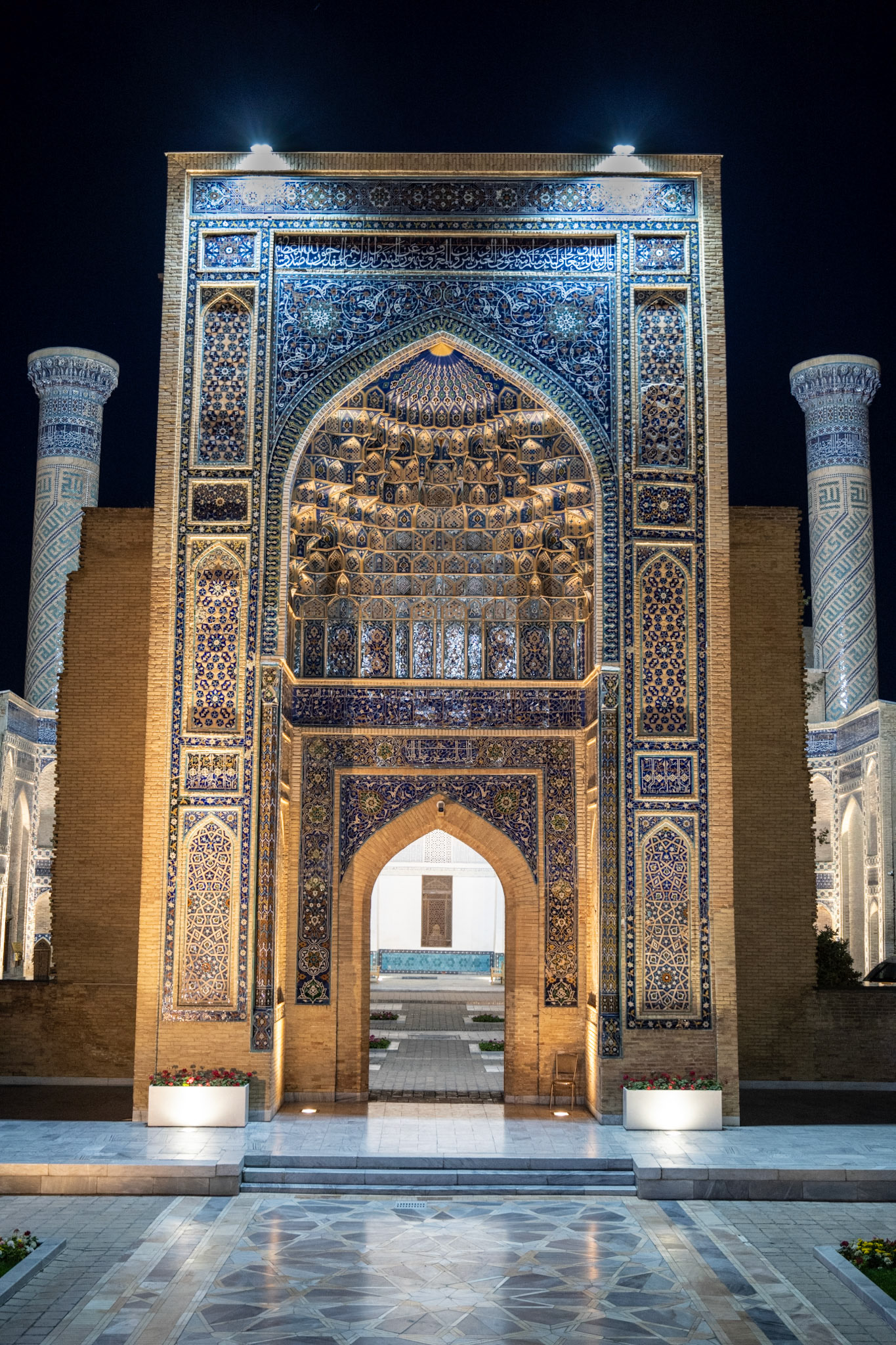
The main door of Gur-e-Amir, which means “Tomb of the King” in Persian.
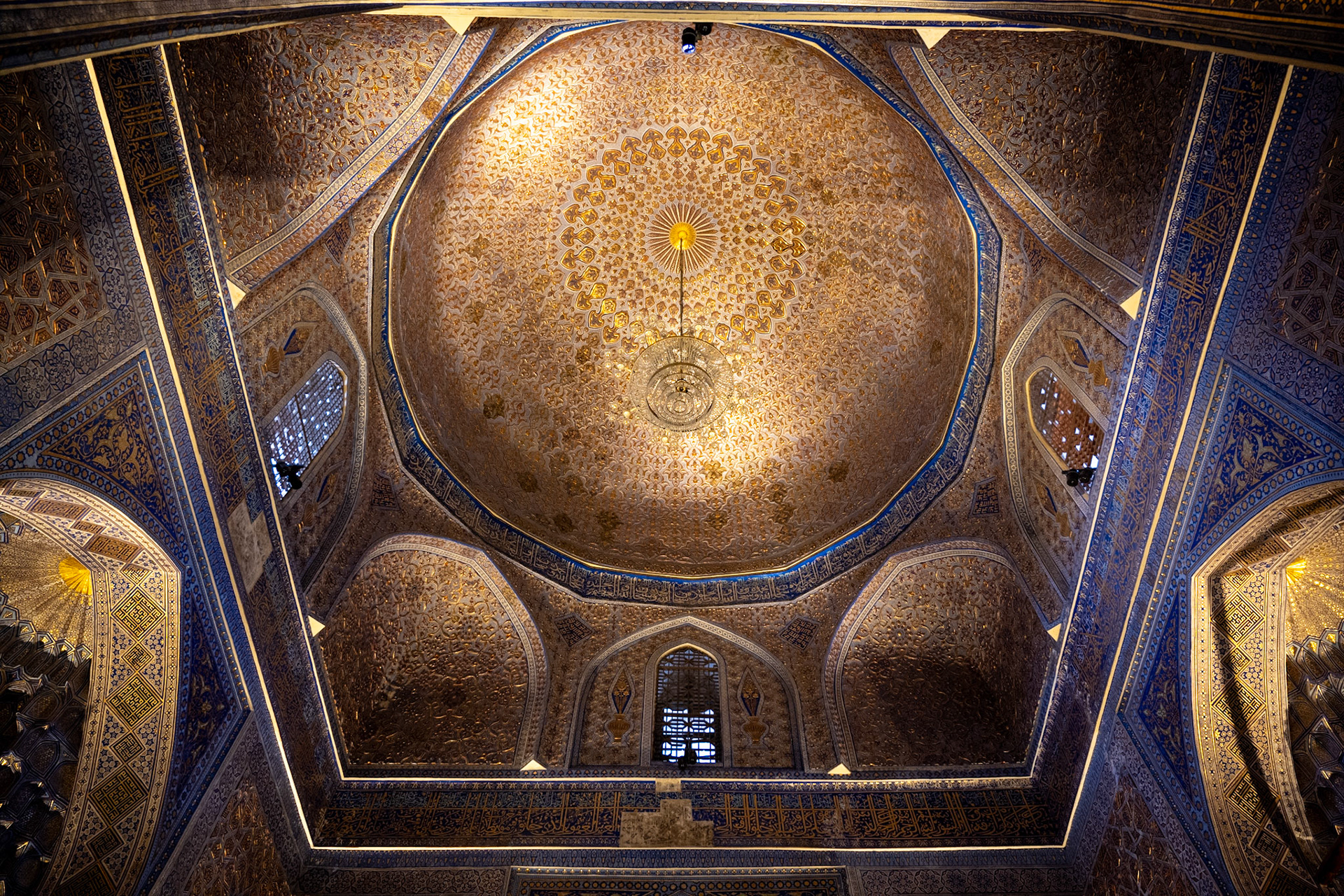
The interior of the mausoleum is even more spectacular!
Day 48-49 - The Registan, Samarkand
Samarkand has held a special place in my heart since childhood, and it has been a driving force behind this journey. That's why I find it perplexing that the people here couldn't maintain it the the way it was in my childhood dreams . While it is undeniably a pleasant city with its fair share of parks and pedestrian alleys, it lacks the exotic and legendary atmosphere I had envisioned.
Nevertheless, the remaining monuments in Samarkand are everything I had hoped for and more. One standout is the Registan, an awe-inspiring architectural ensemble comprised of three magnificent structures that exemplify the splendor of medieval Islamic architecture. This central square stands as the most iconic sight in not just Samarkand but the whole of Uzbekistan. It served as the beating heart of the Timurid dynasty.
We were so captivated by the Registan that we visited it three times during our stay, each visit at a different time of day. Its timeless beauty and grandeur left us in awe.
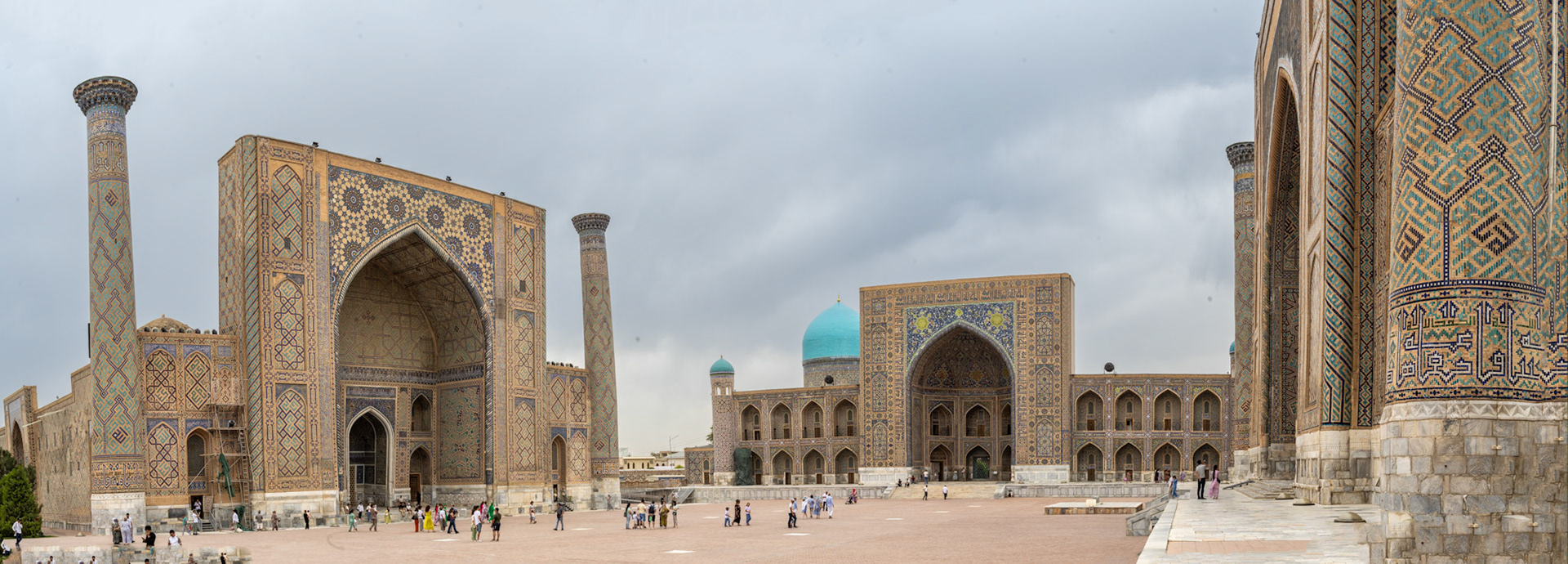
The 3 edifices of the Registan. The scale is incredible.
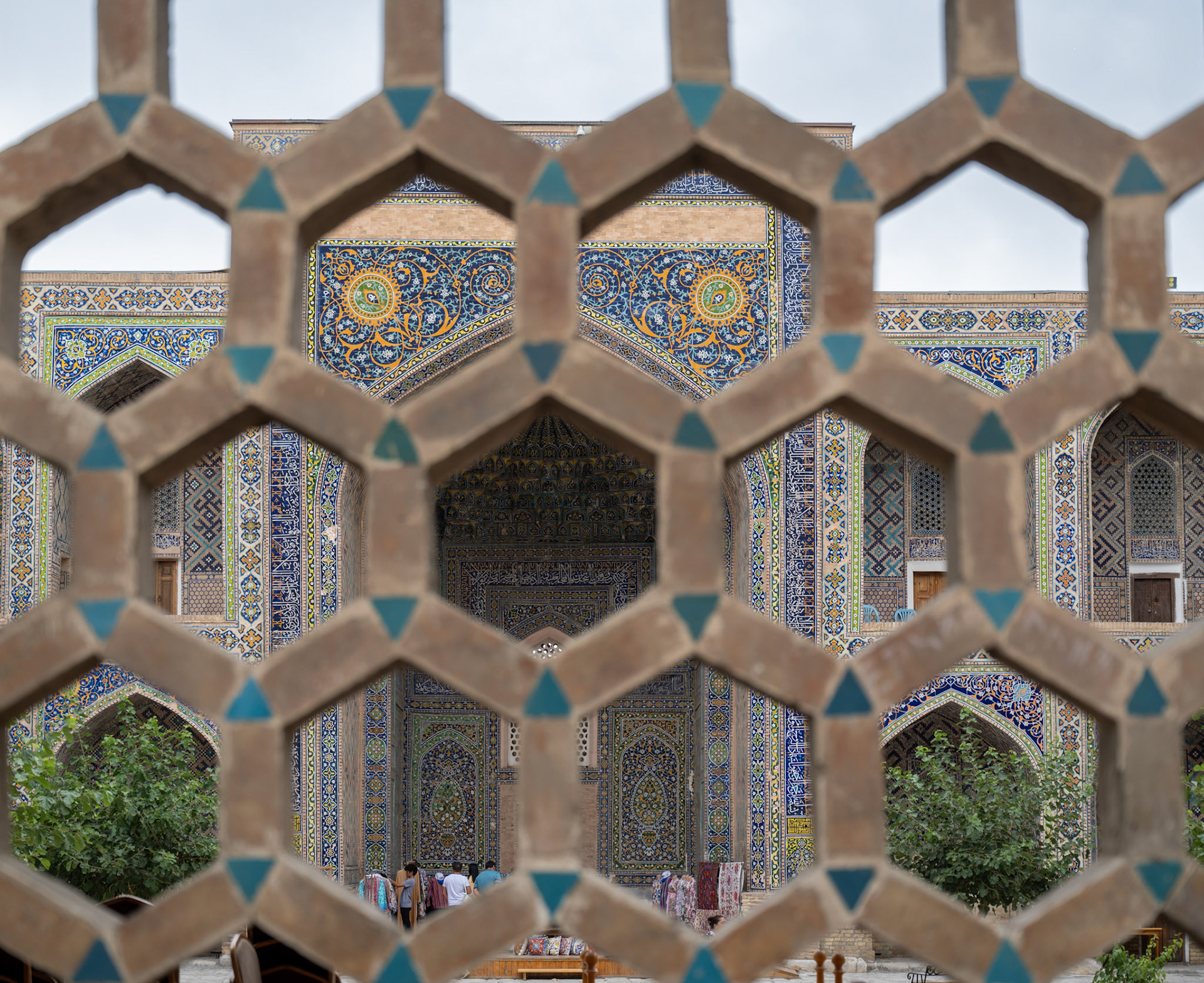
Picking through a traditional window

Don't forget to look up when you cross a threshold!
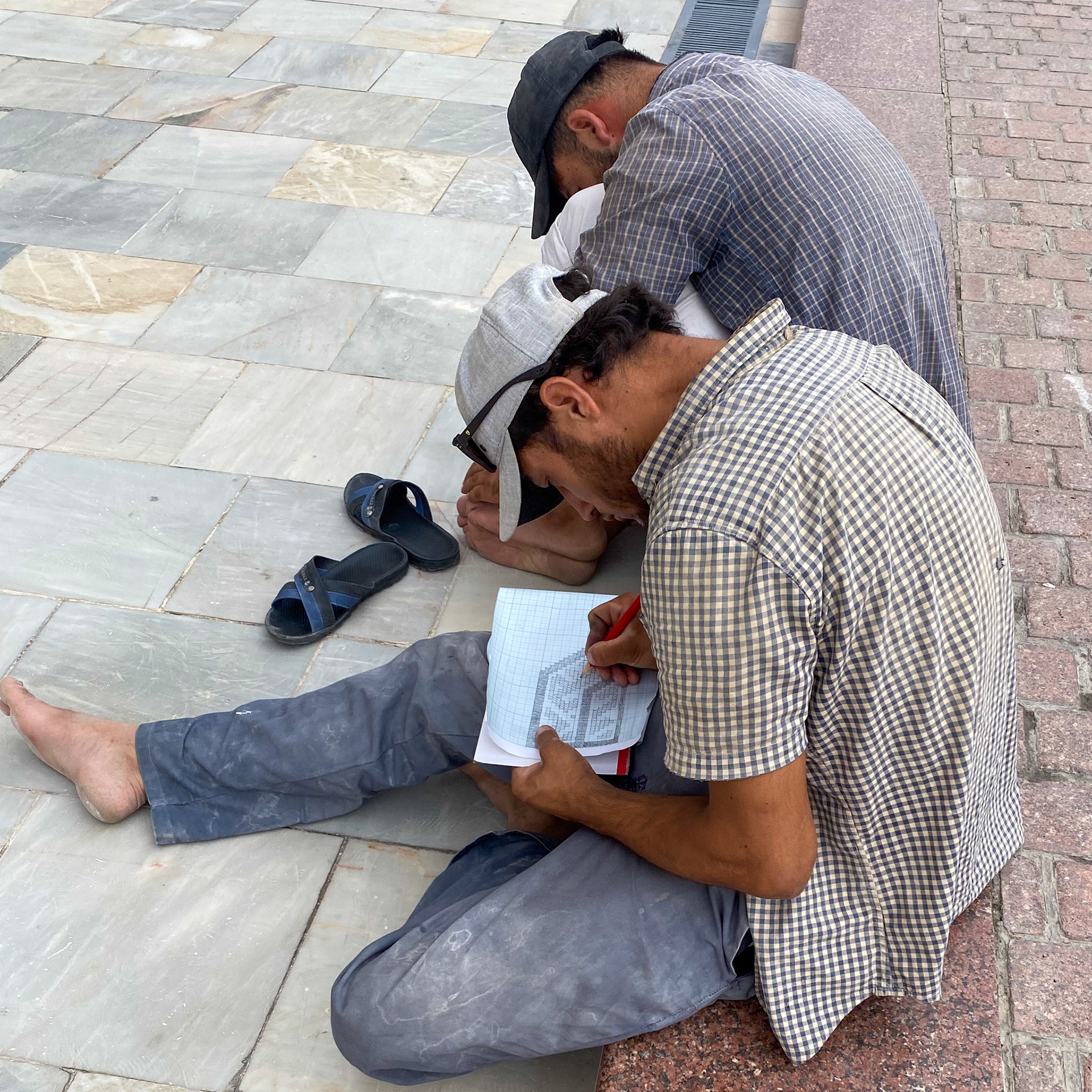
Workers for the continuous upkeep of the edifices. No computer assistance here
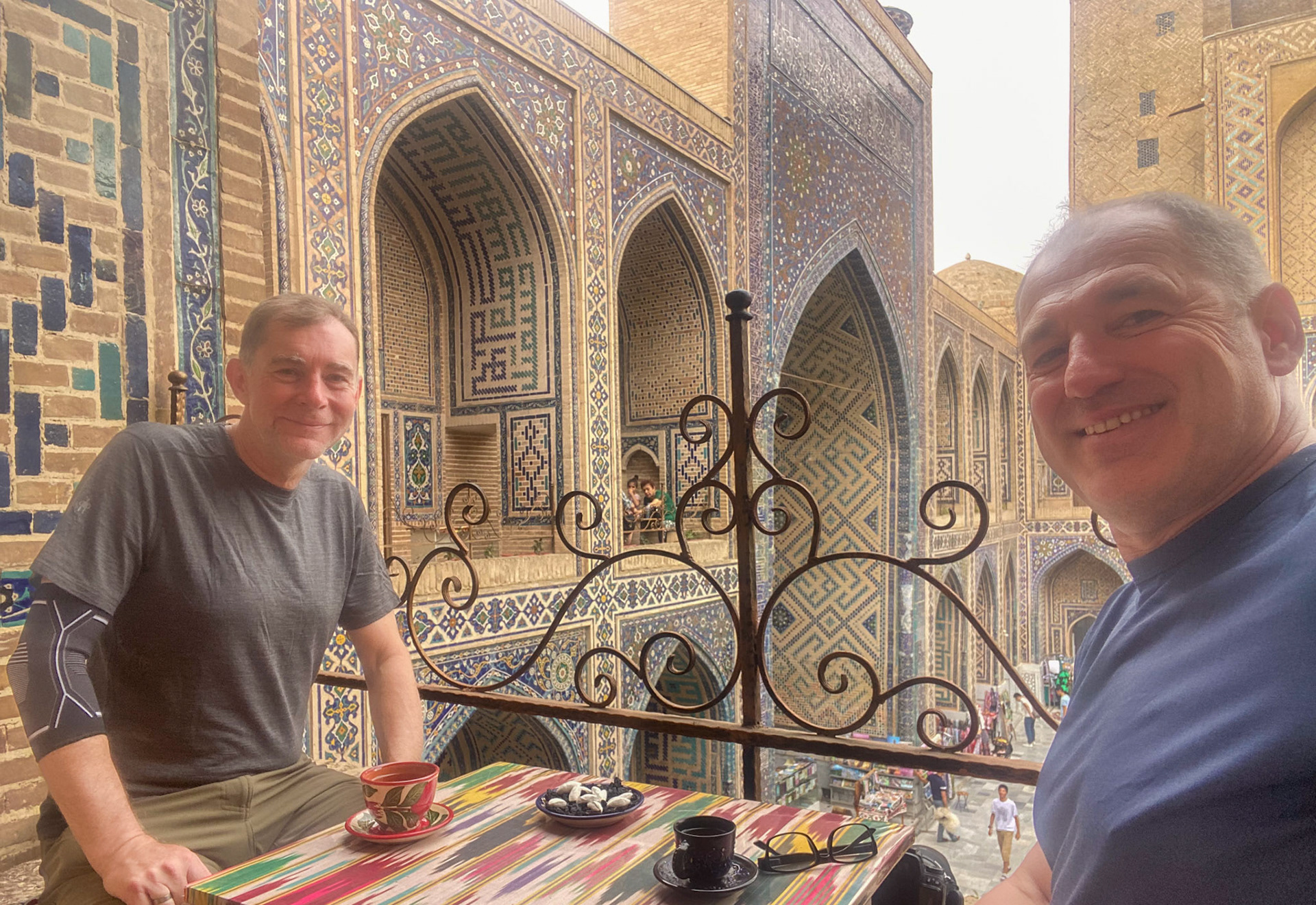
Having a cafe from inside a Madrasah, YES!
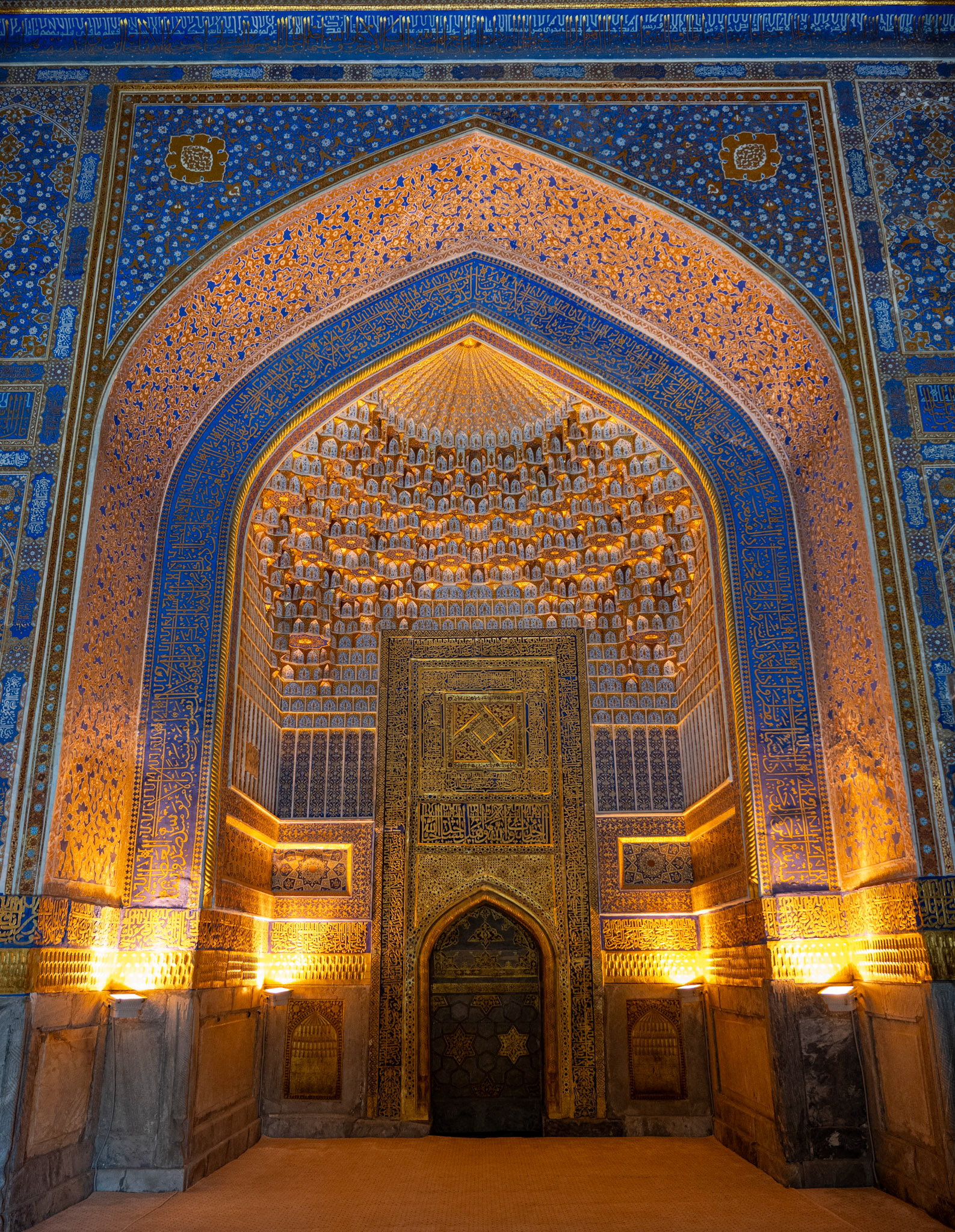
We were in awe inside the Tilla-Kori madrasah/mosque, inside the Registan. So refined, so beautiful 🤩
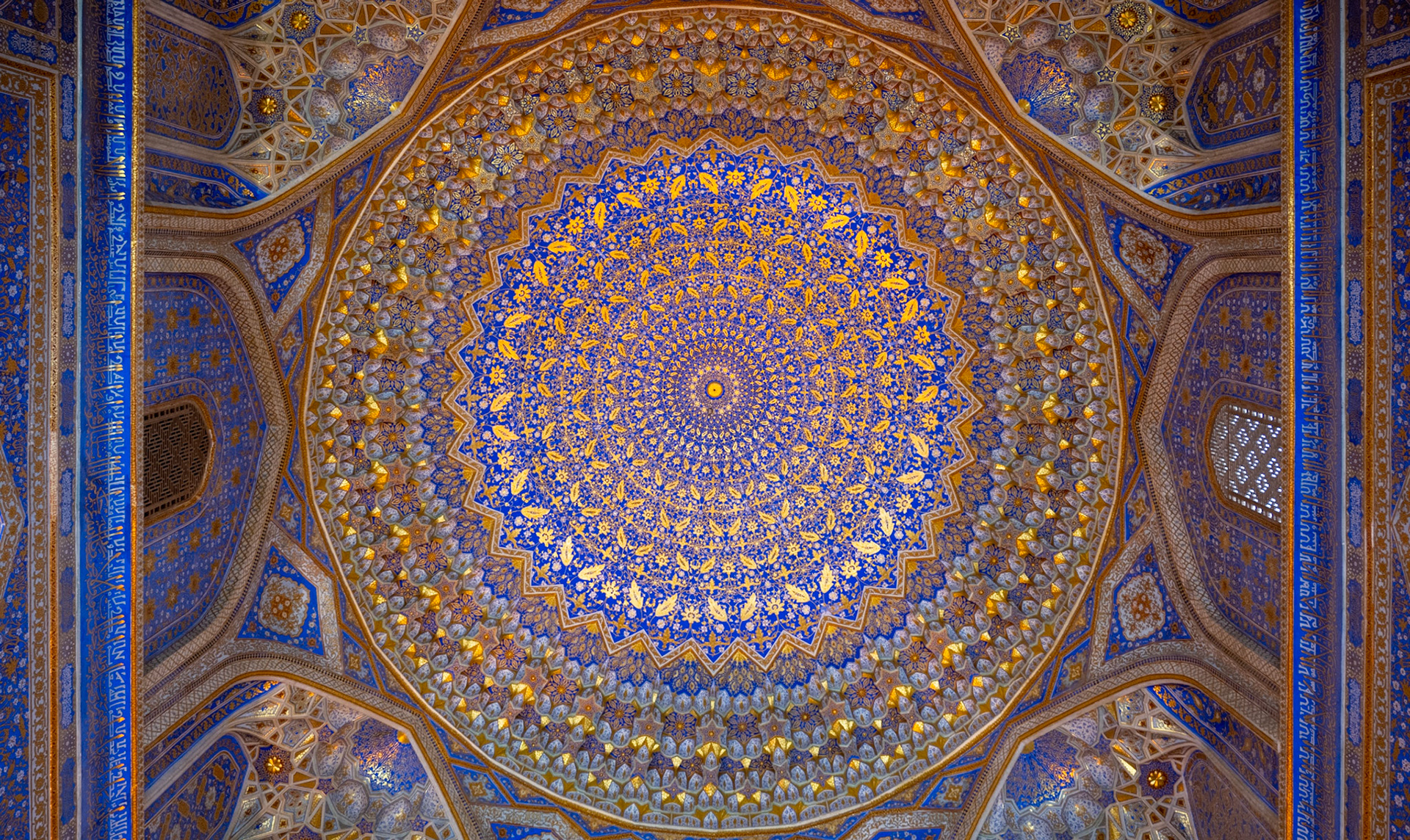
The interior of the dome of the Tilla-Kori madrasah/mosque, inside the Registan
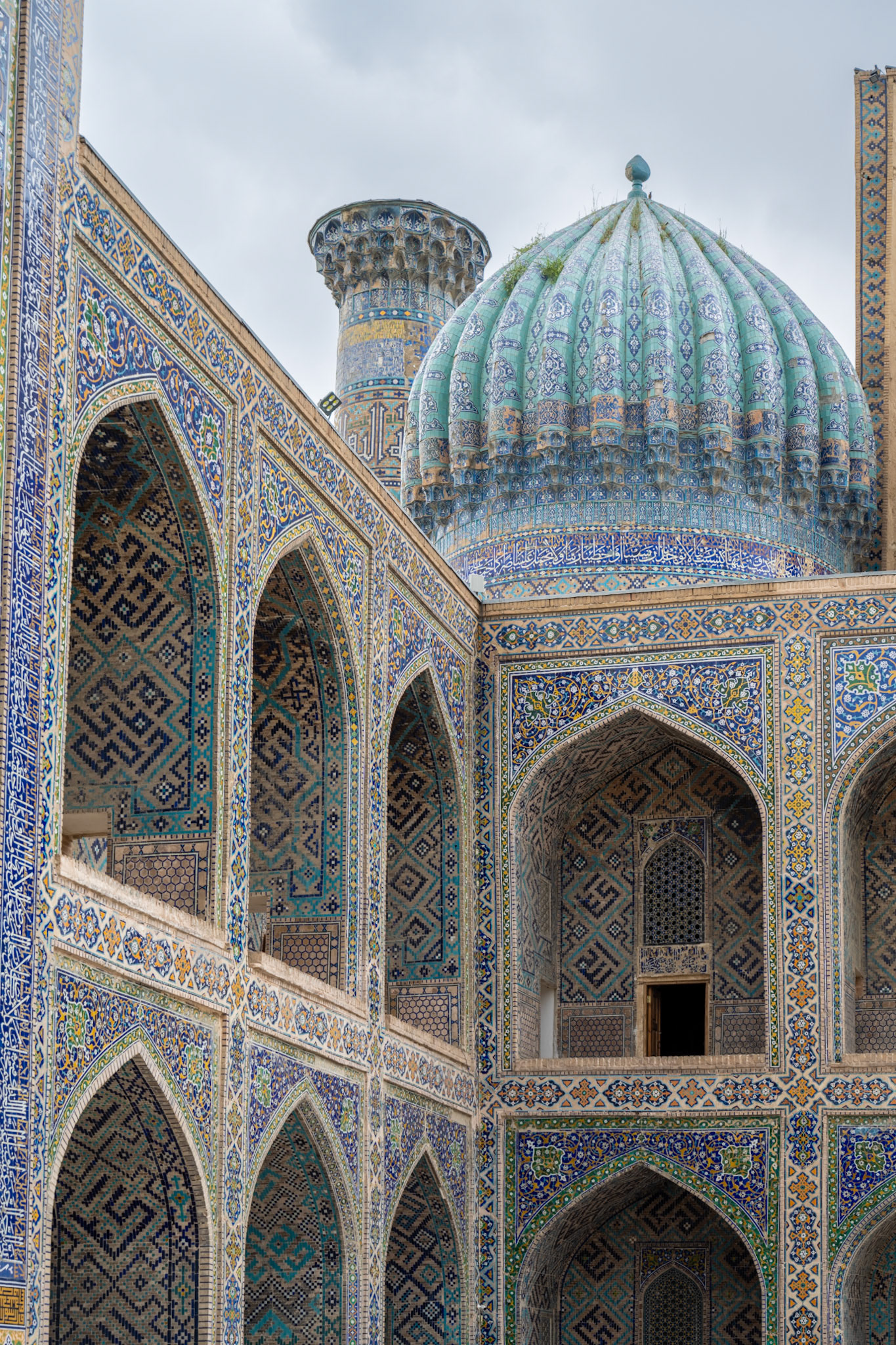
From the inside of one of the Madrasah. So rich, so unique, especially the dome!
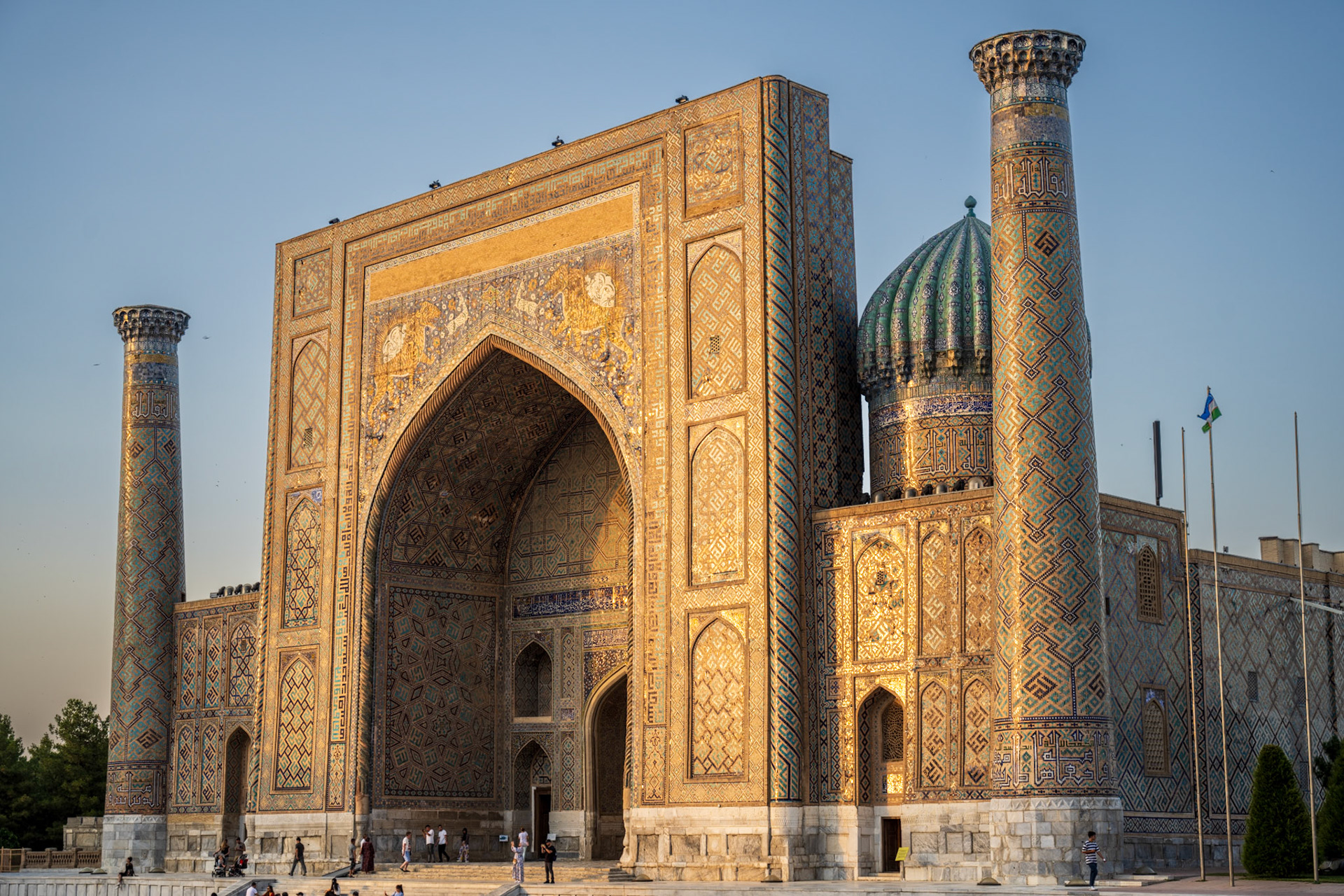
The East building of the Registan illuminated by the sunset
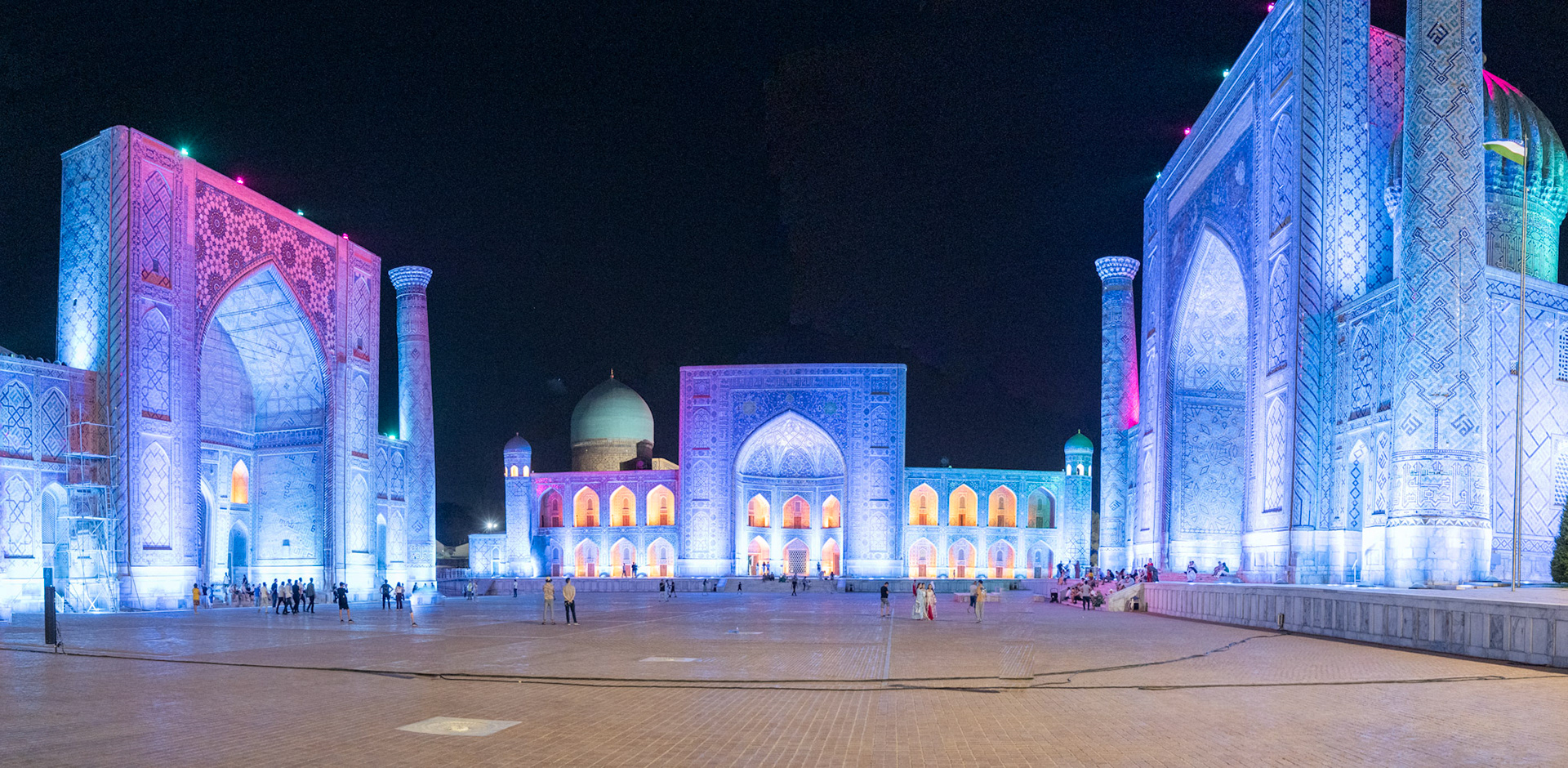
On that night, there was a captivating lighting show
Day 48-49 - Samarkand
As we near the end of our time in Samarkand and Uzbekistan, with our journey taking us to Tajikistan tomorrow, I would like to share a glimpse of two sites that left a lasting impression on us: the Bibi Khanym Mosque and the Shah-i-Zinda necropolis. These remarkable locations hold immense historical and architectural significance, and we were fortunate to have experienced their beauty firsthand.
The Bibi Khanym Mosque stands as a testament to the grandeur and power of the Timurid Empire and is one of the most important monuments of Samarkand. Amir Timur wanted to make it into the most magnificent mosque of the Islamic world.
However, Timur got a bit too ambitious. He wanted to go too big too fast. He pushed the building techniques of that time to their limit and encountered so many structural problems that the mosque wasn’t built to last. The mosque is now slowly getting restored (with proper building techniques…), but the scale is absolutely mind-blowing with the dome / coupole standing at more than 40m high!
Shah-i-Zinda is a necropolis from the 14th century that consists of rows of blue tombs and various mausoleums grouped along a narrow avenue. It’s the burial place of many royals and nobles, including a number of Timur’s relatives. I was captivated by the blue-tiled maze, and the terracotta tiles, carved before being glazed.
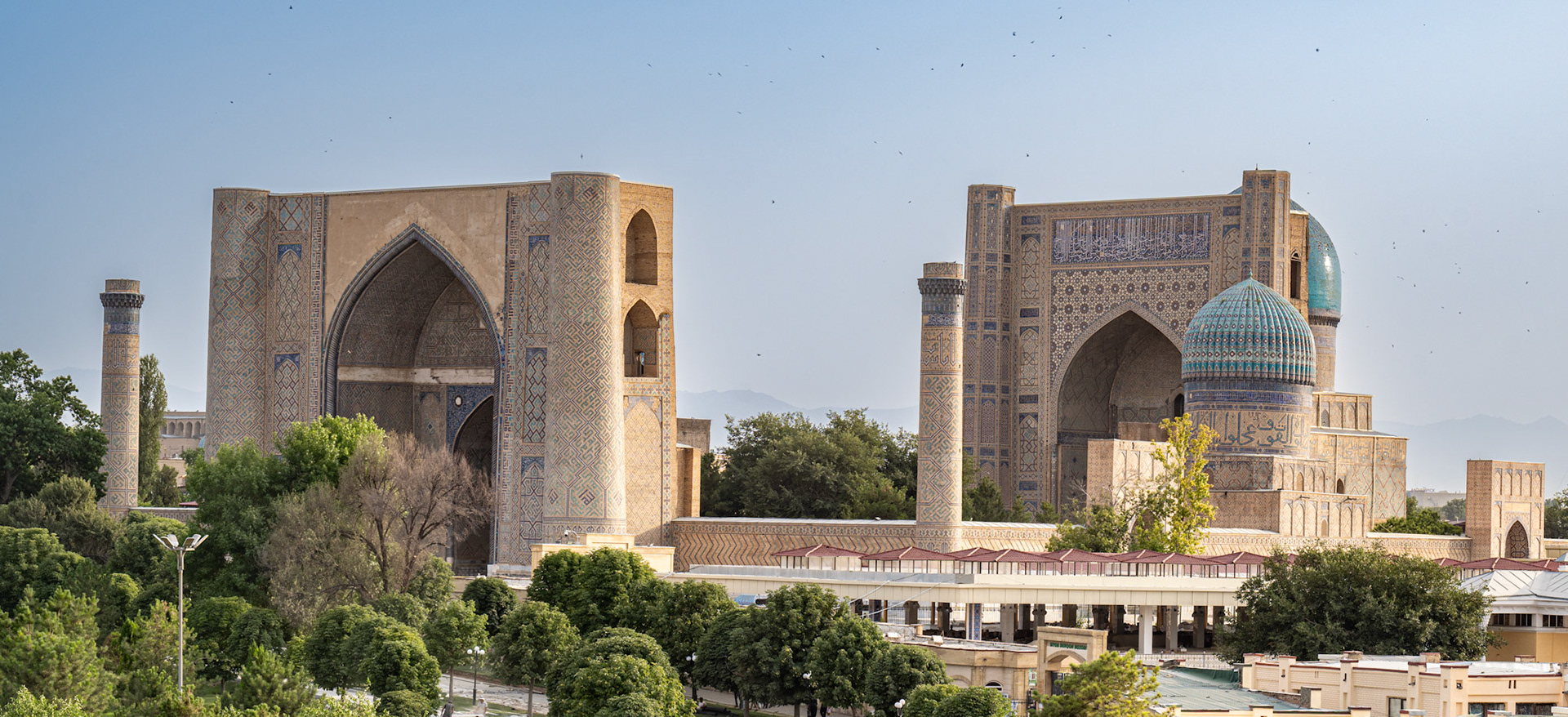
The Bibi Khanym Mosque is so huge that I could only photograph it from far away to capture it all!
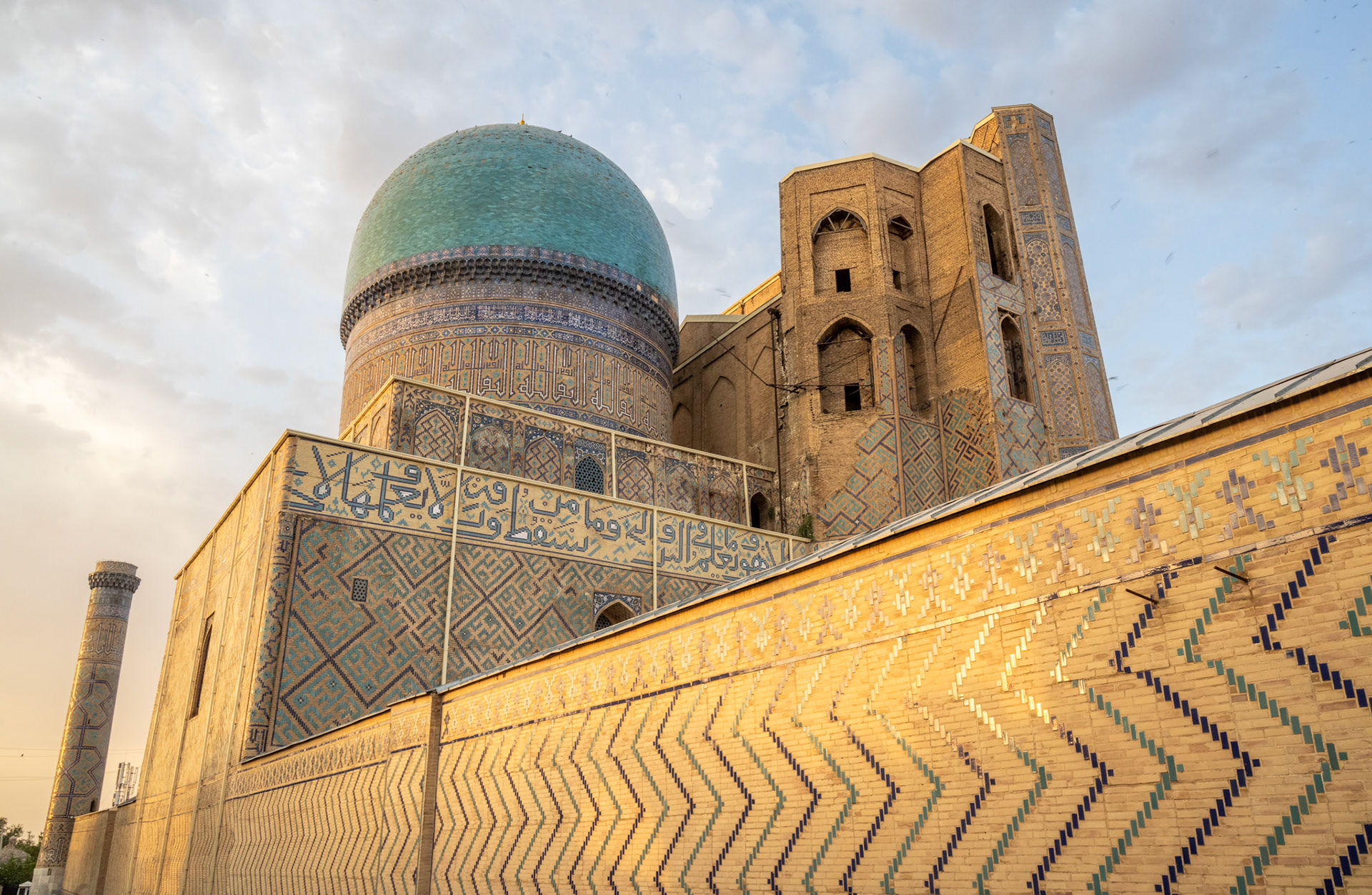
The Bibi Khanym mosque needs some renovation but standing close to this monumental edifice left us in awe
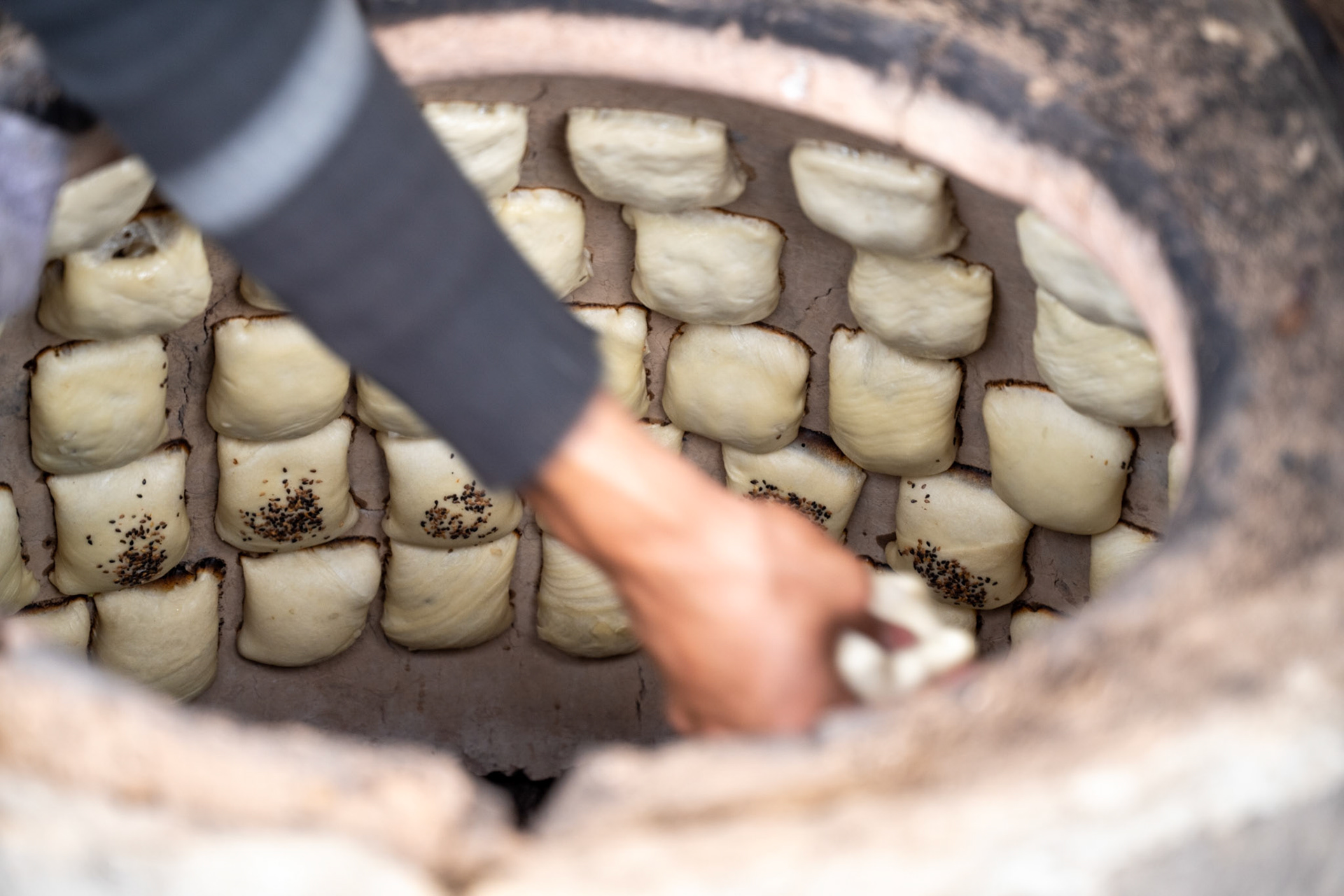
Cooking samsas (~samosas) between two visits
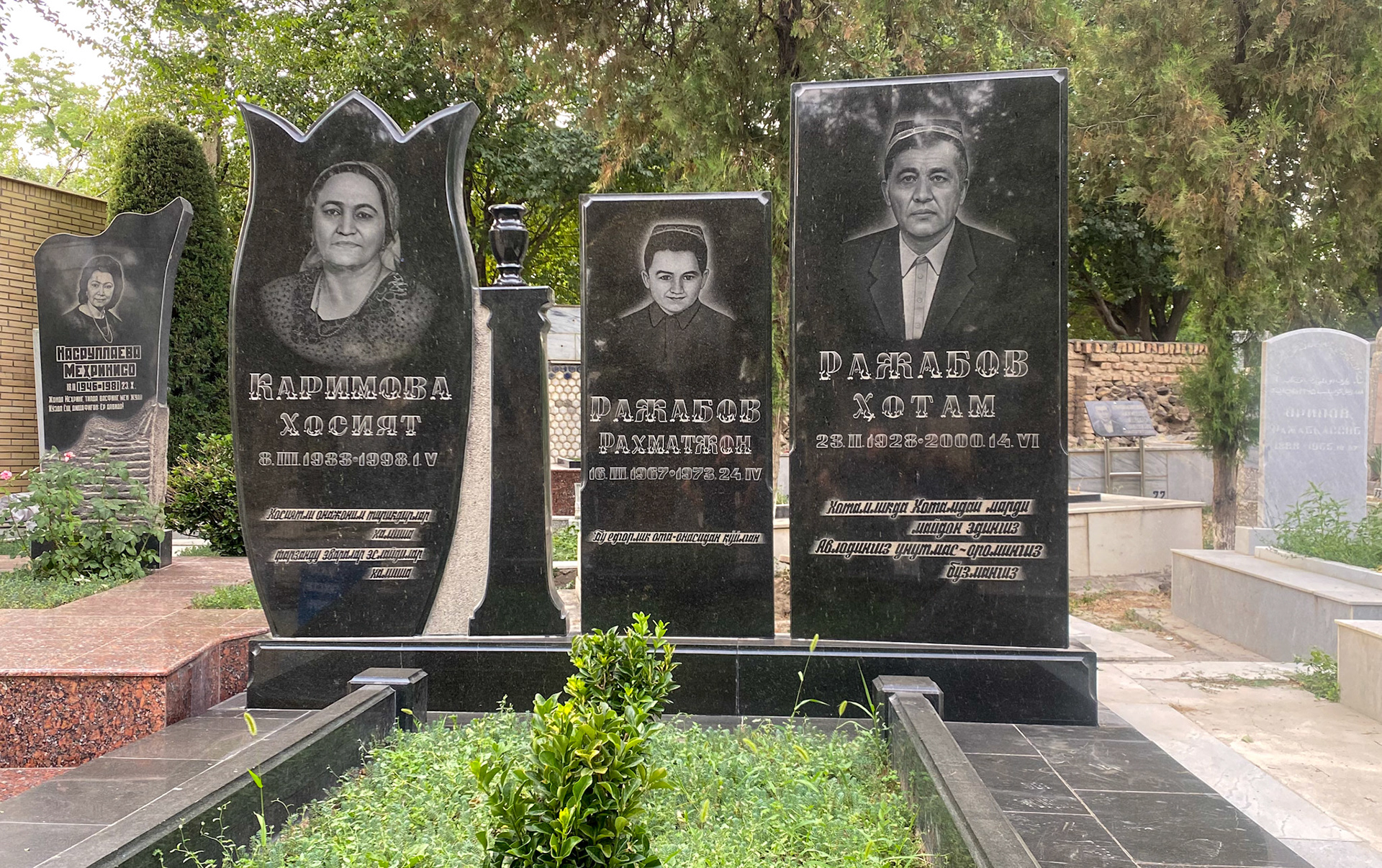
We've seen similar tombs with "pictures" in the countries on our way
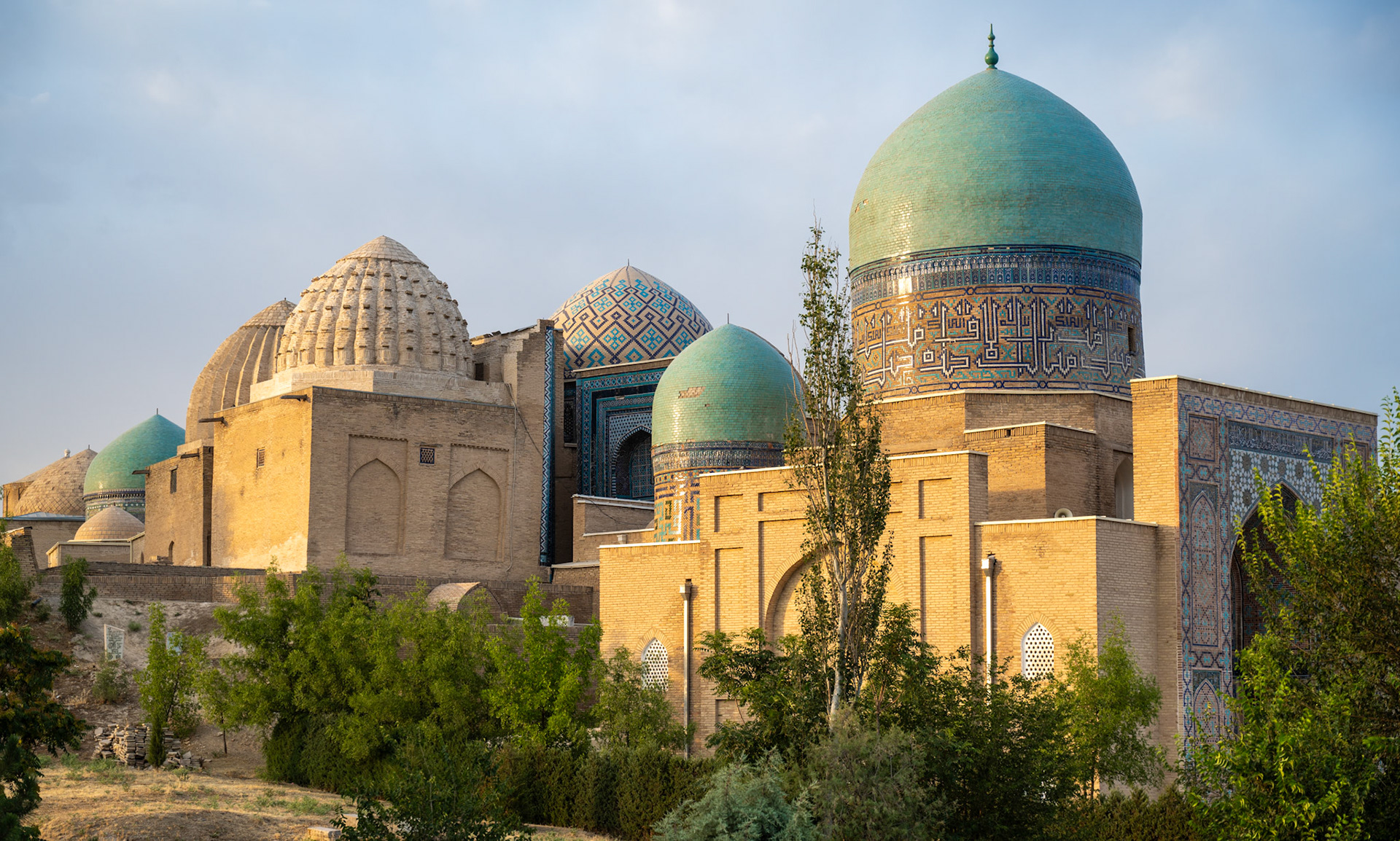
The entrance door of the Shah-i-Zinda necropolis from the 14th century
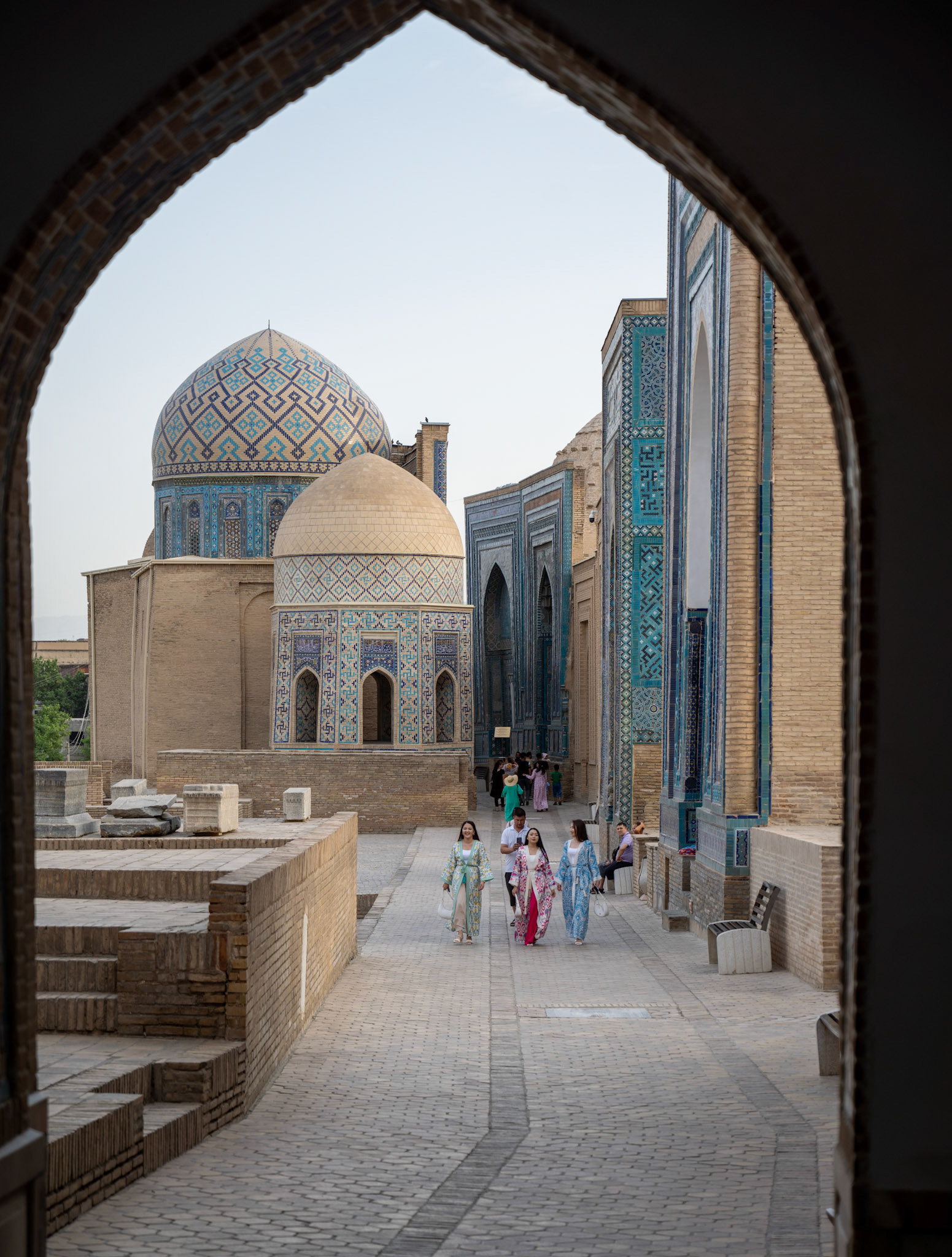
Shah-i-Zinda. Rows of blue tombs and various mausoleums grouped along a narrow avenue
